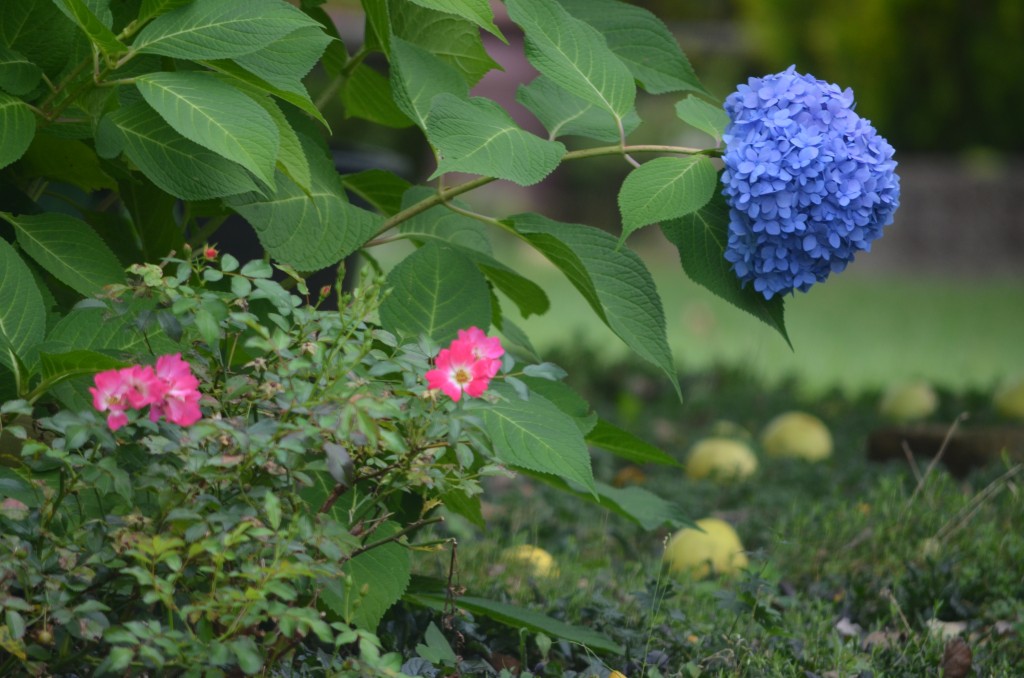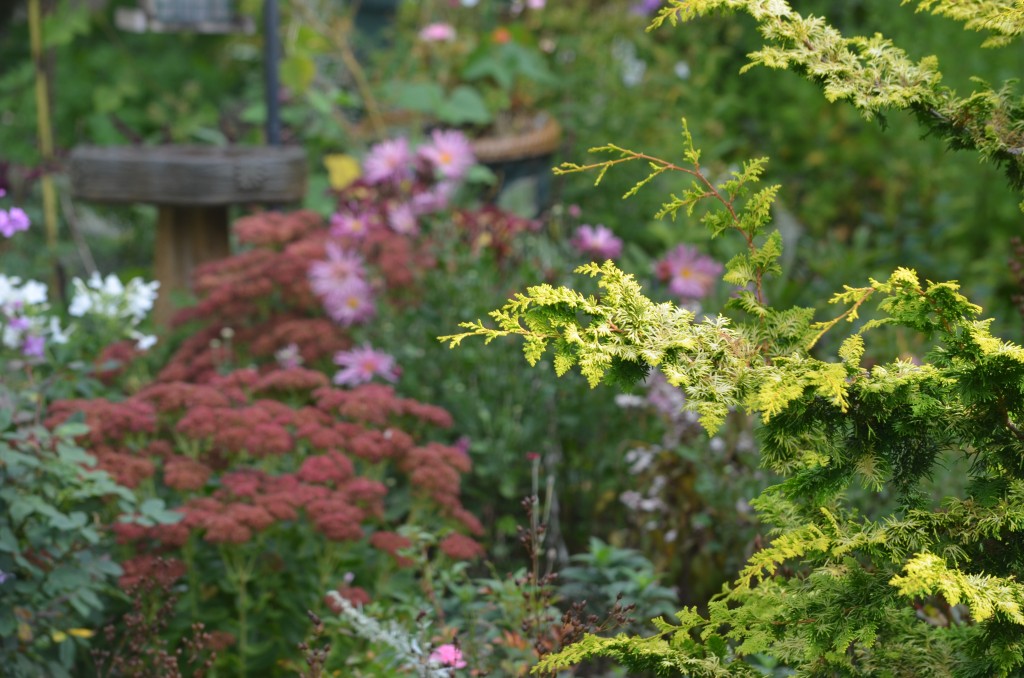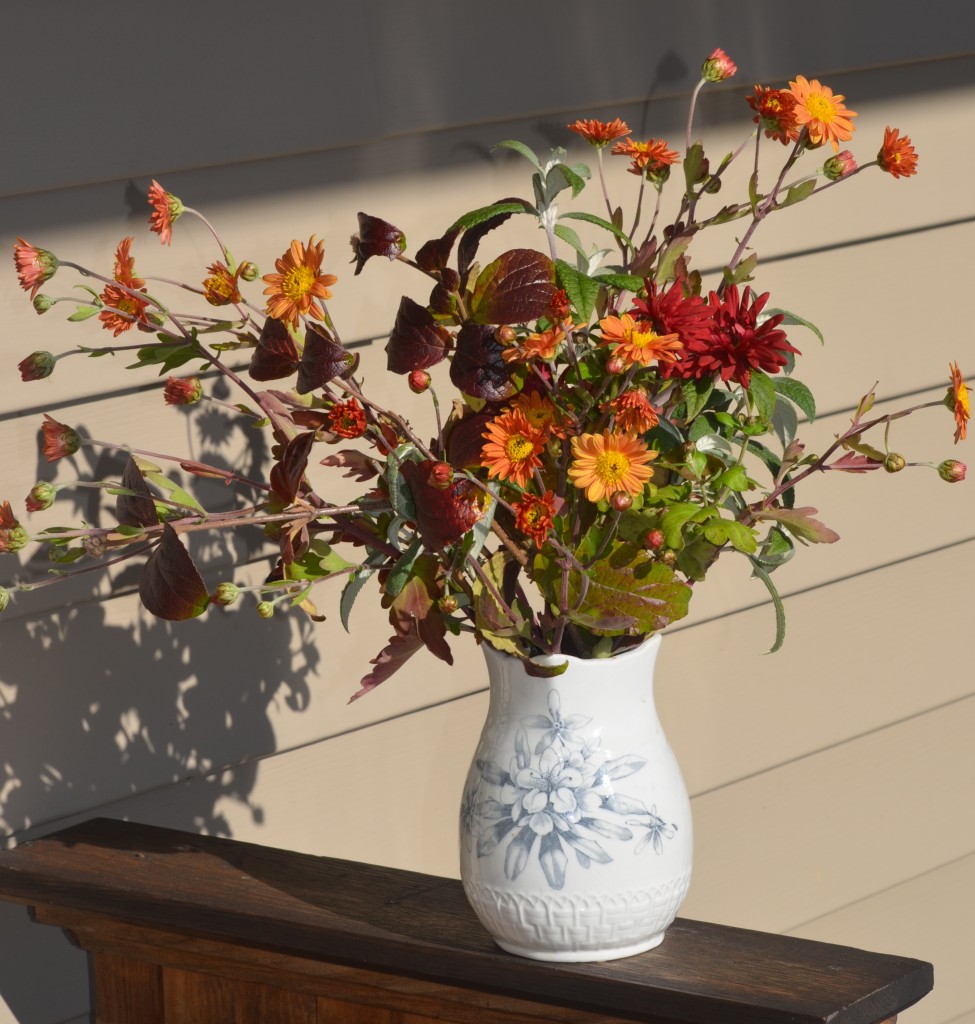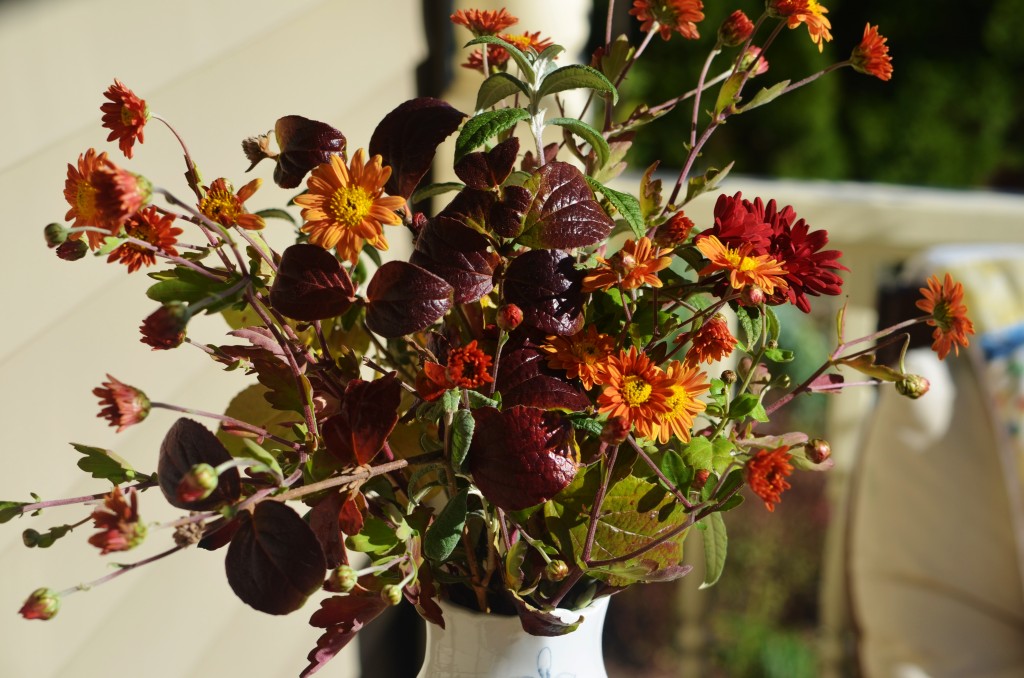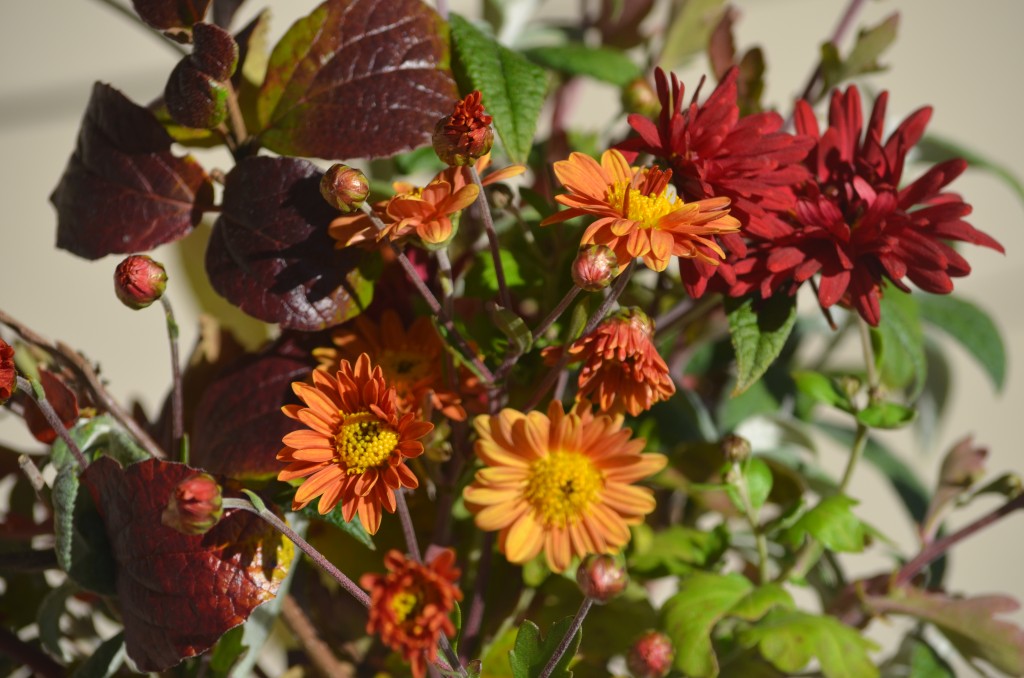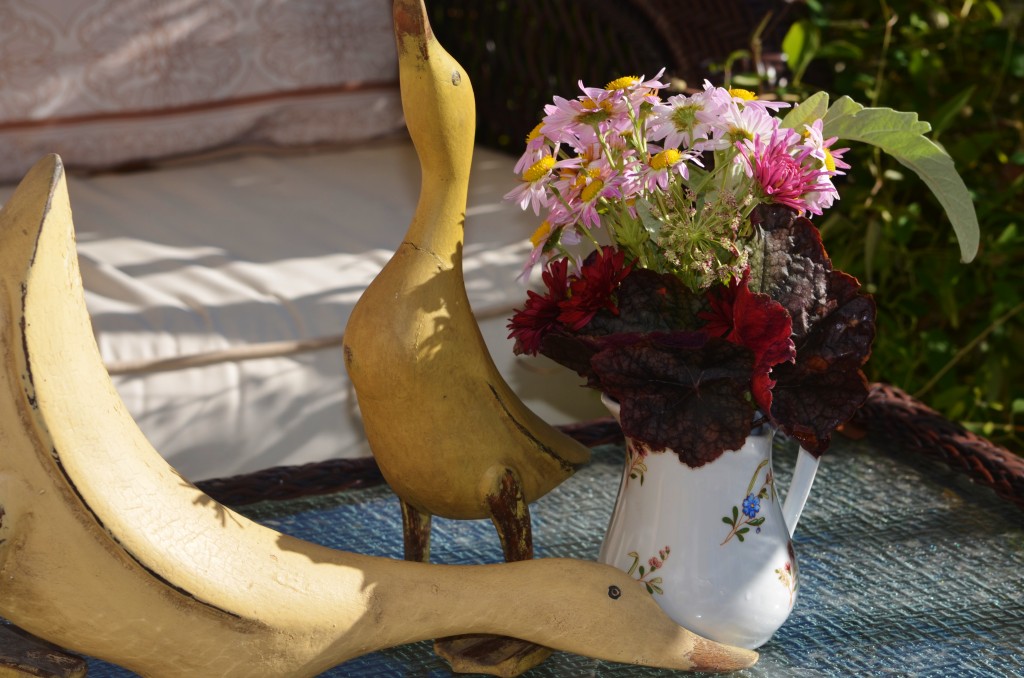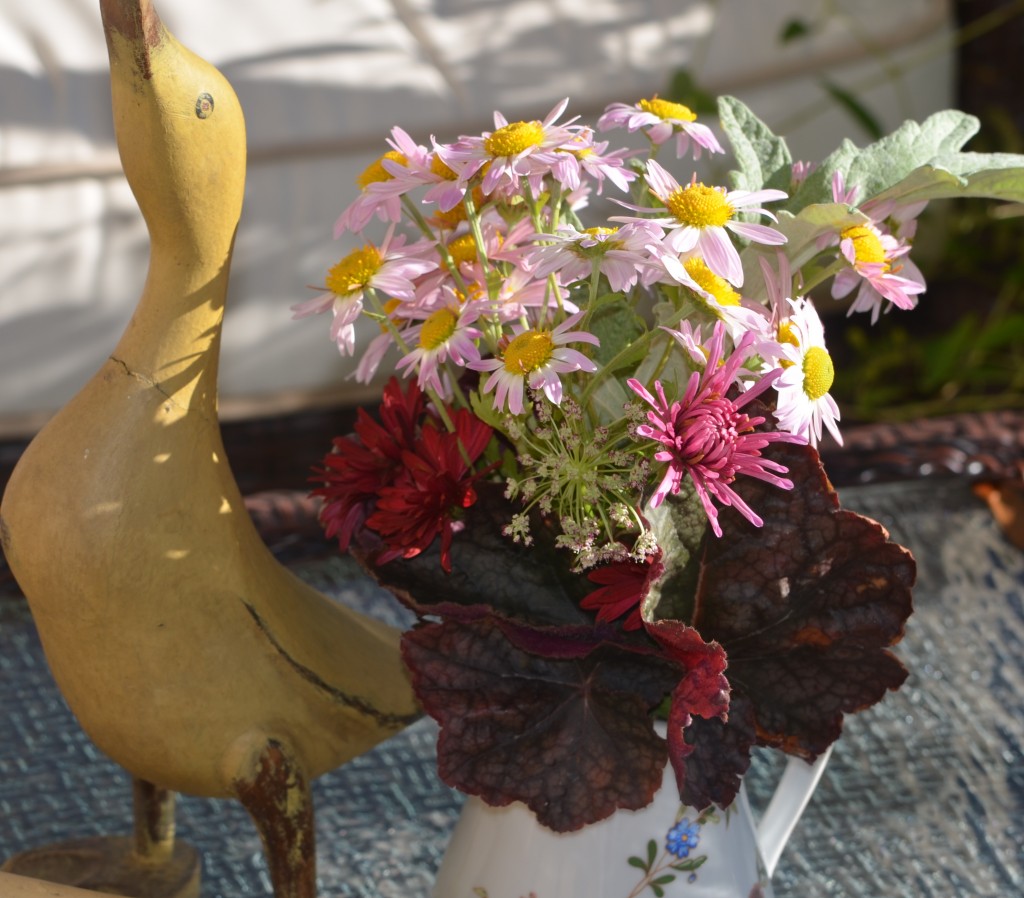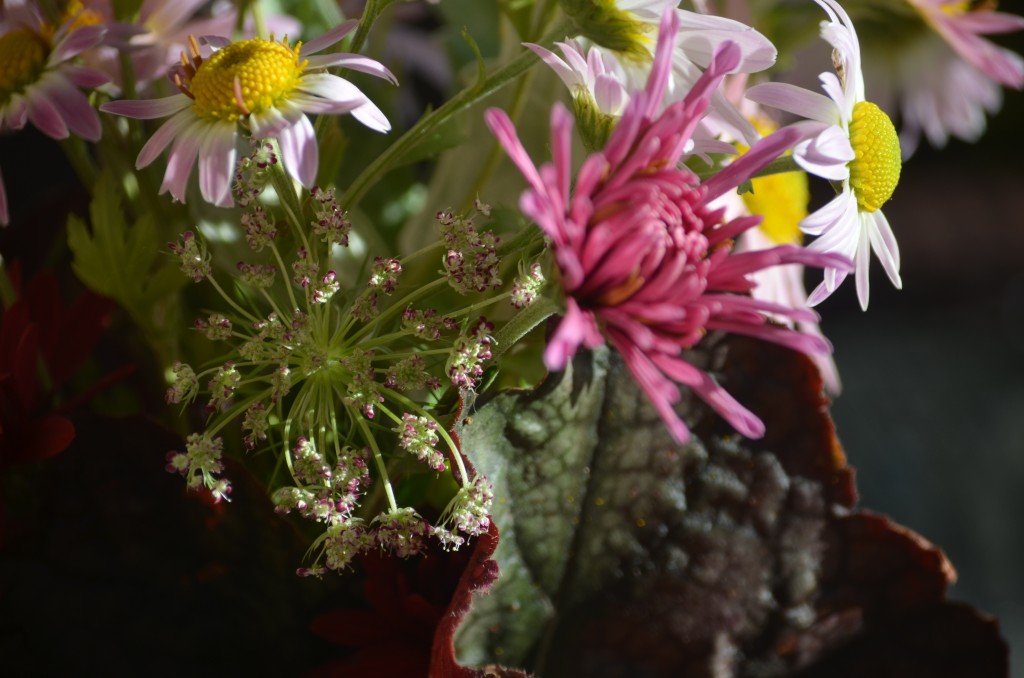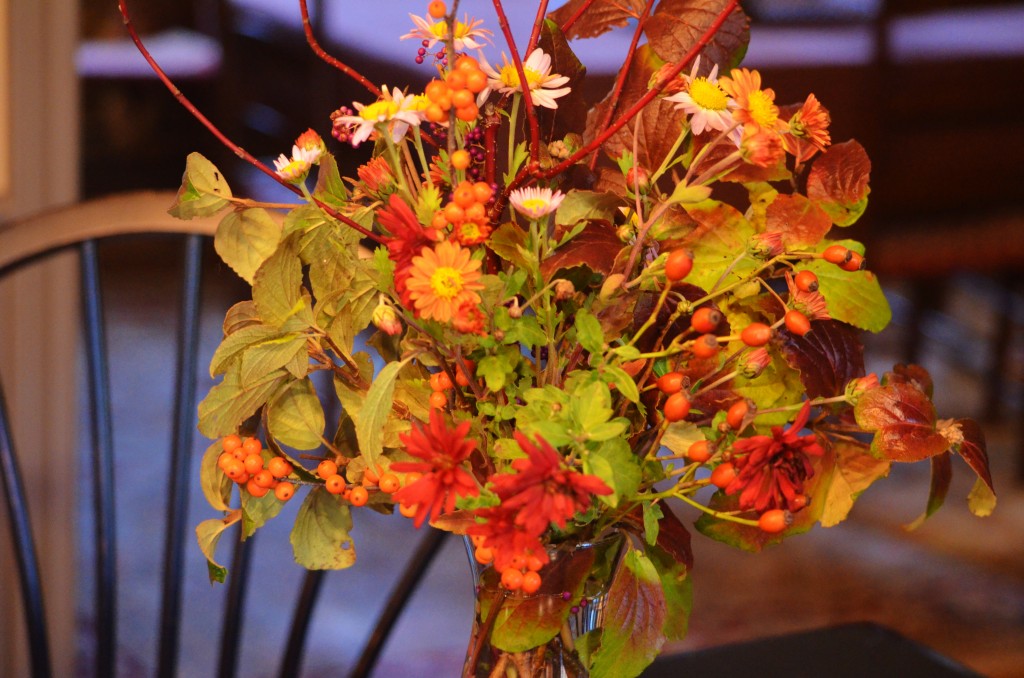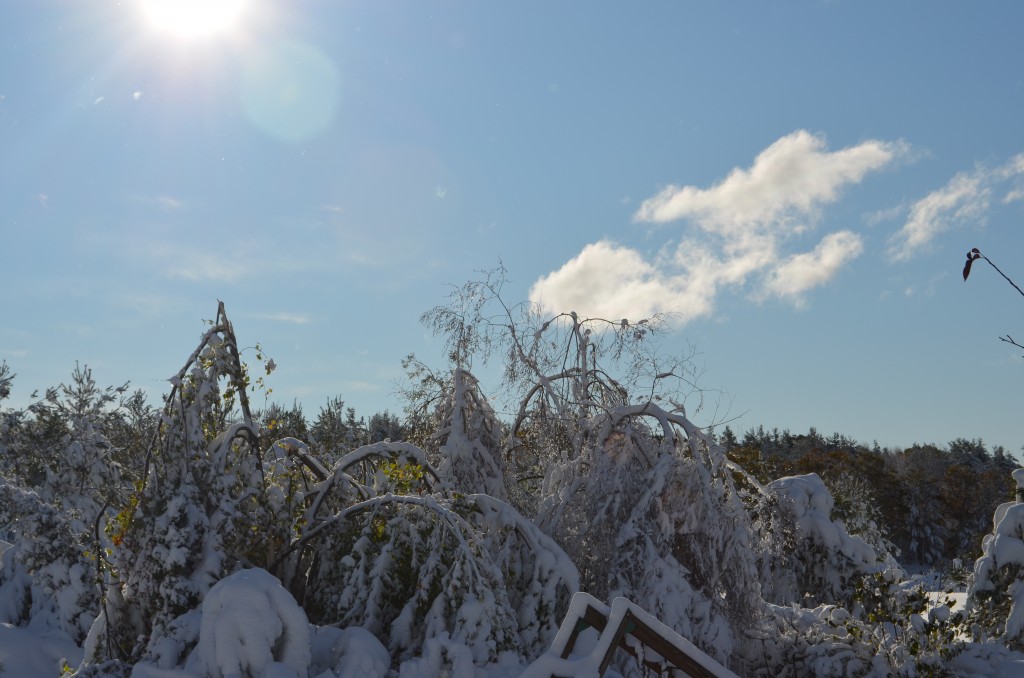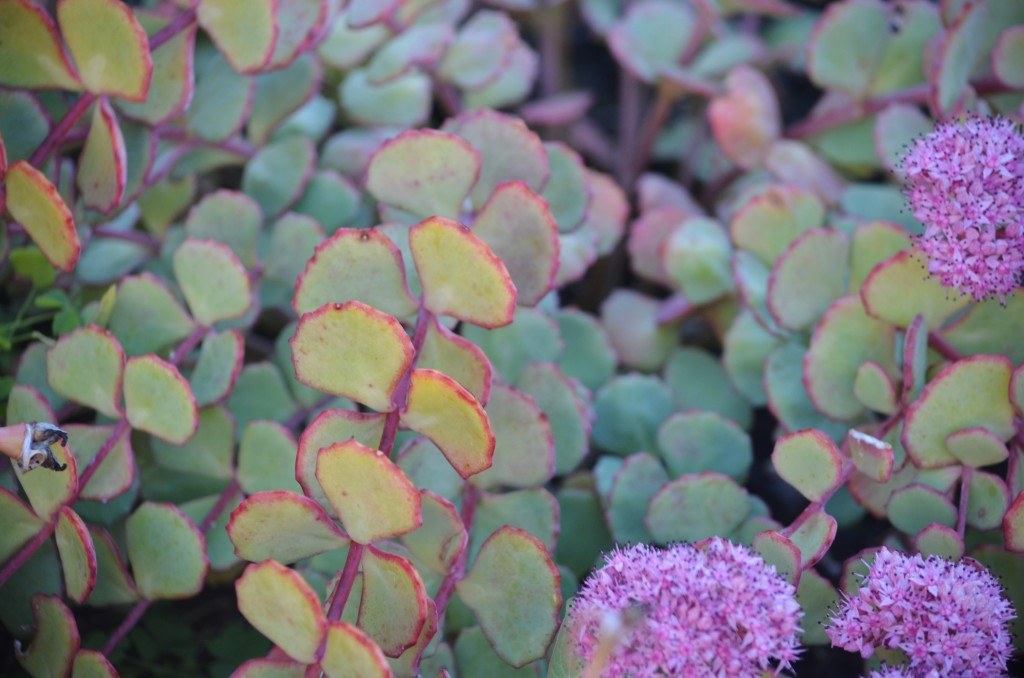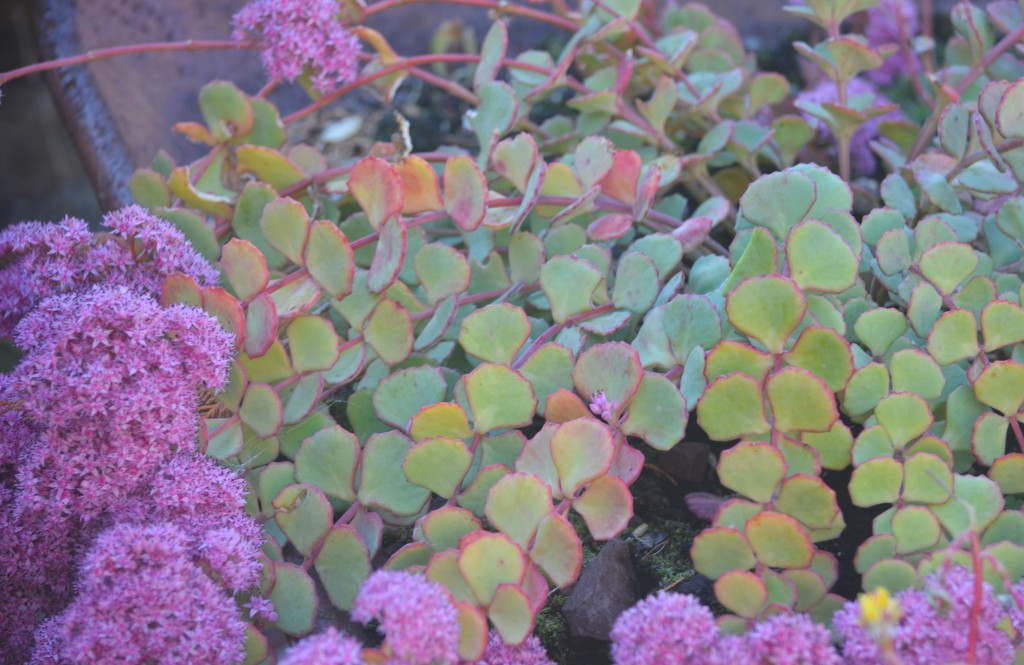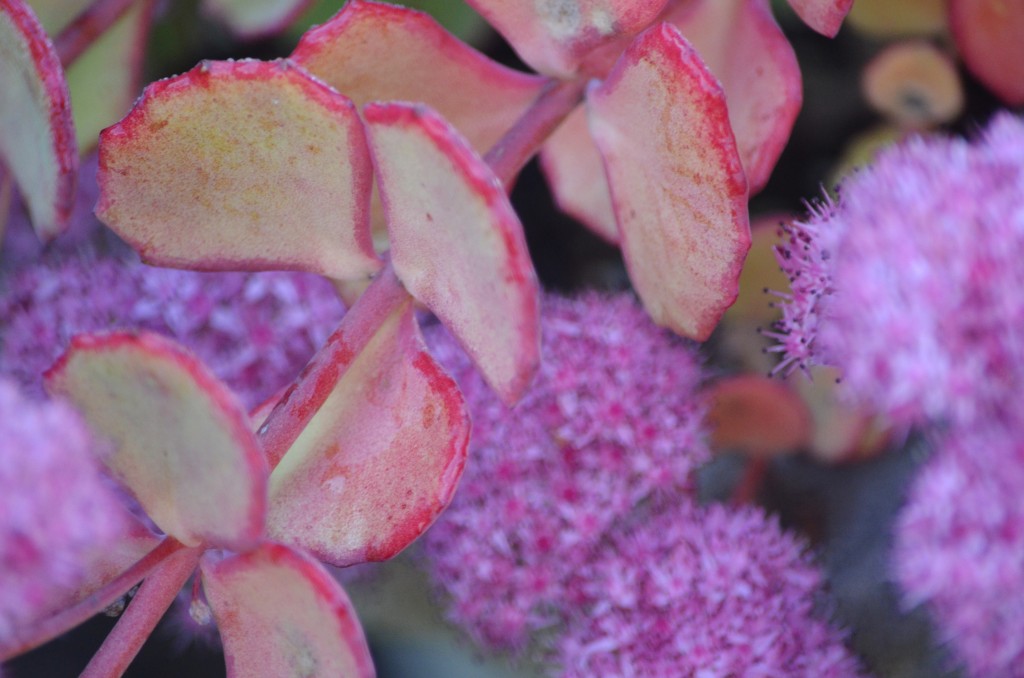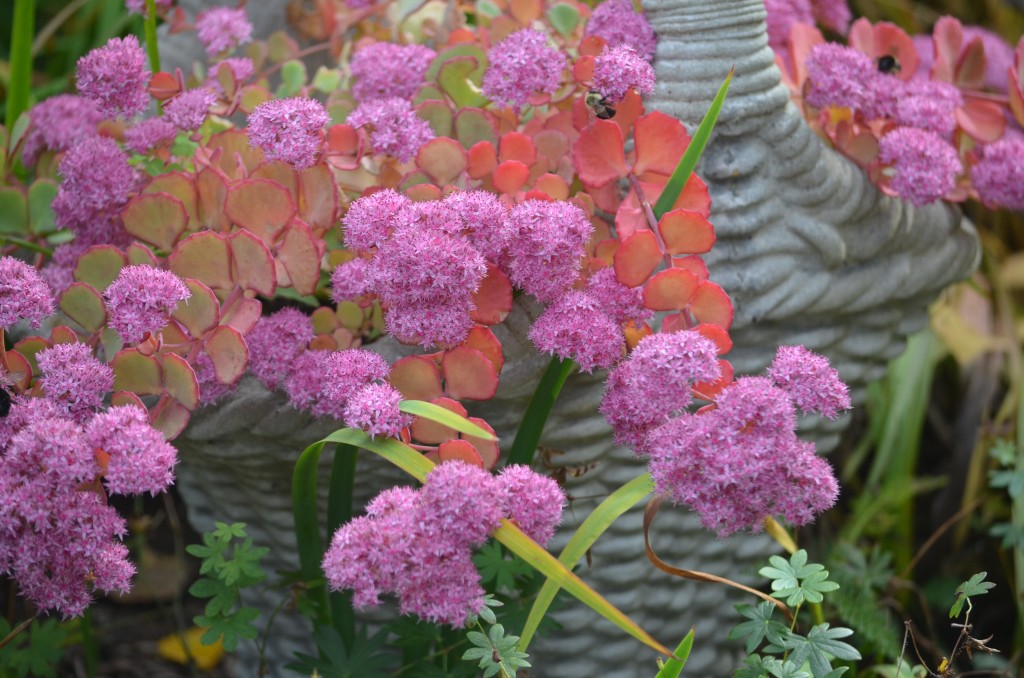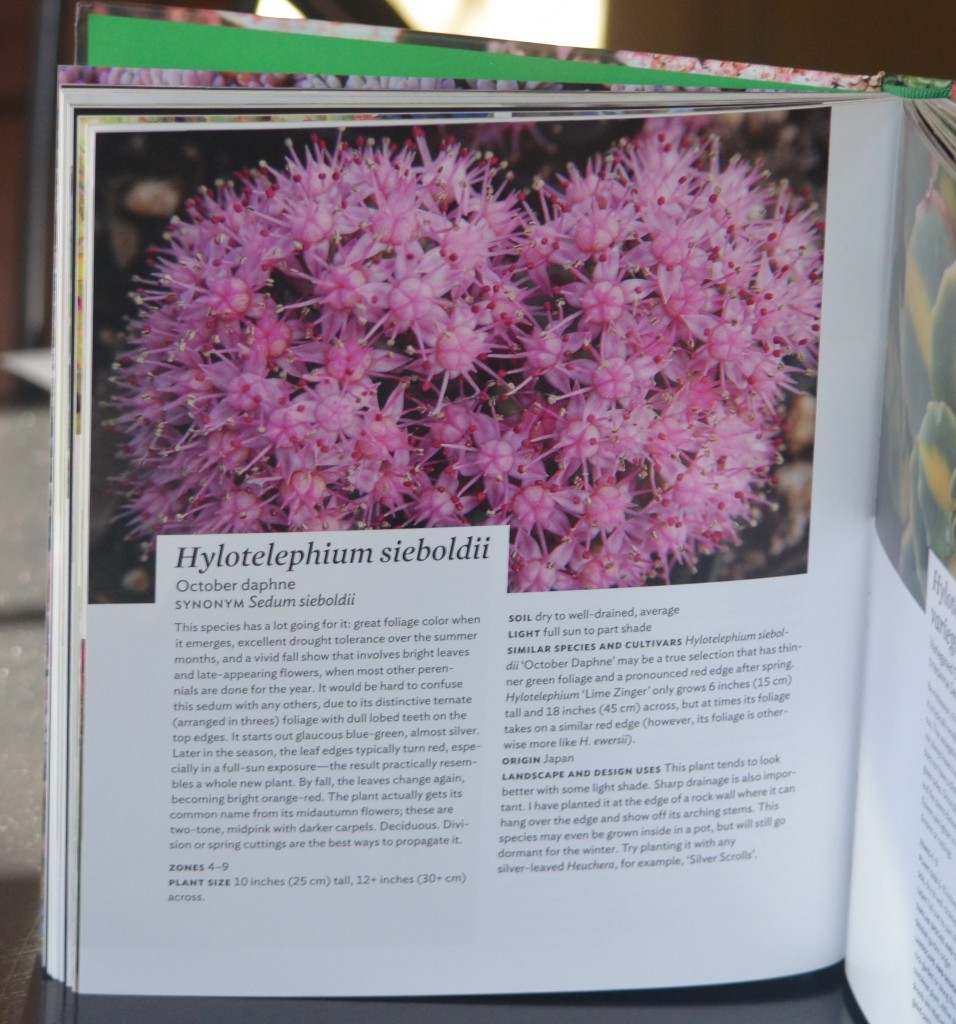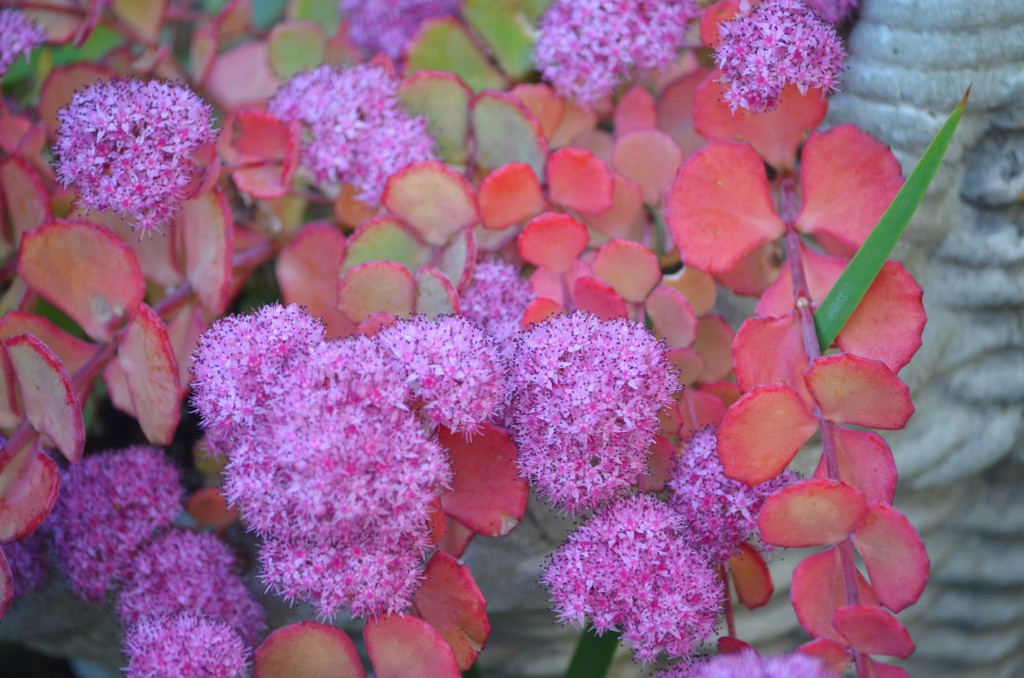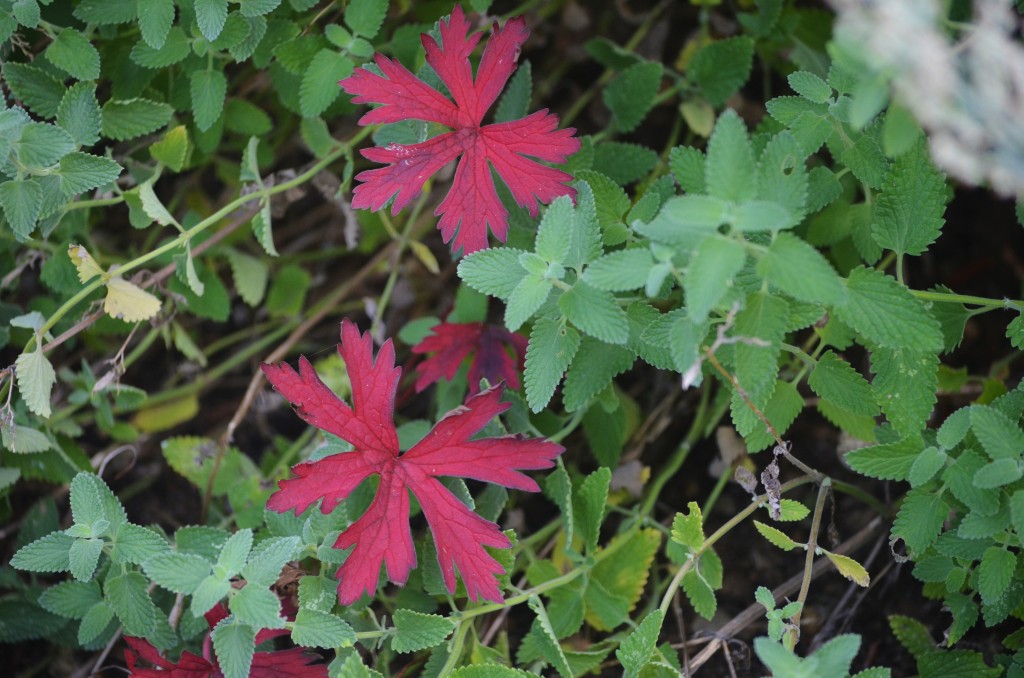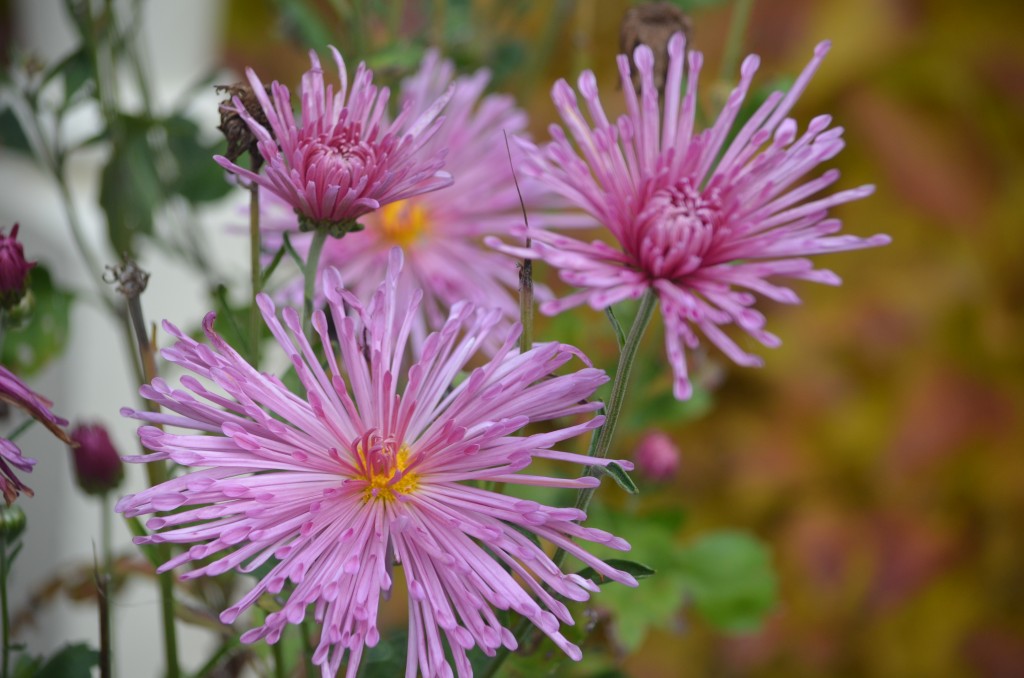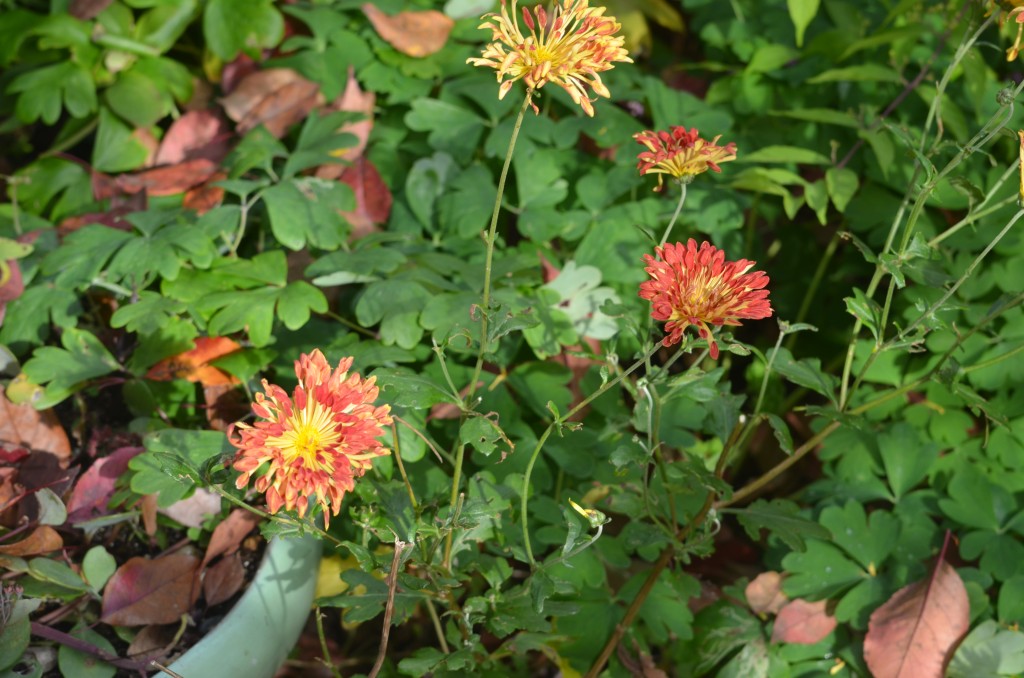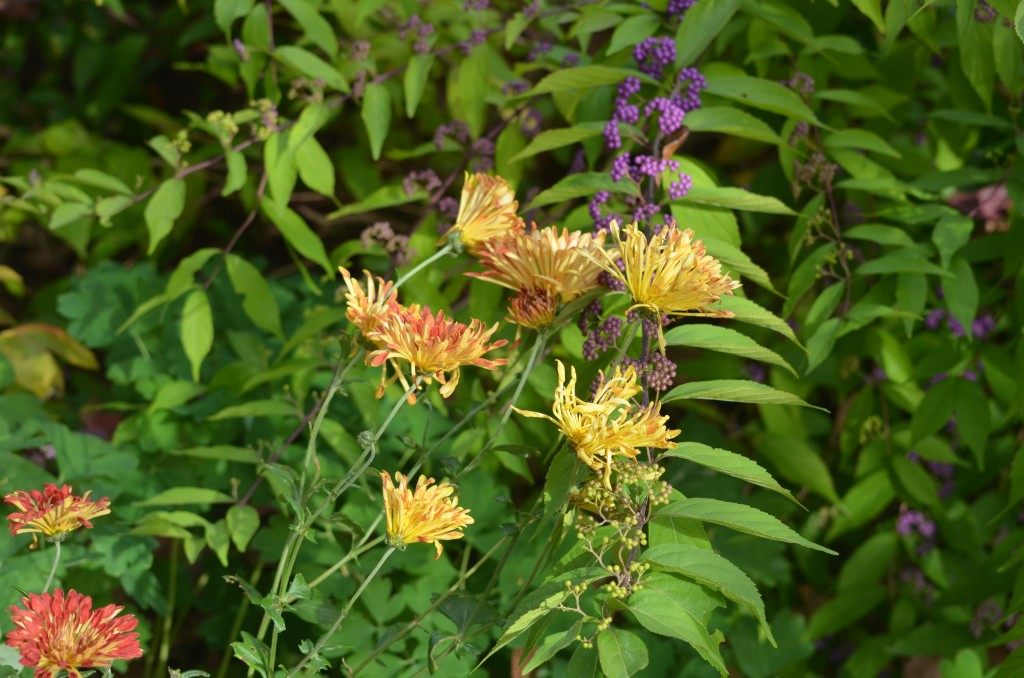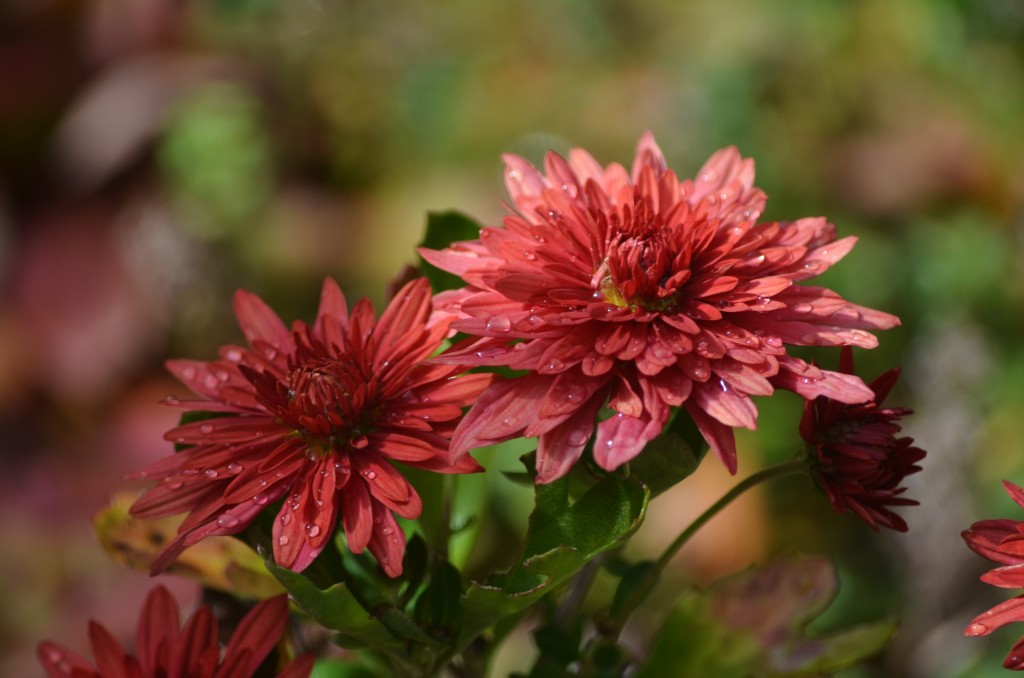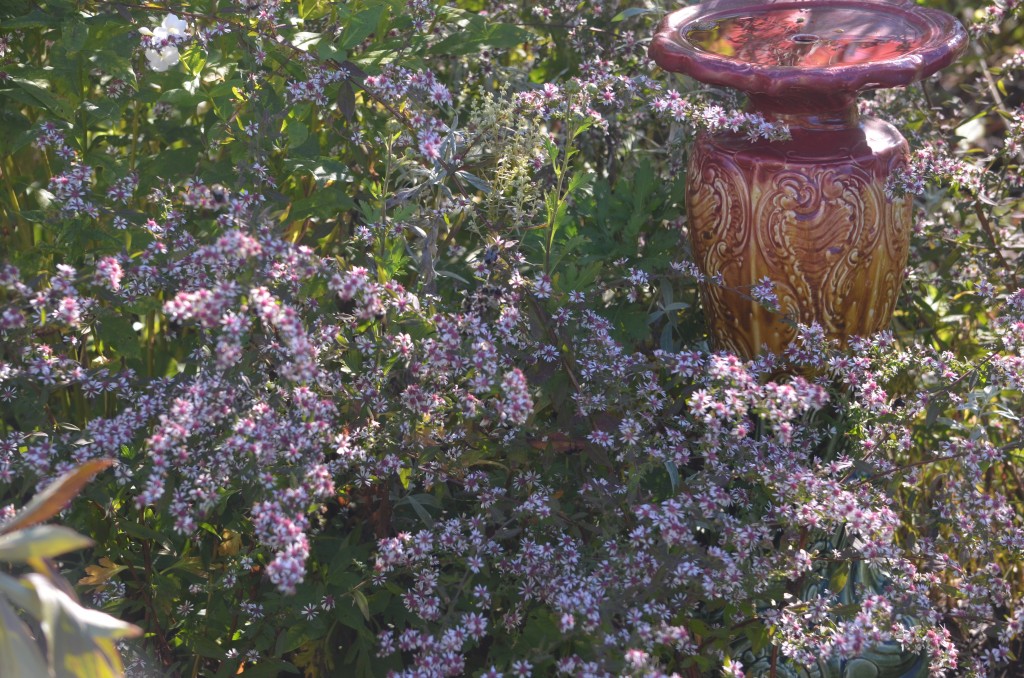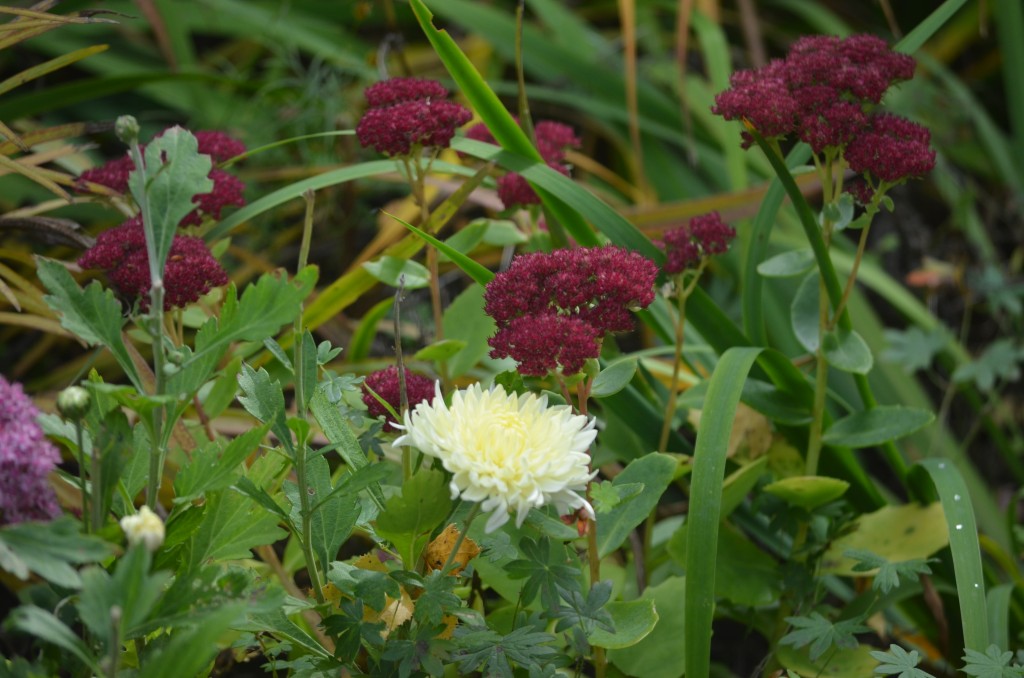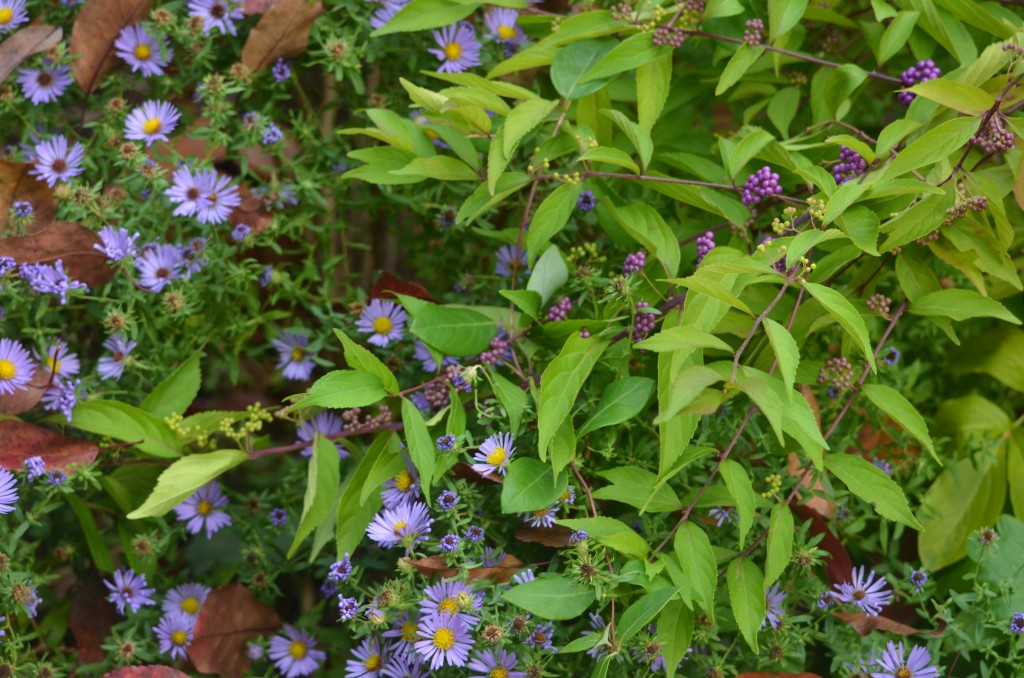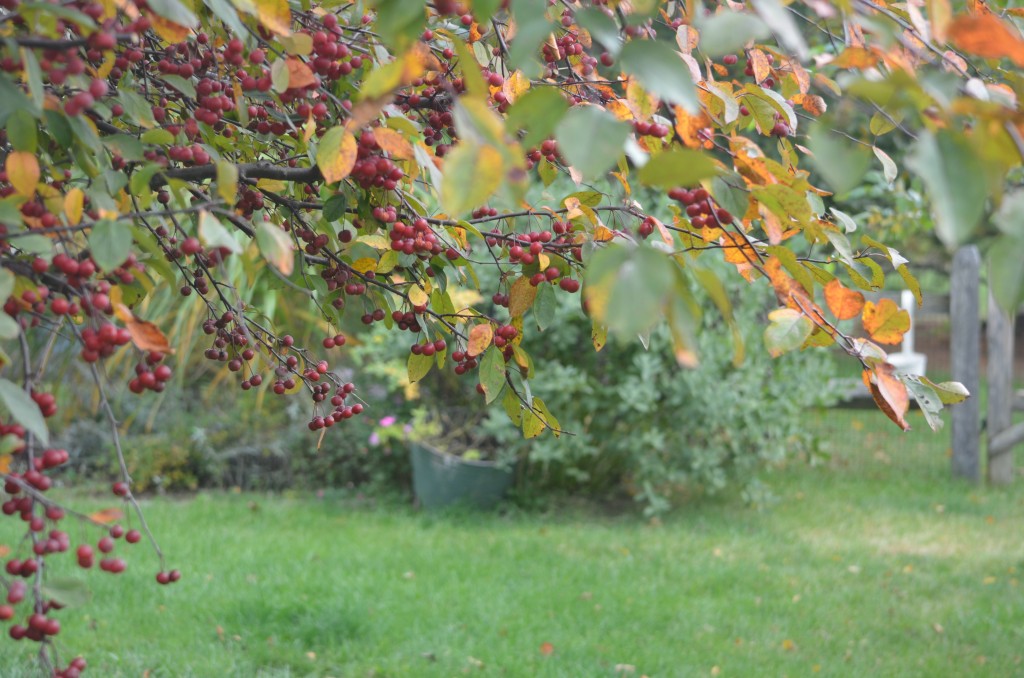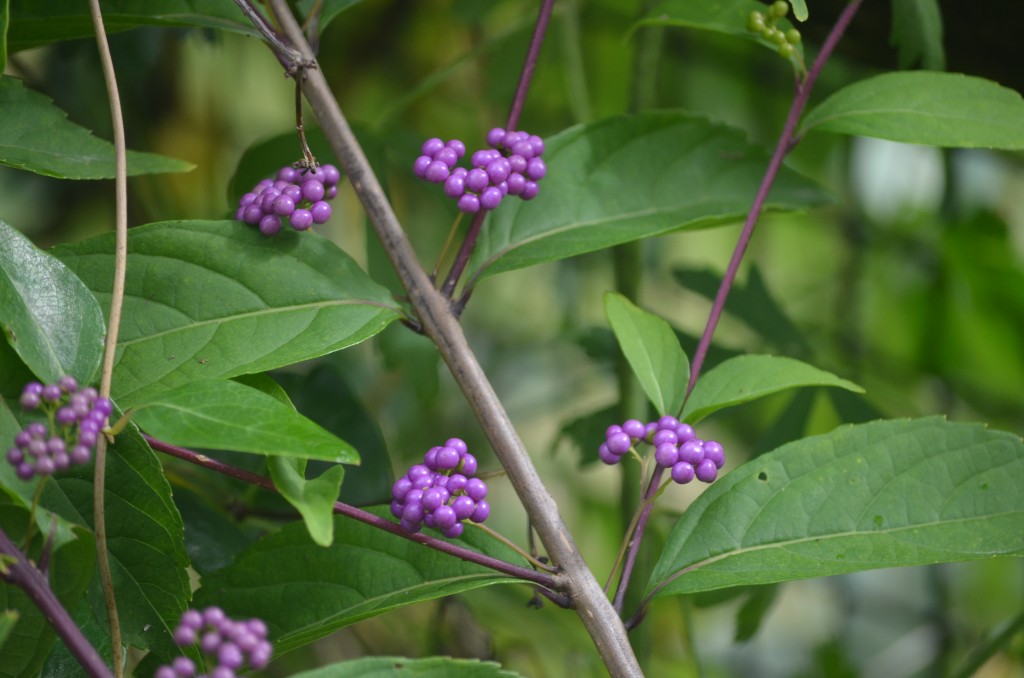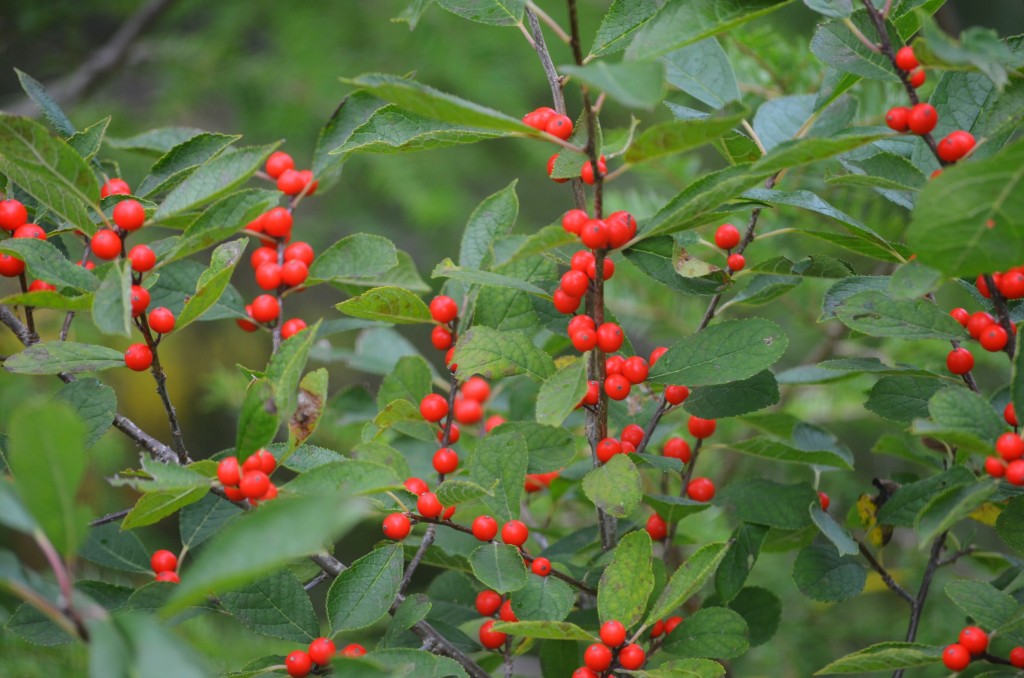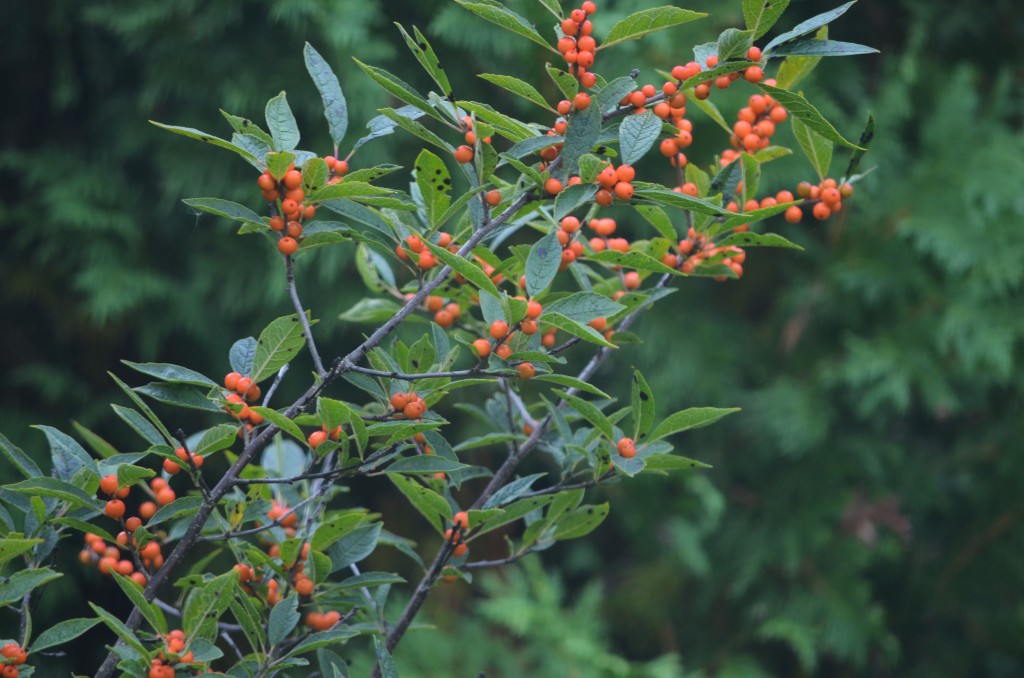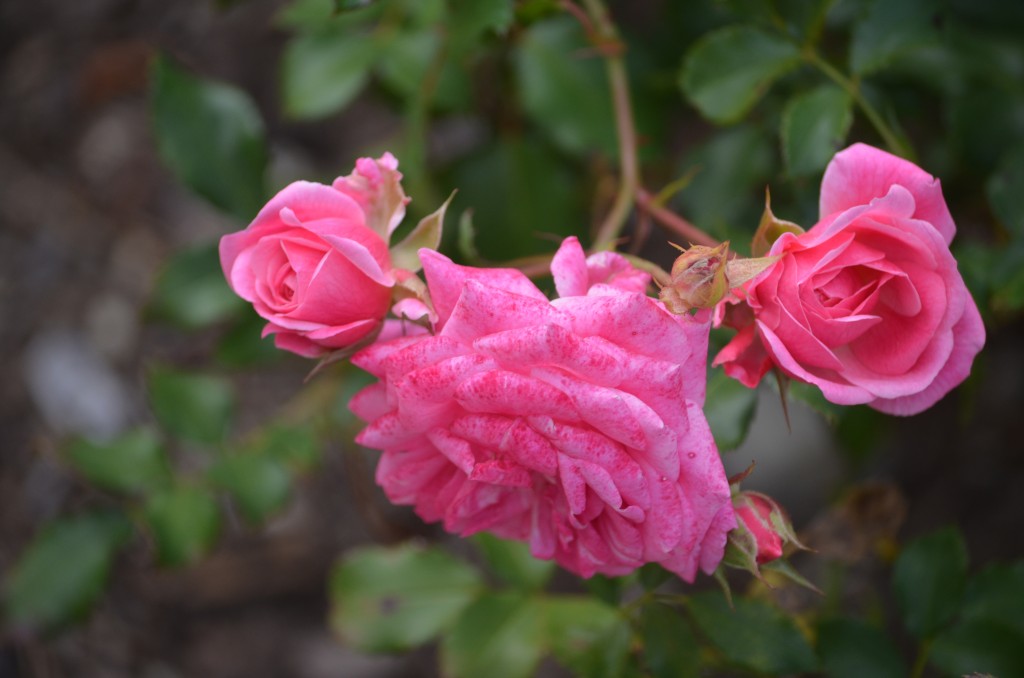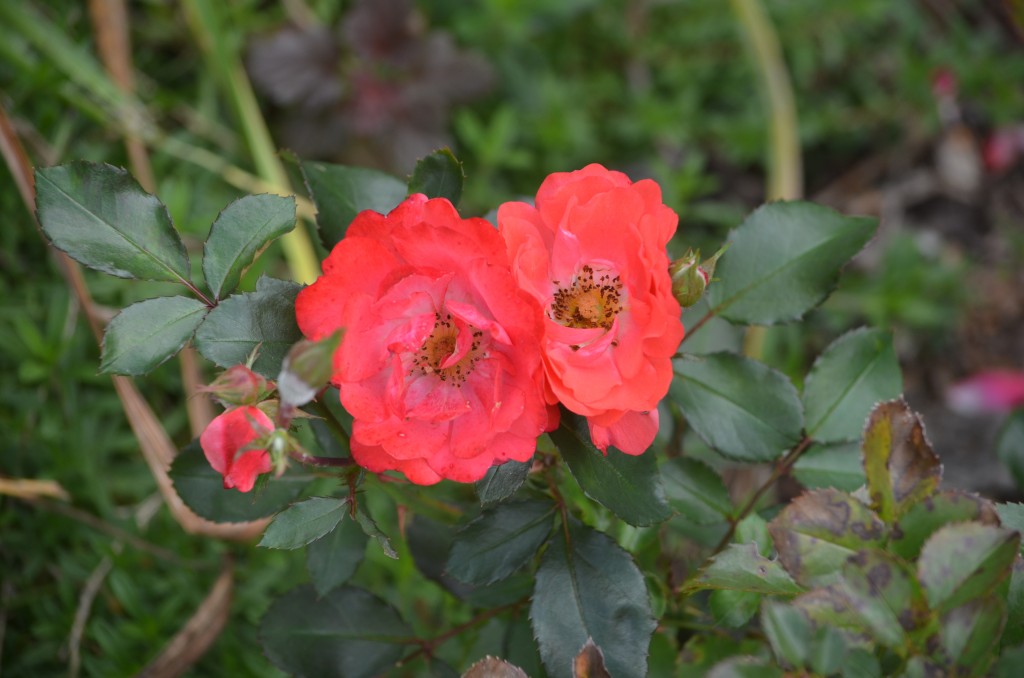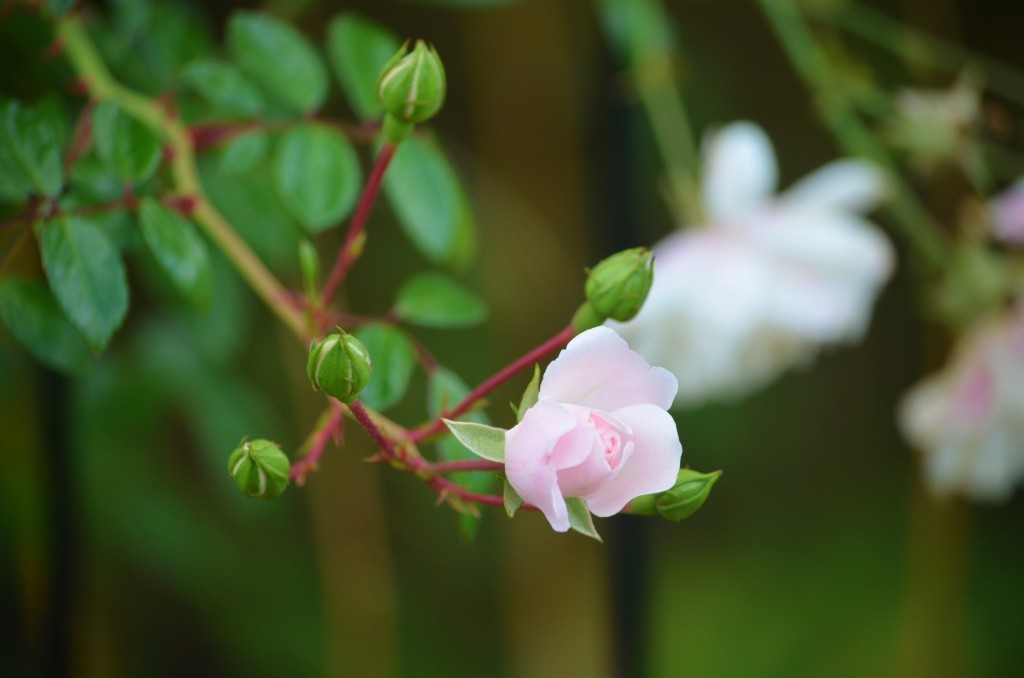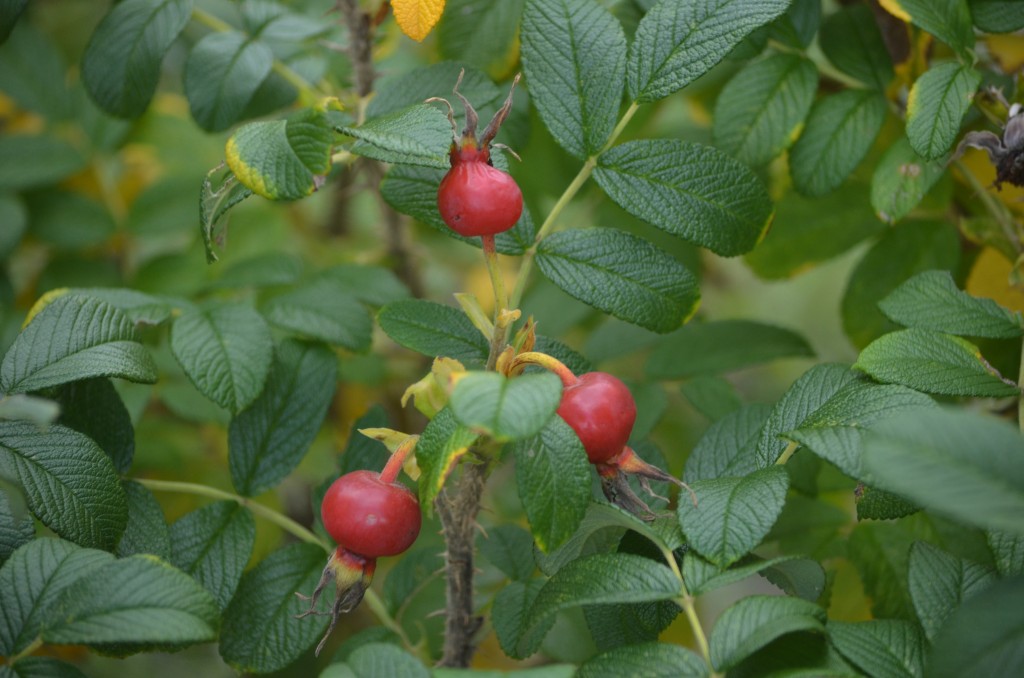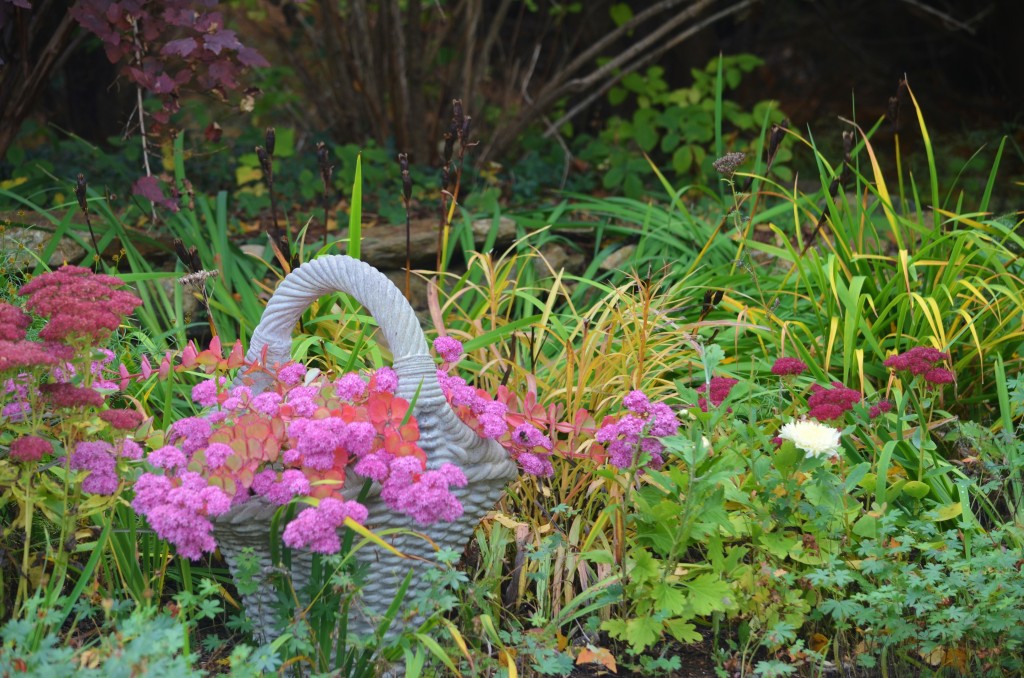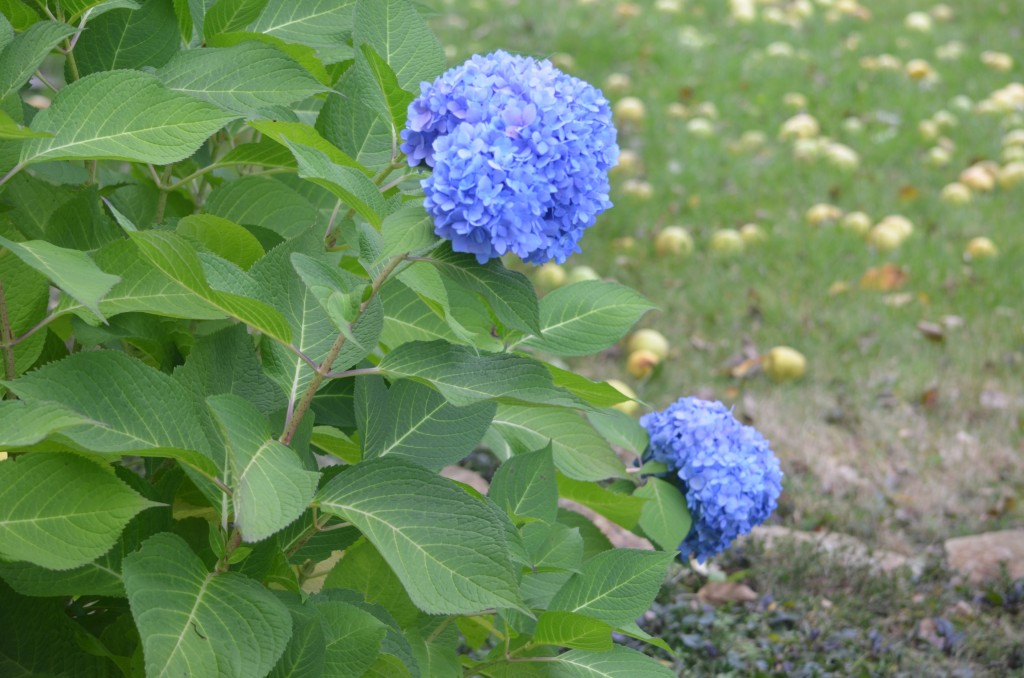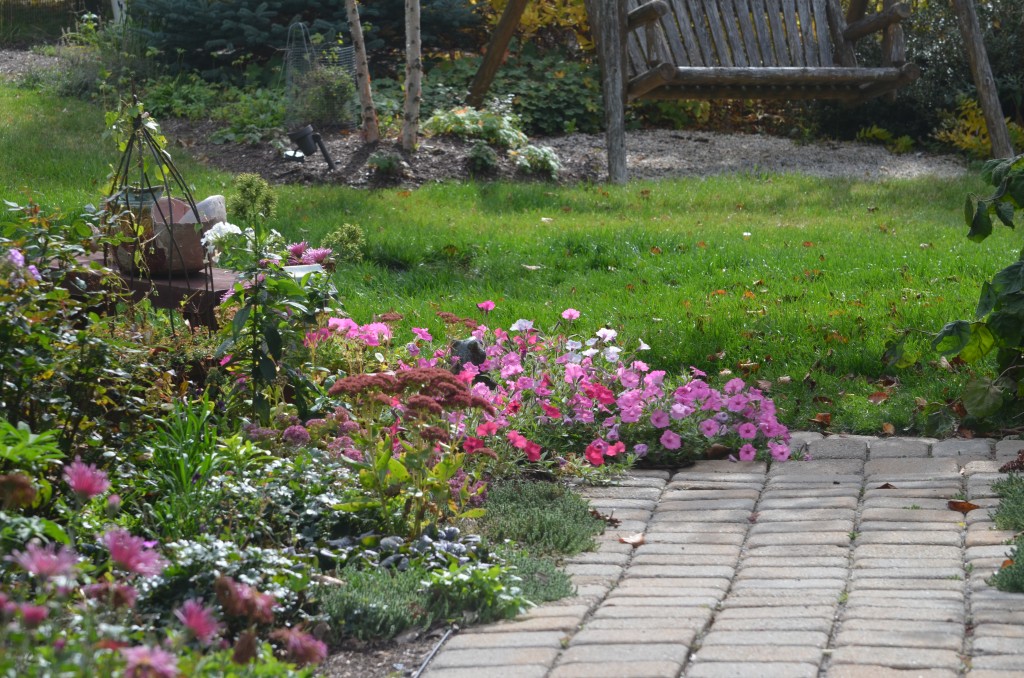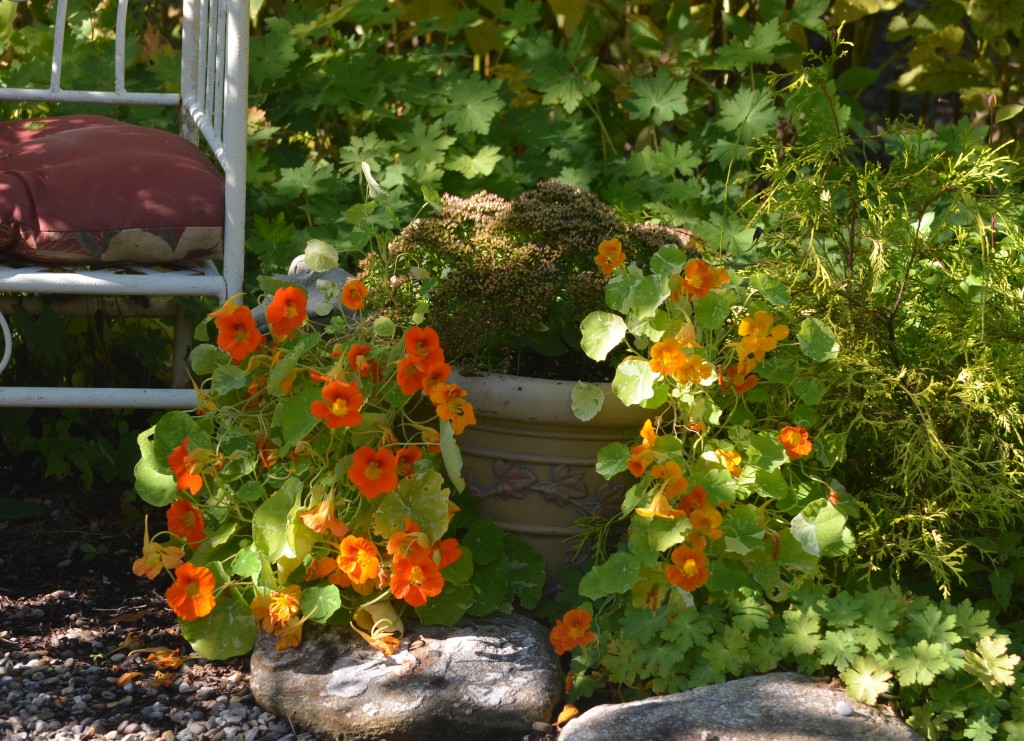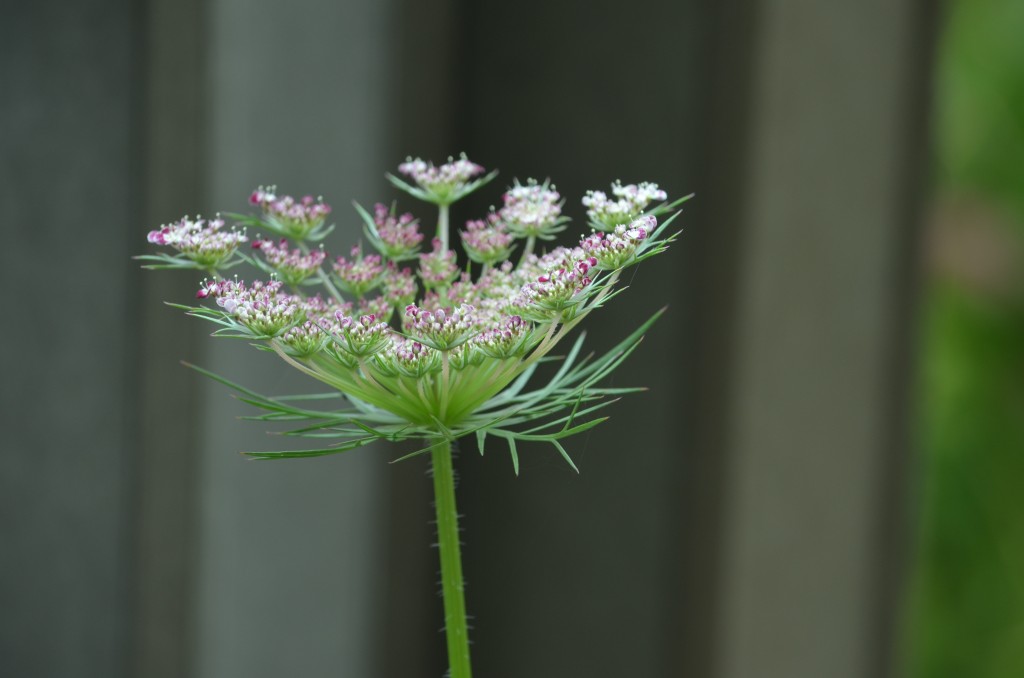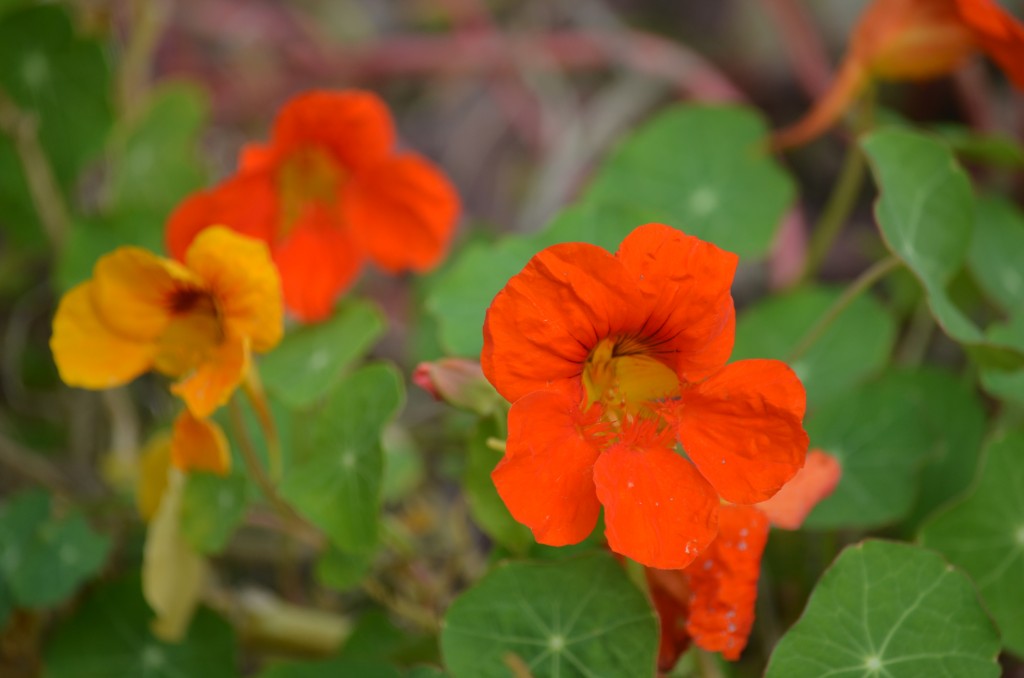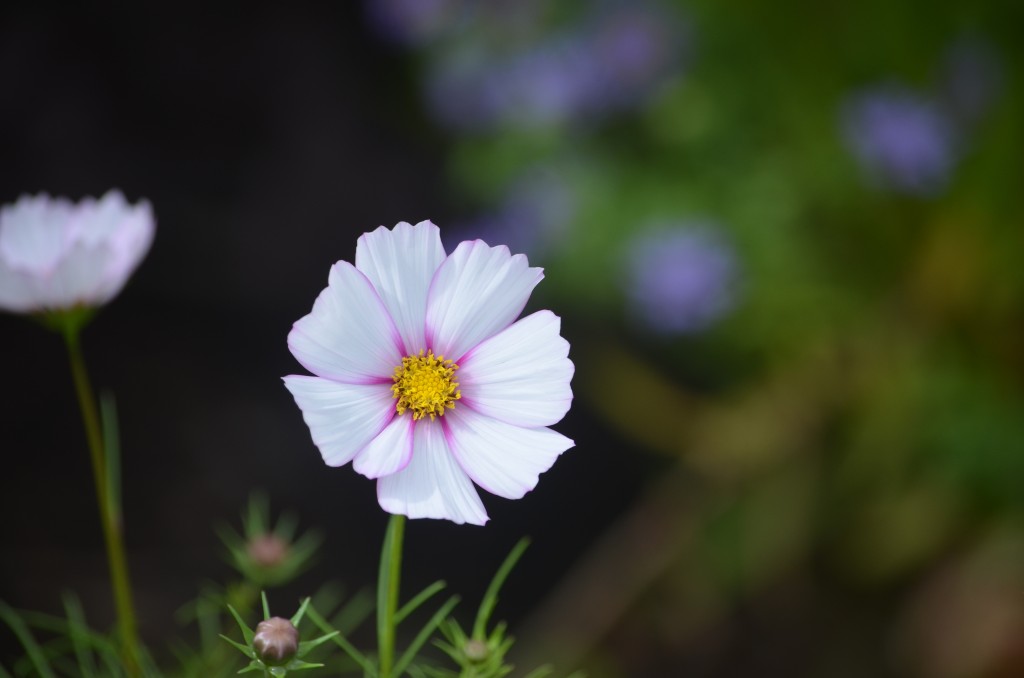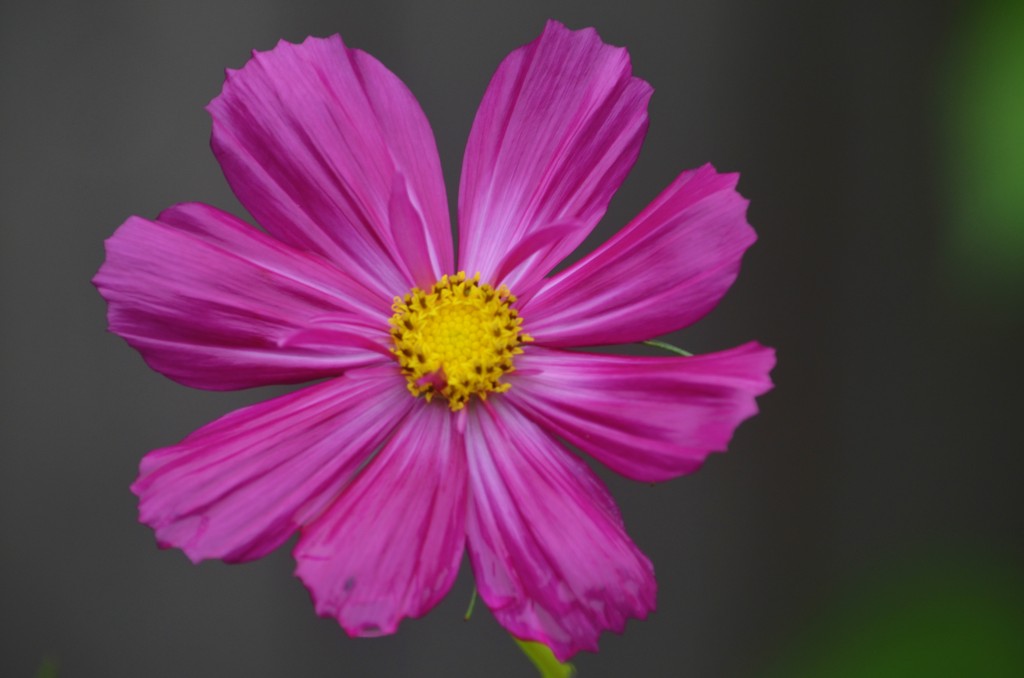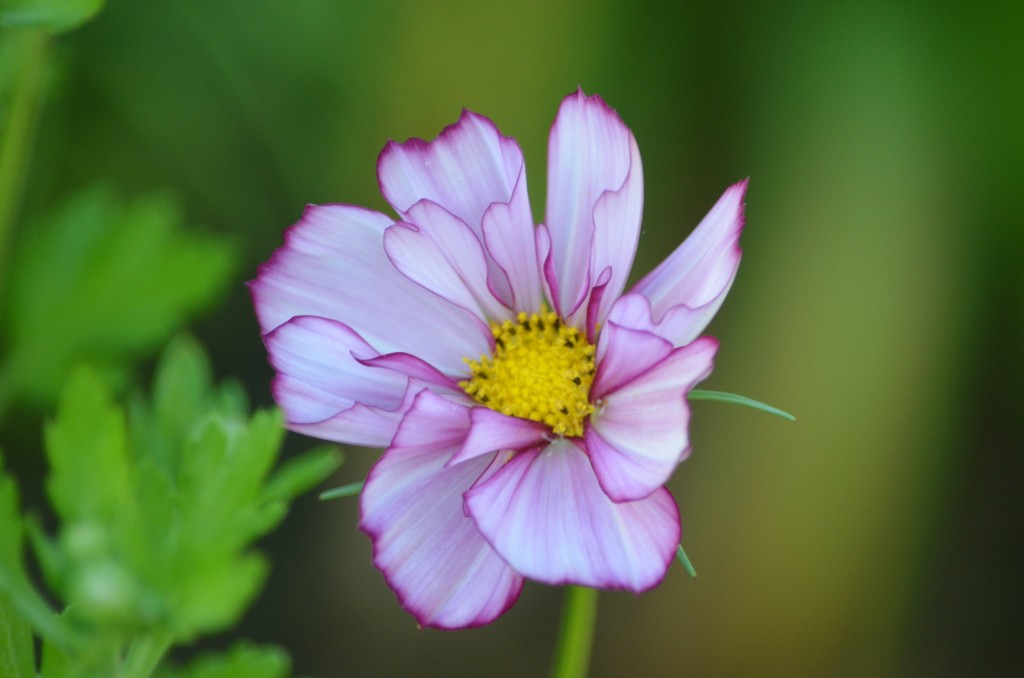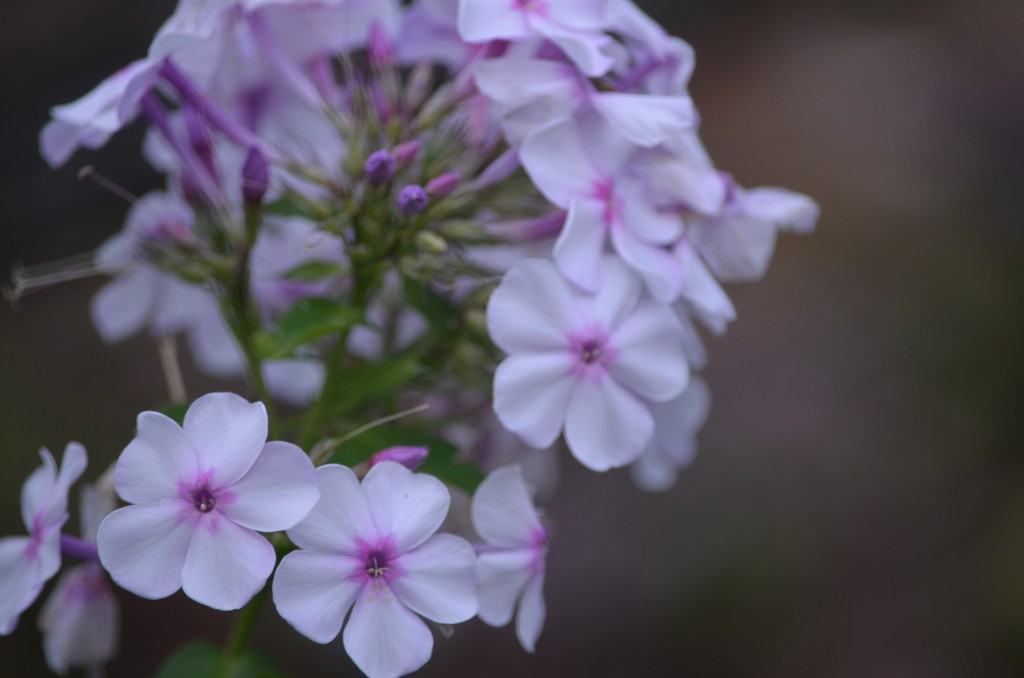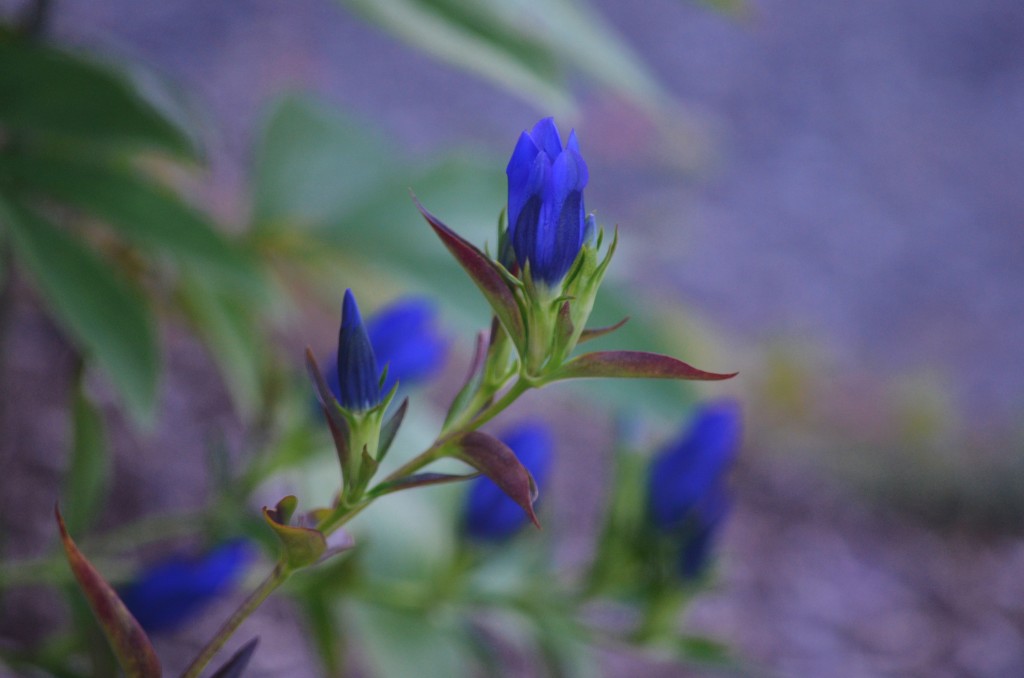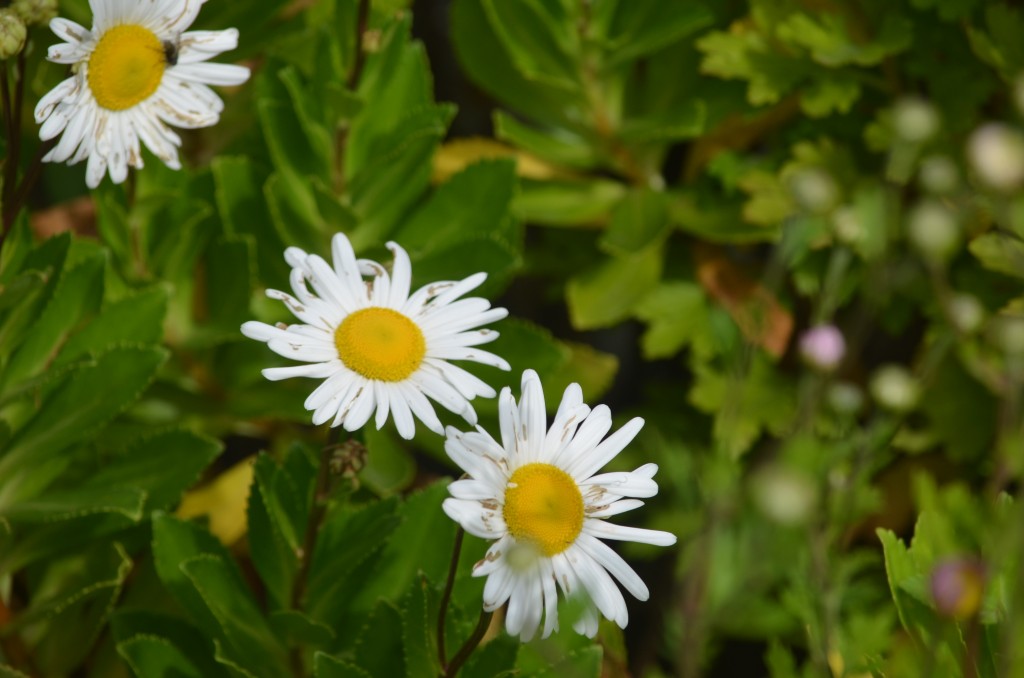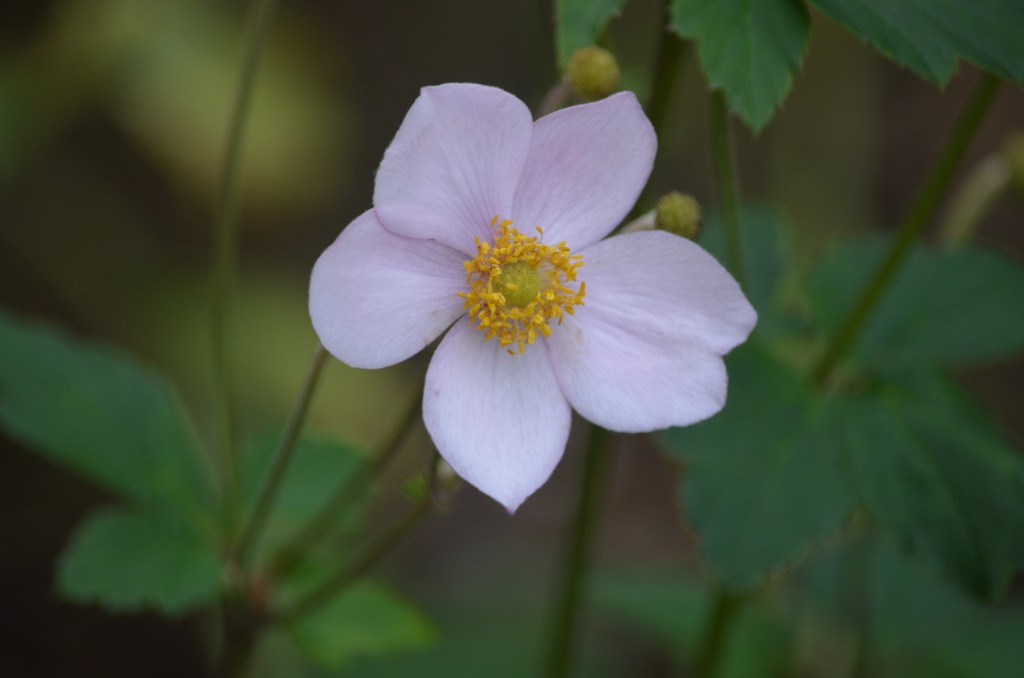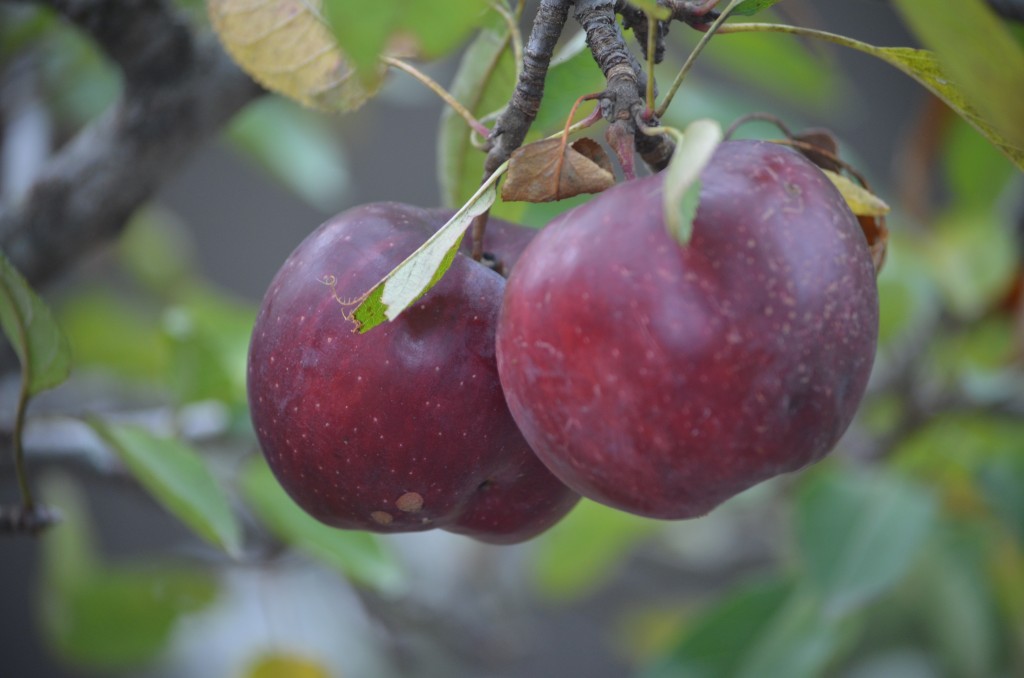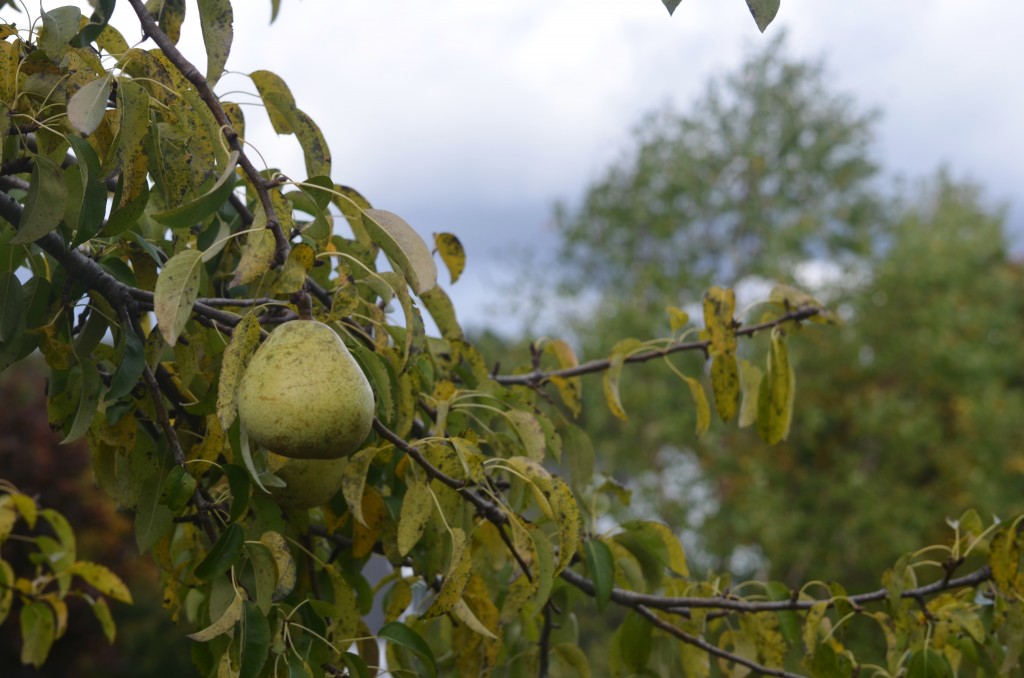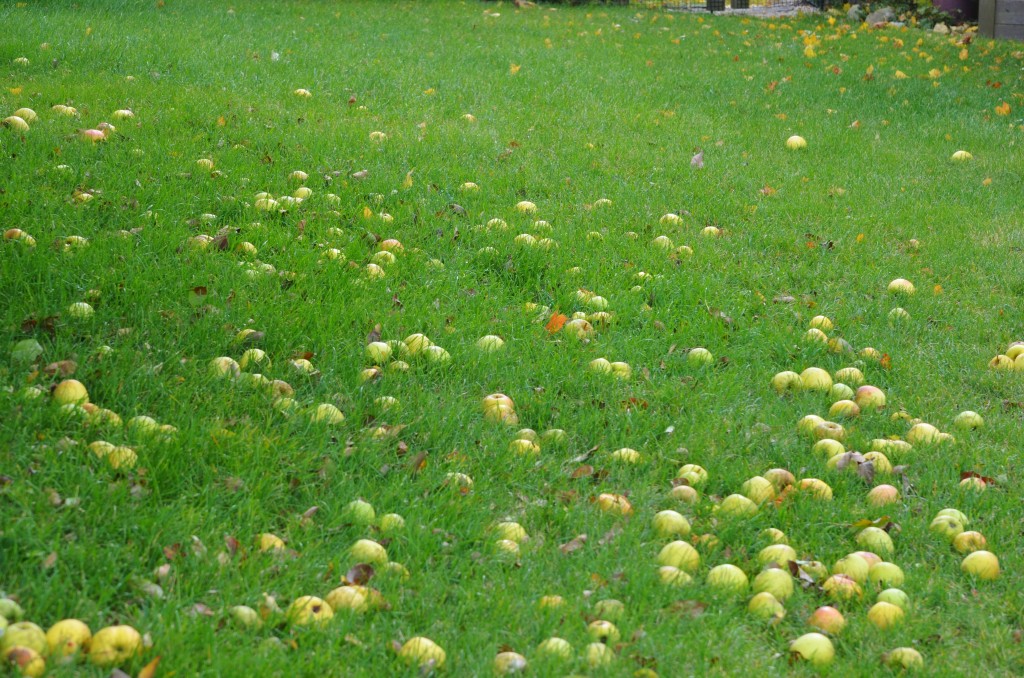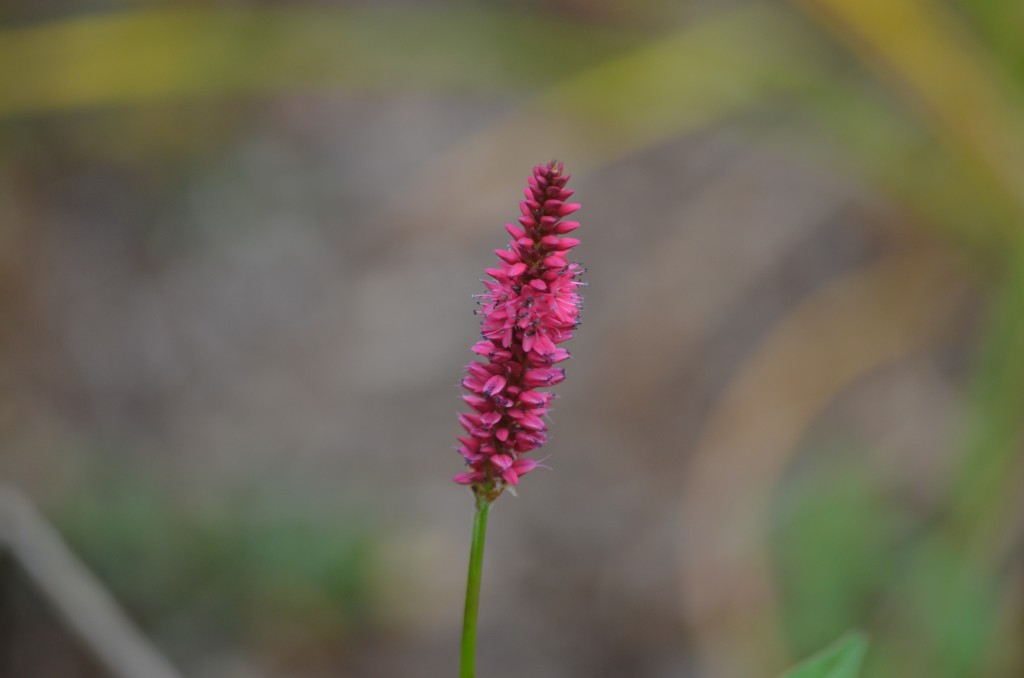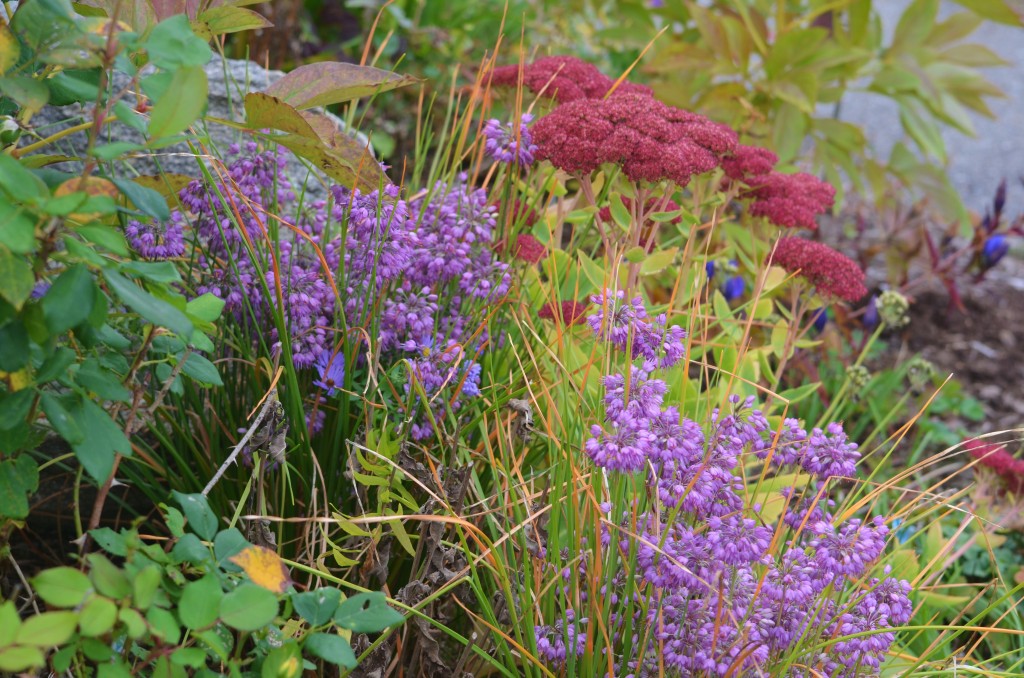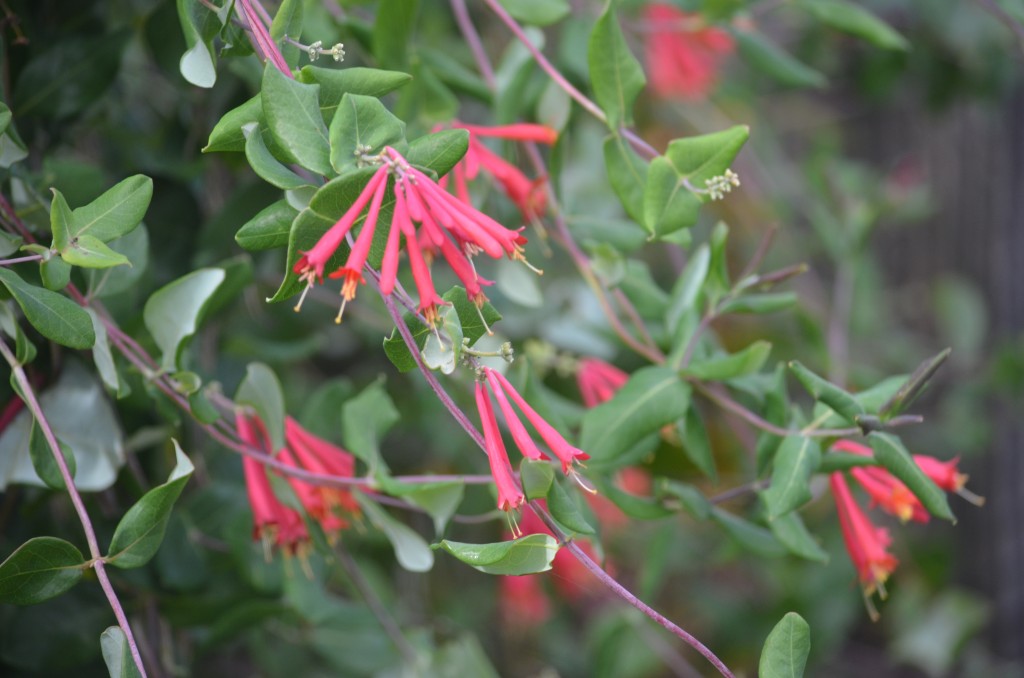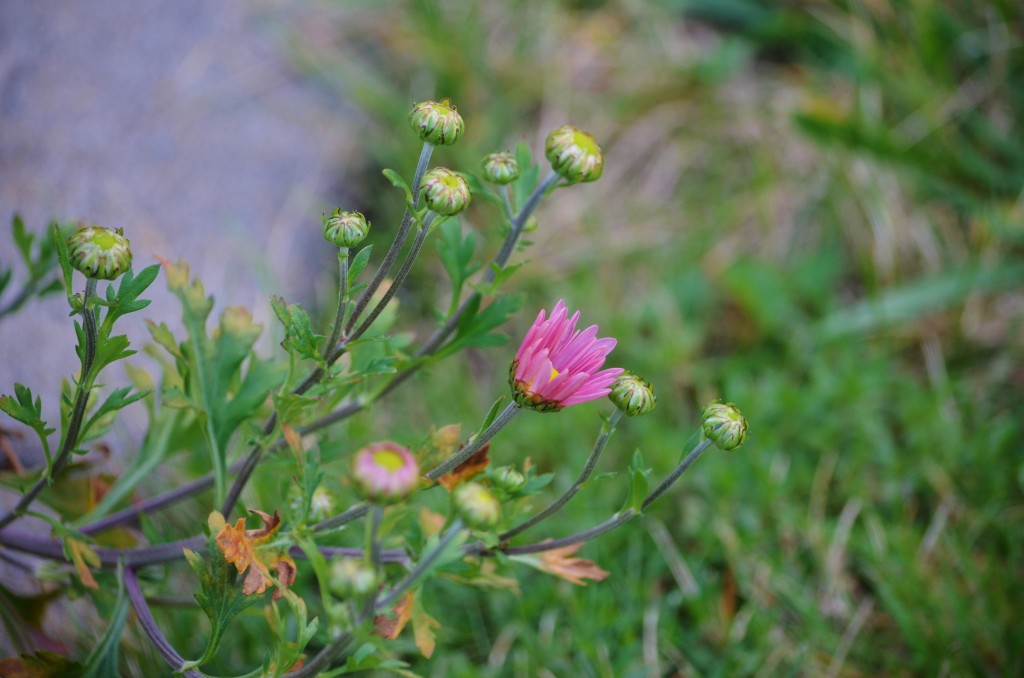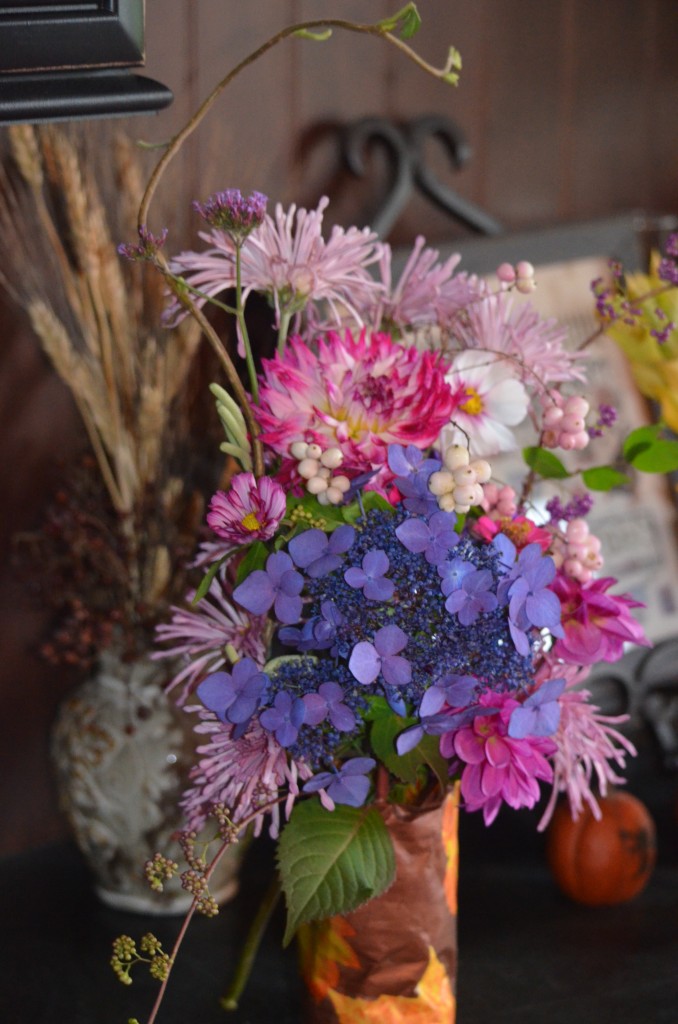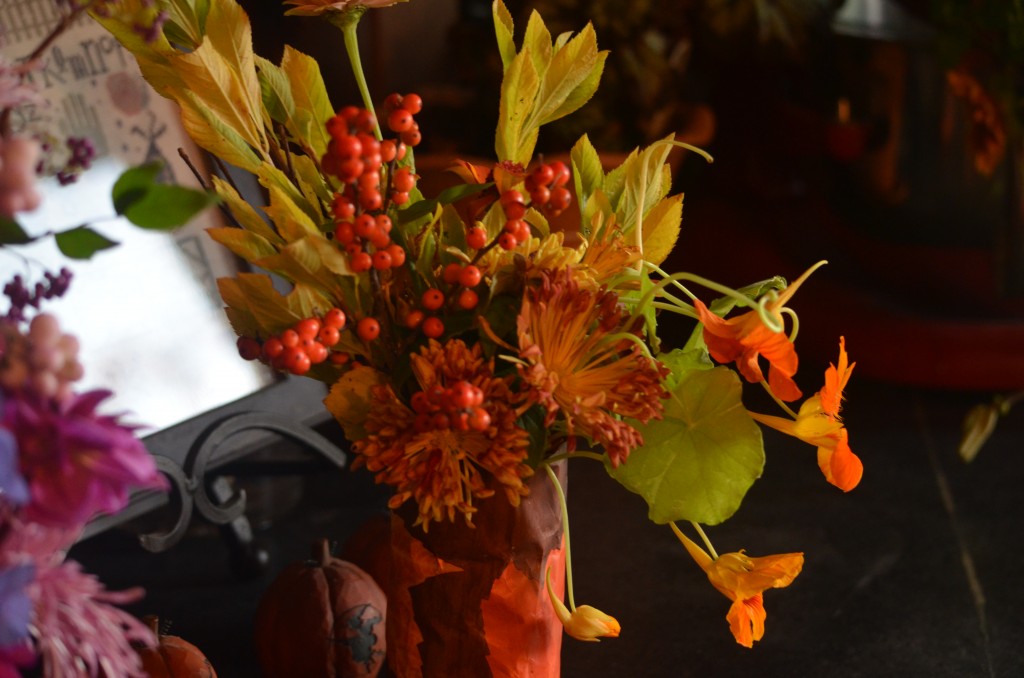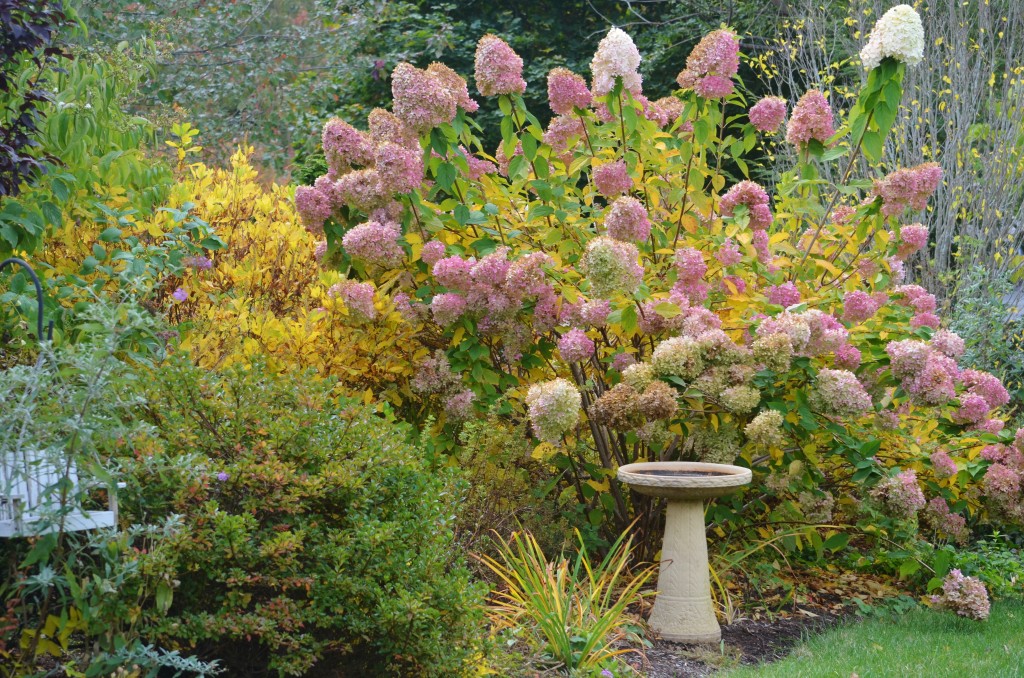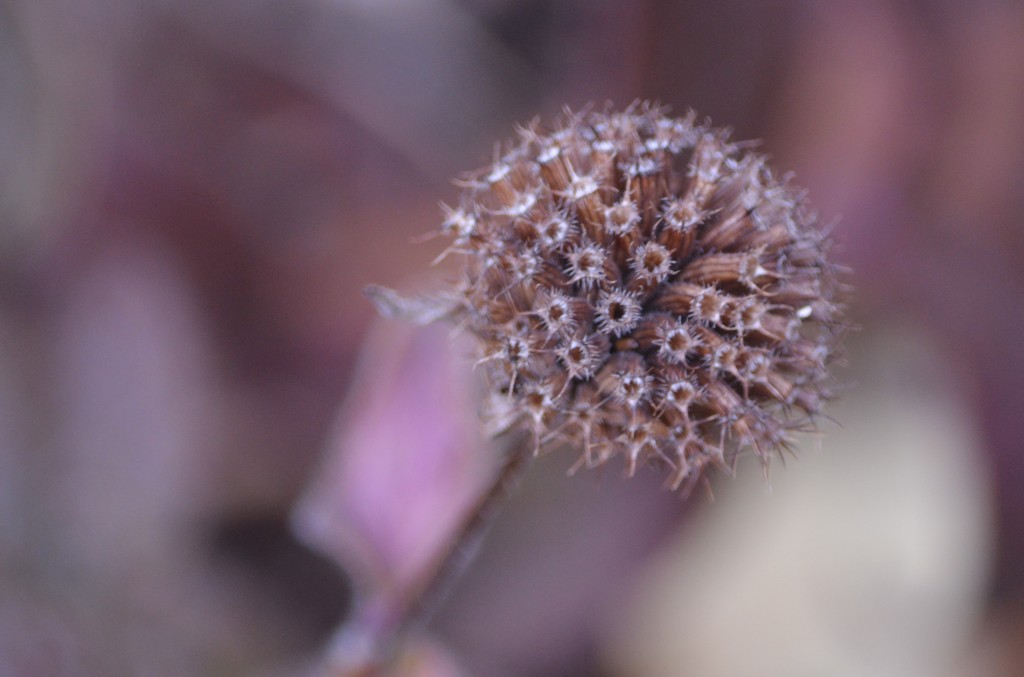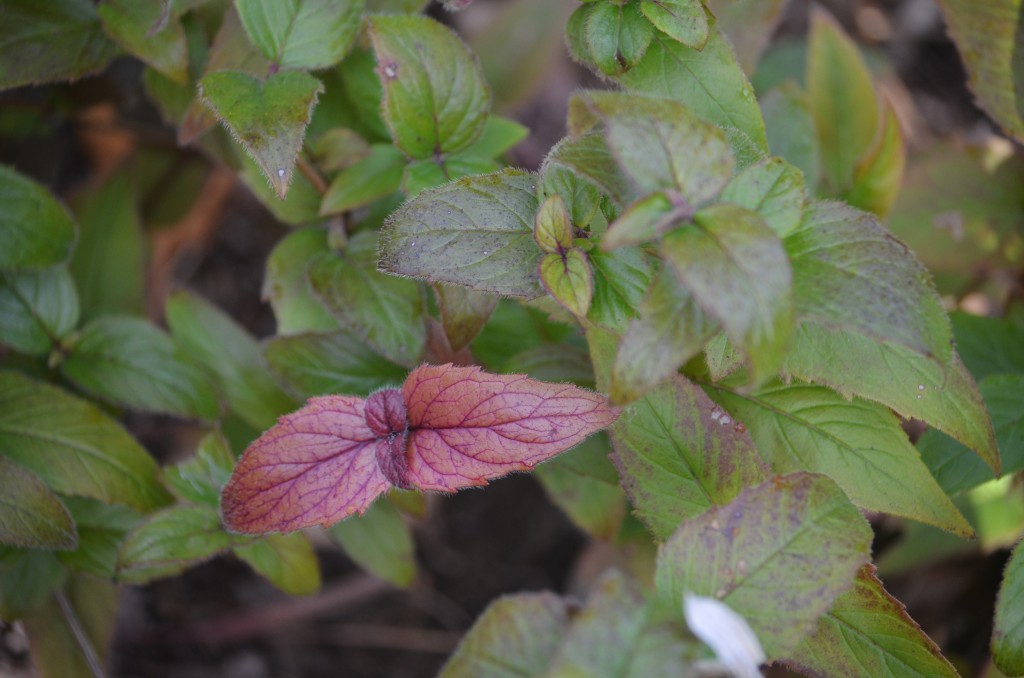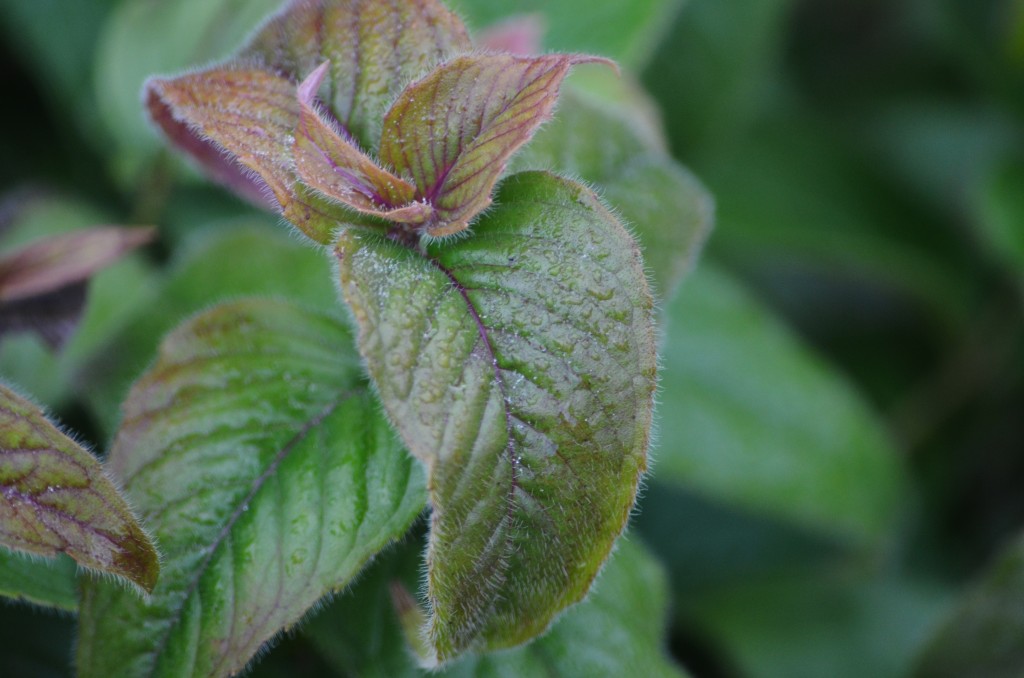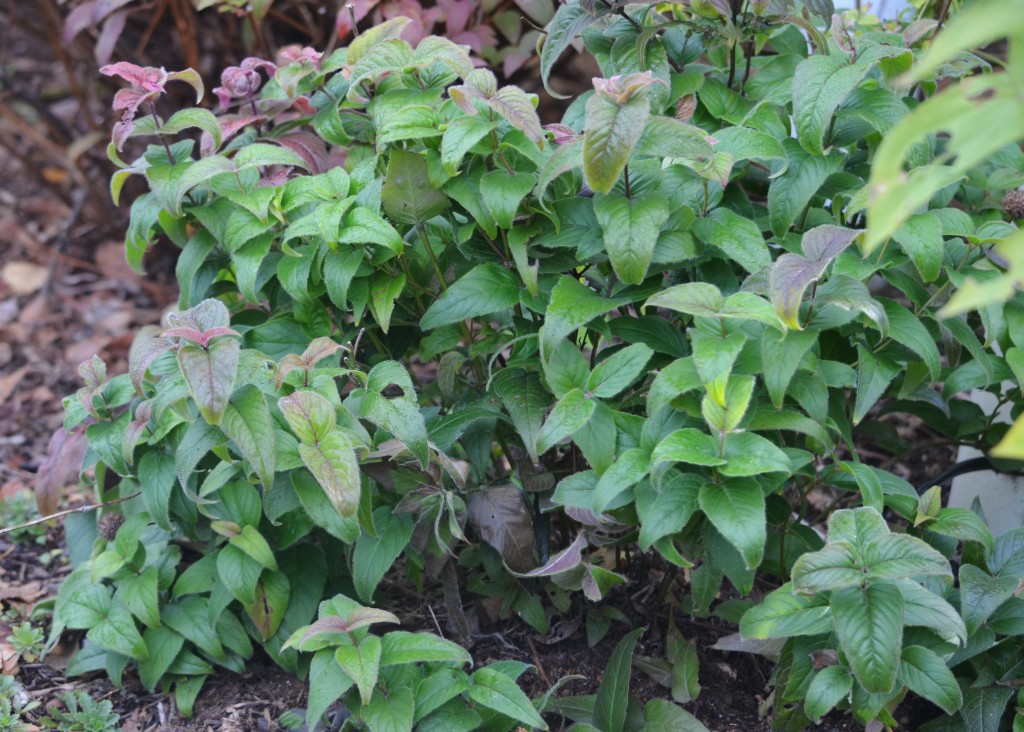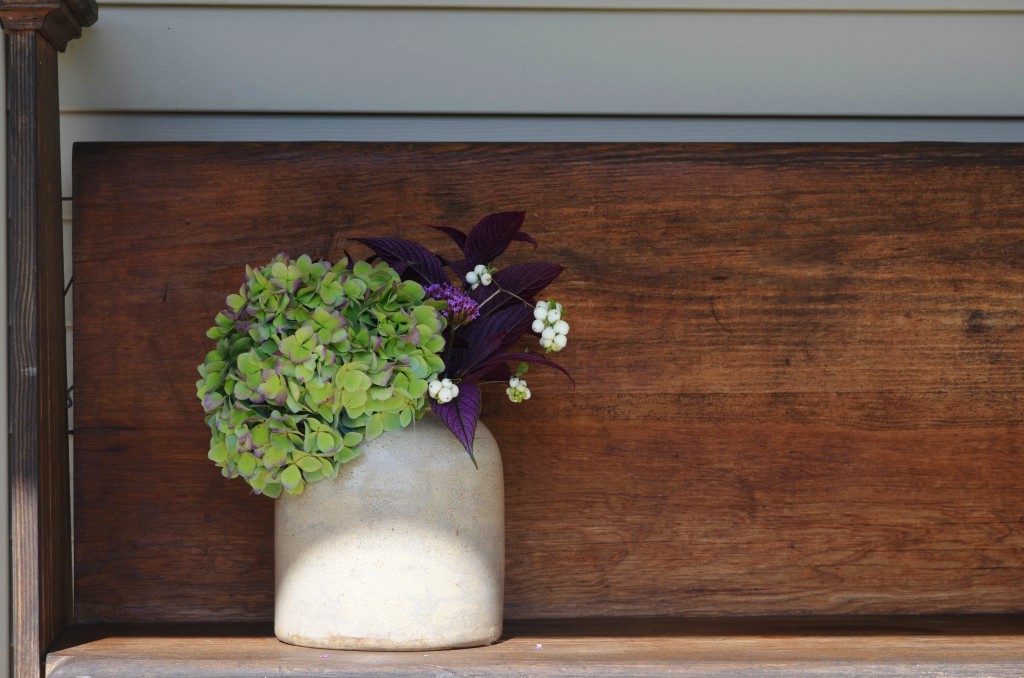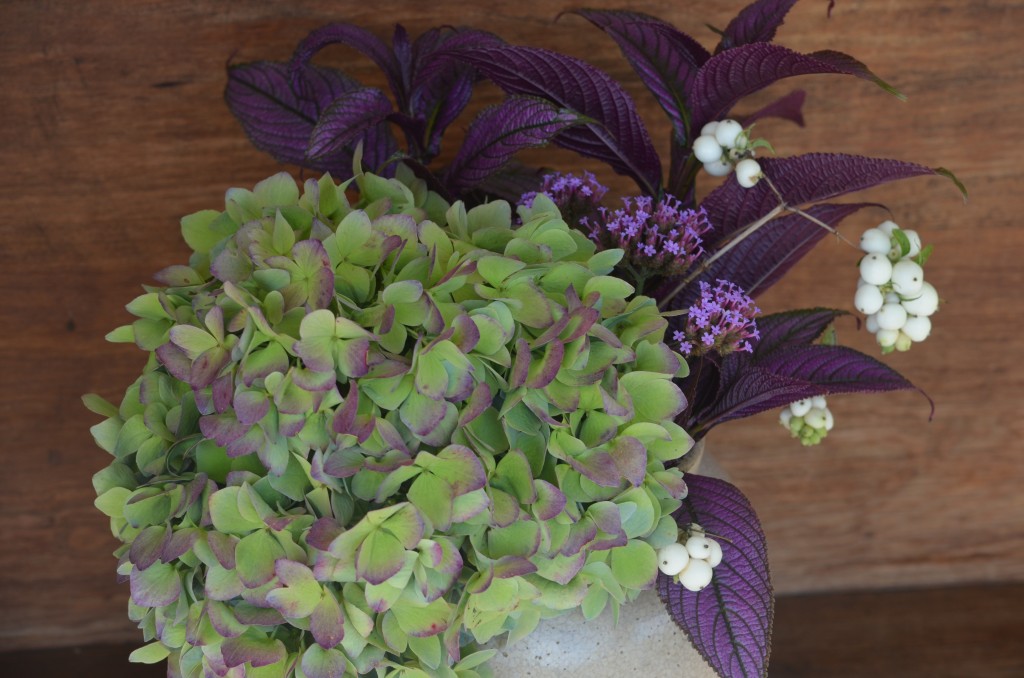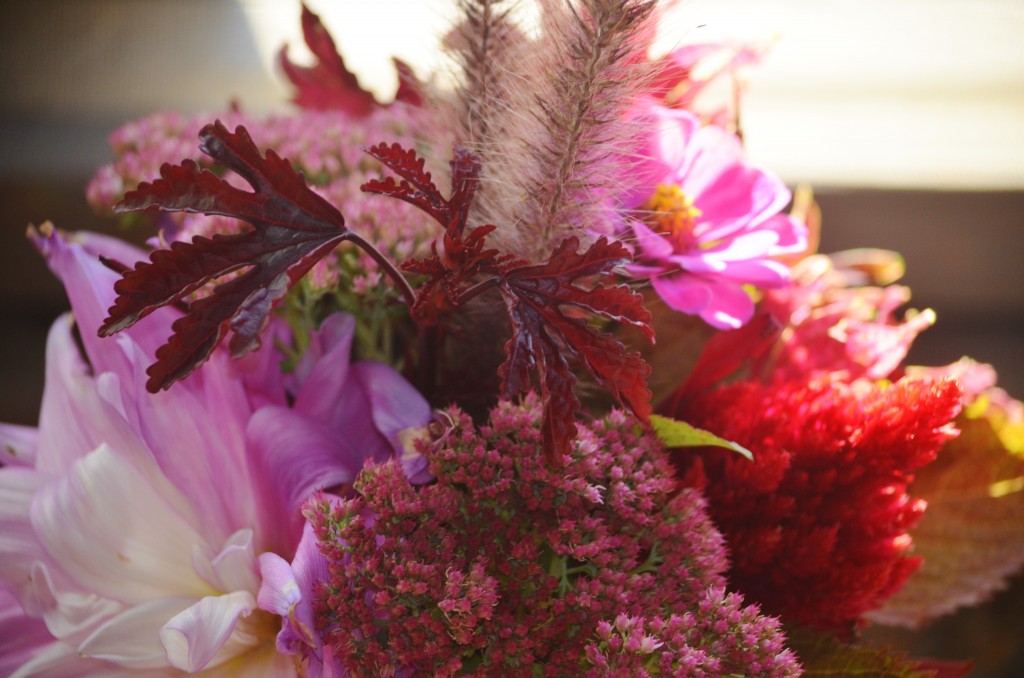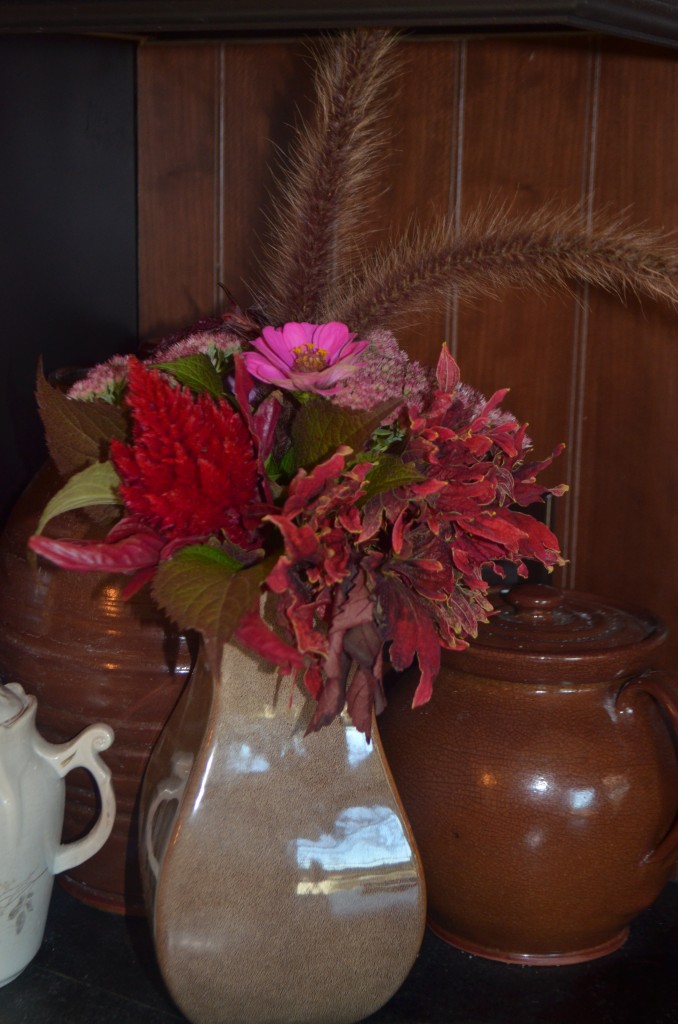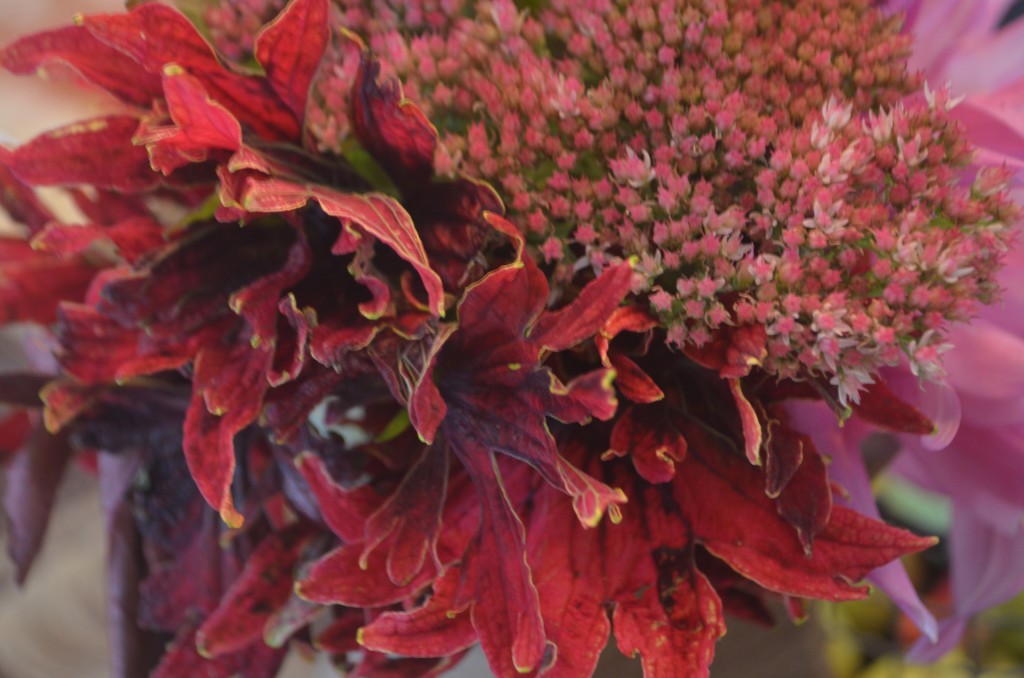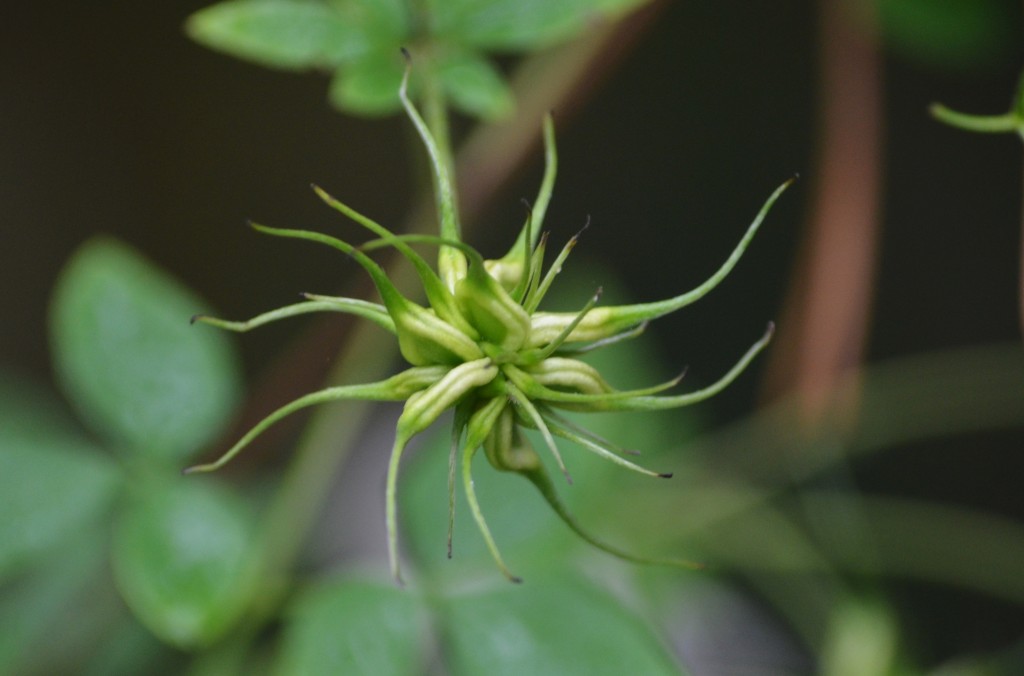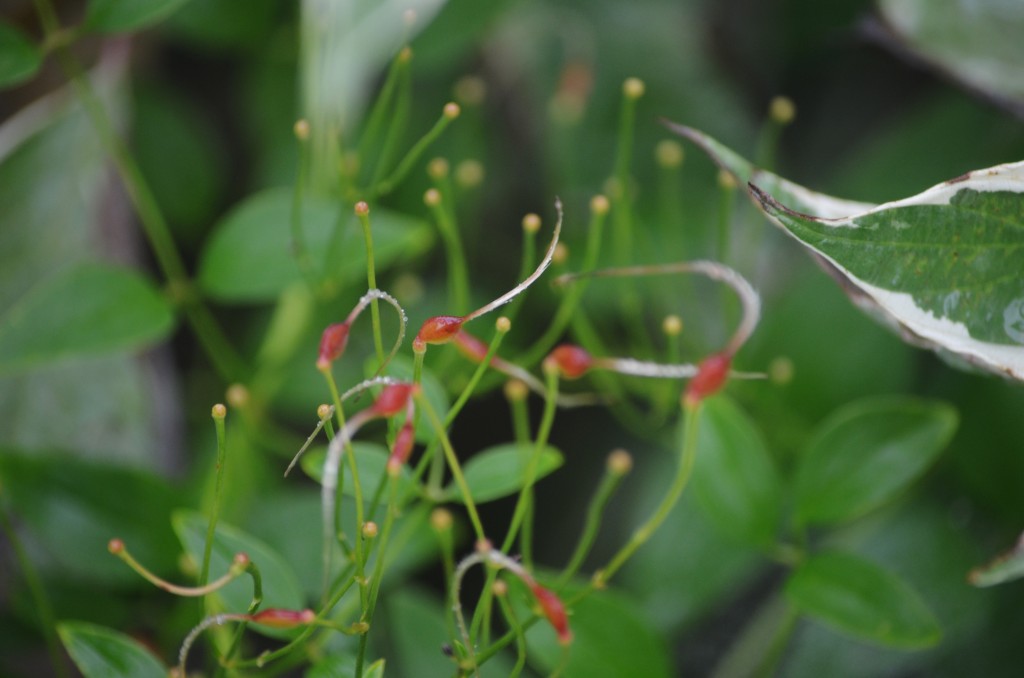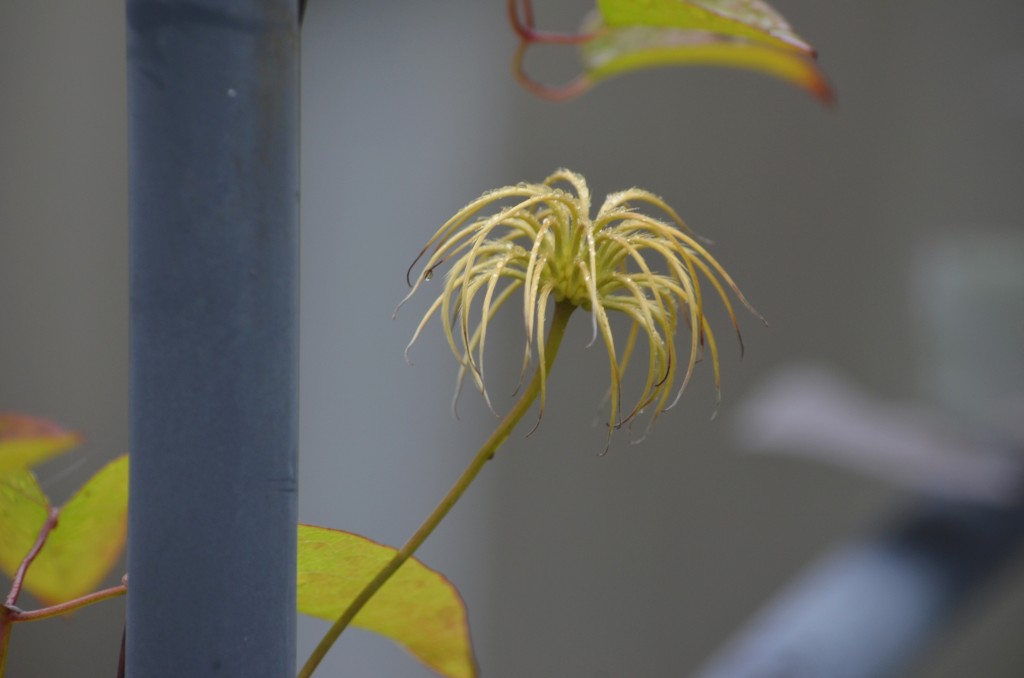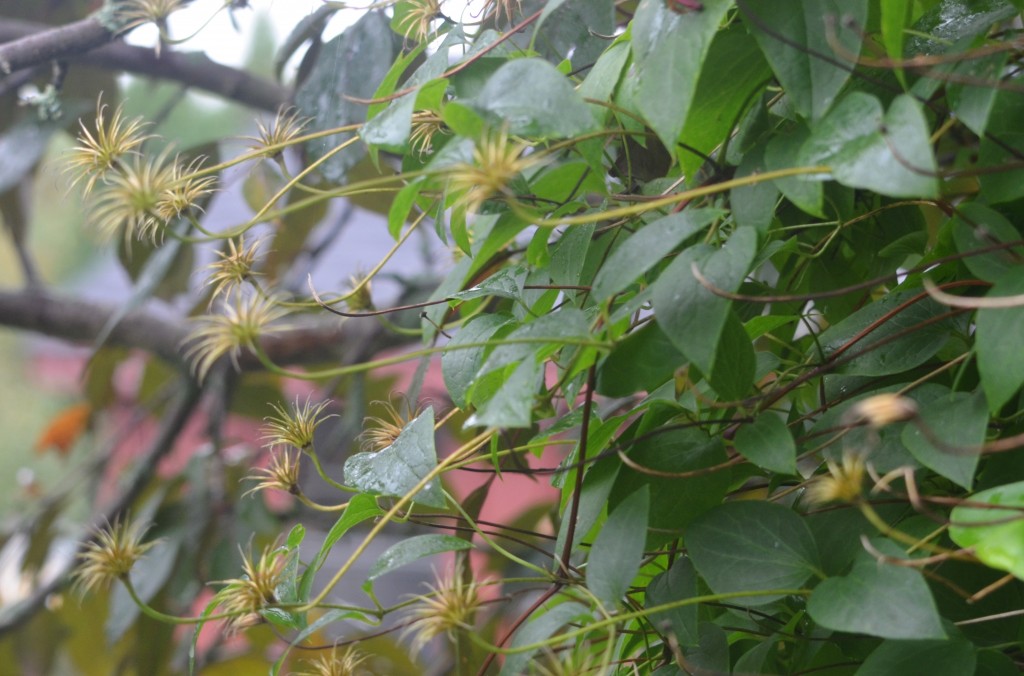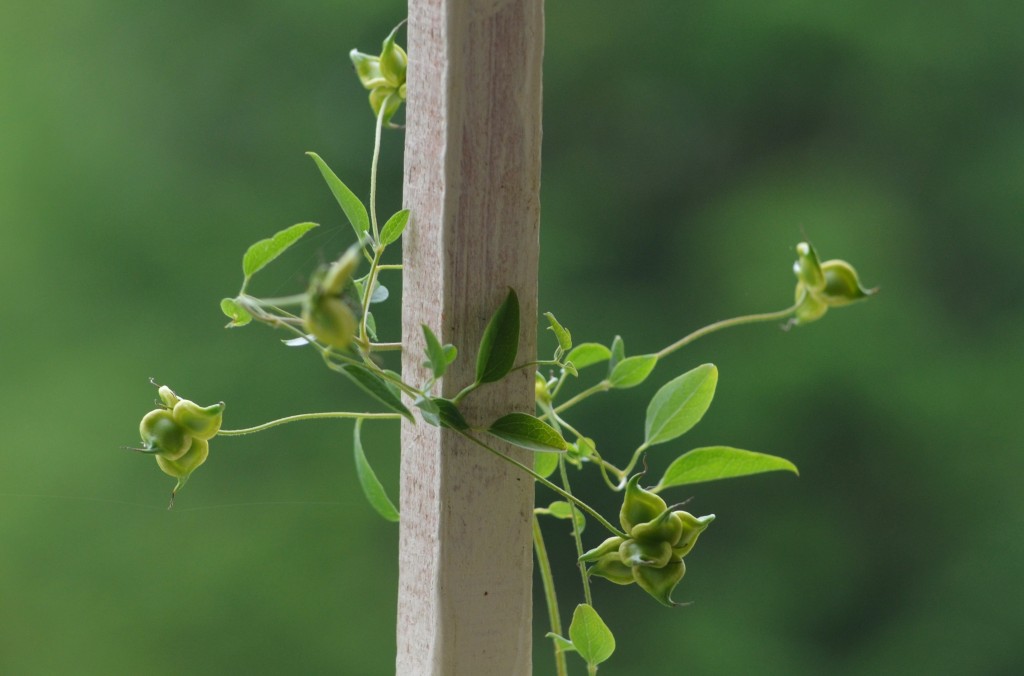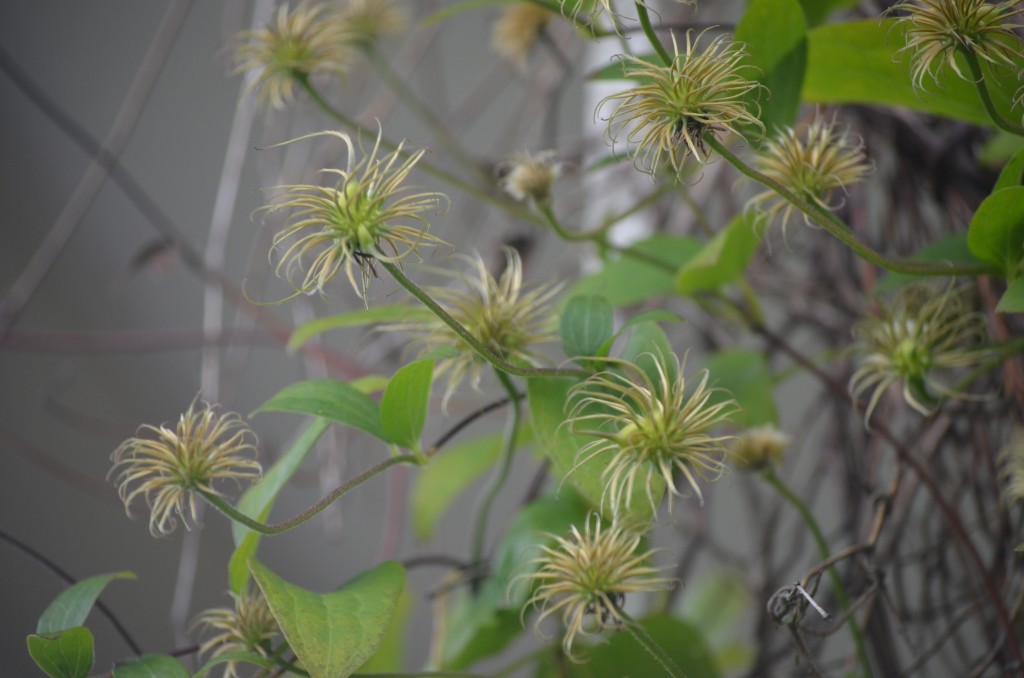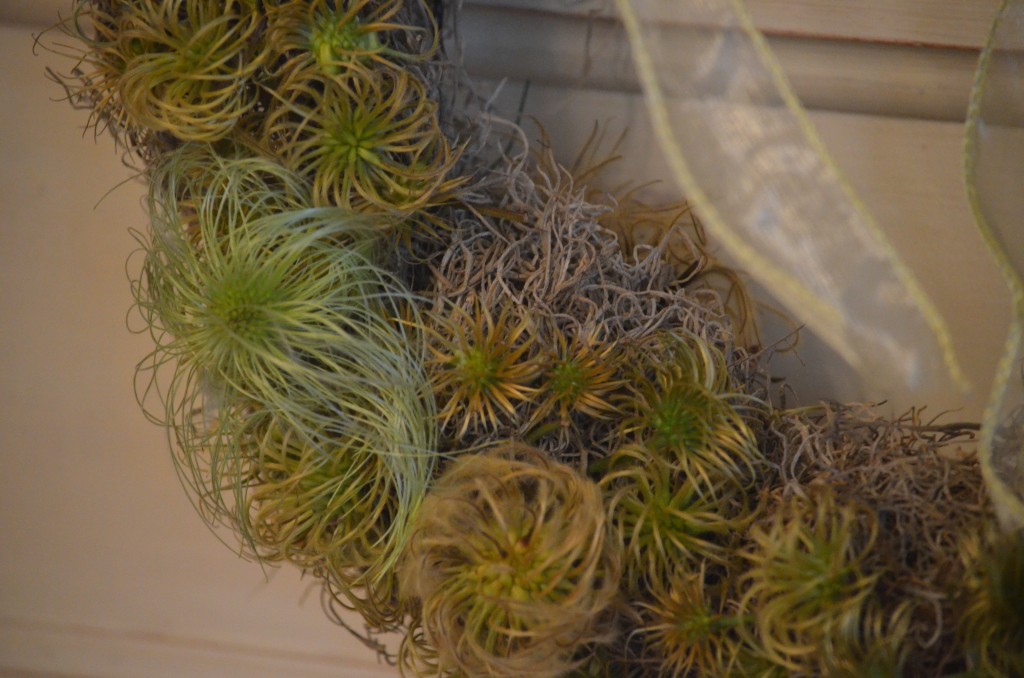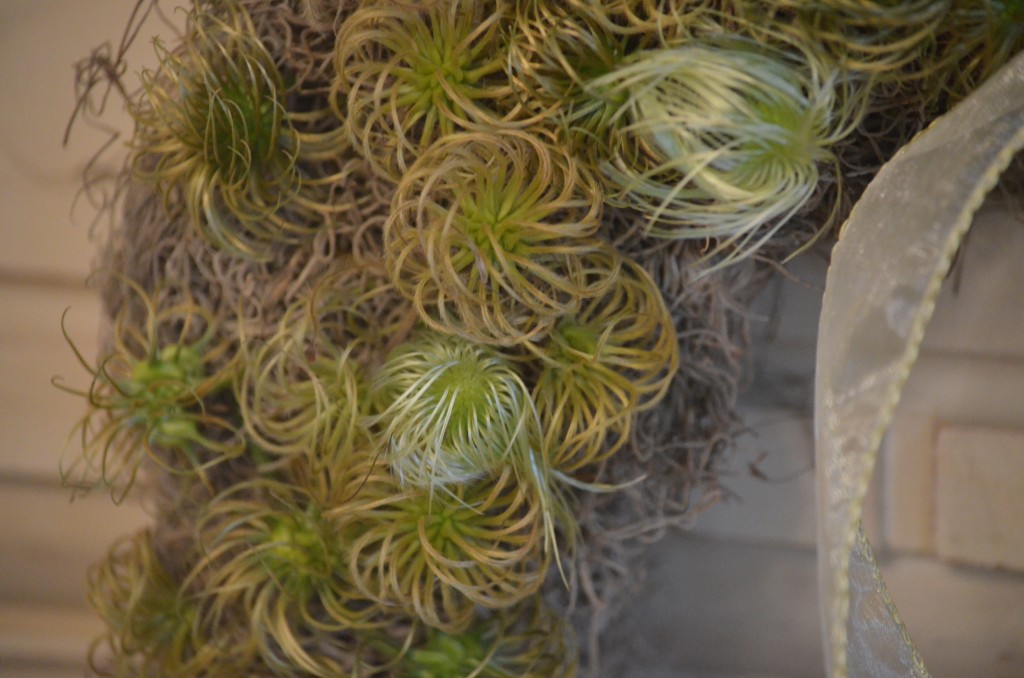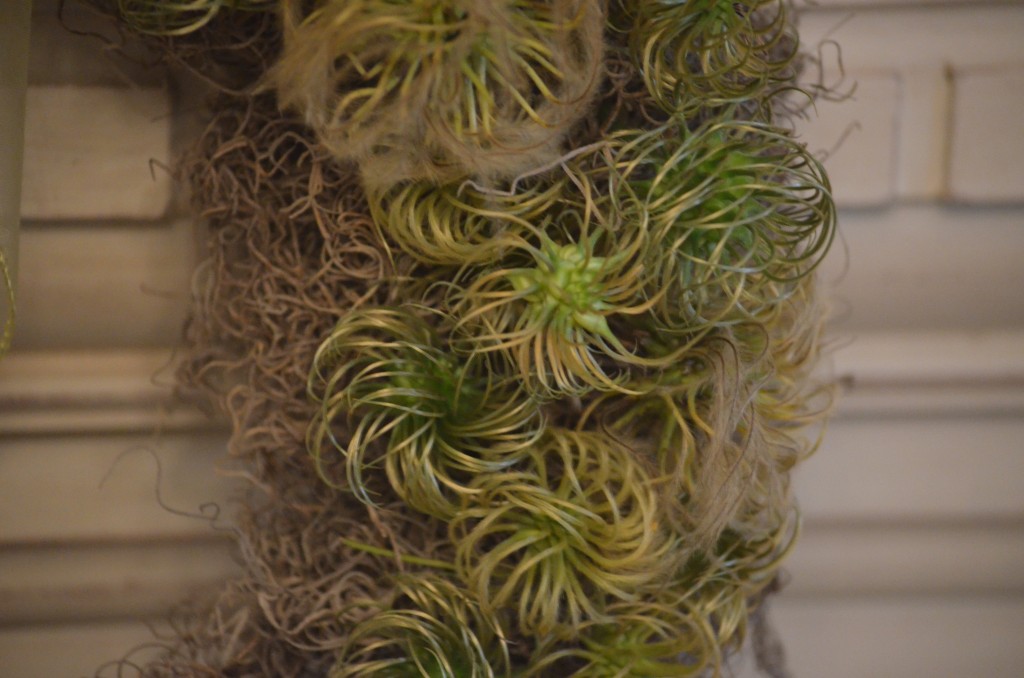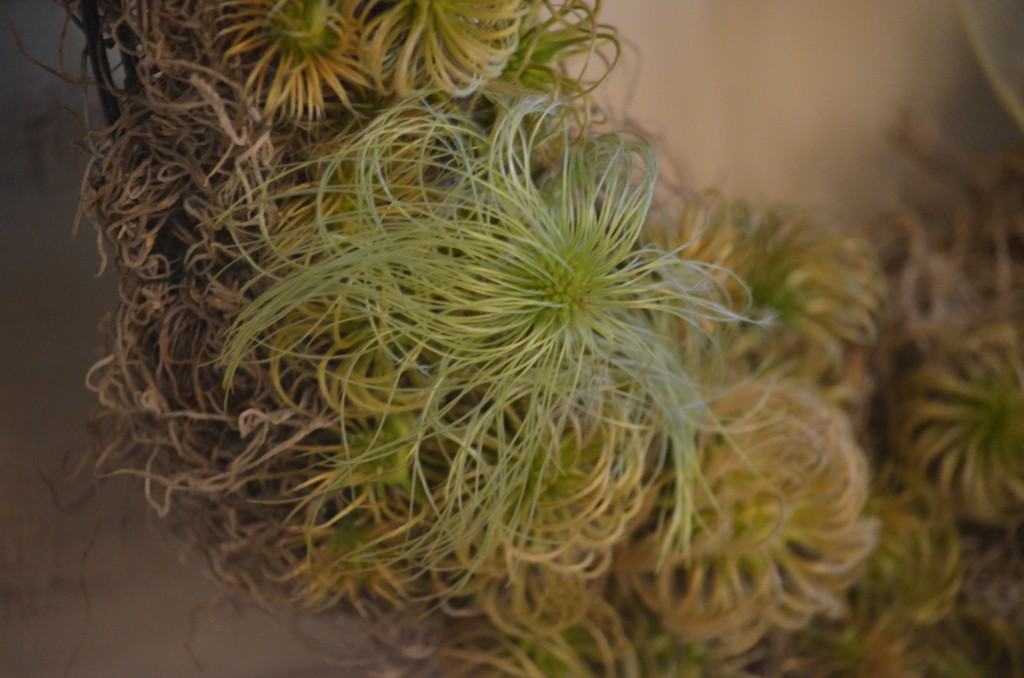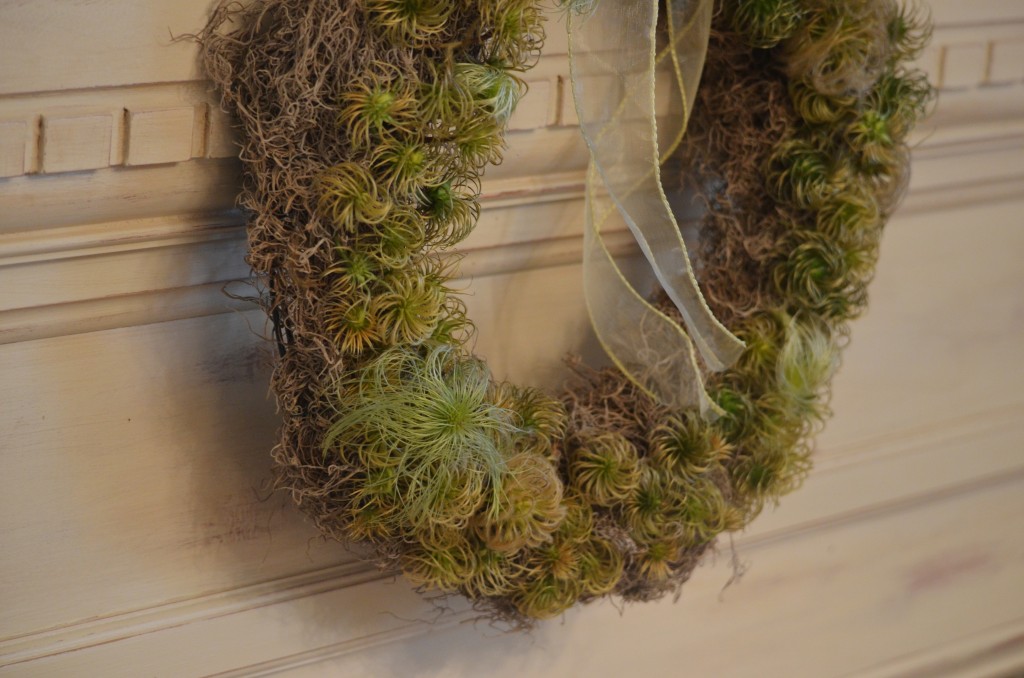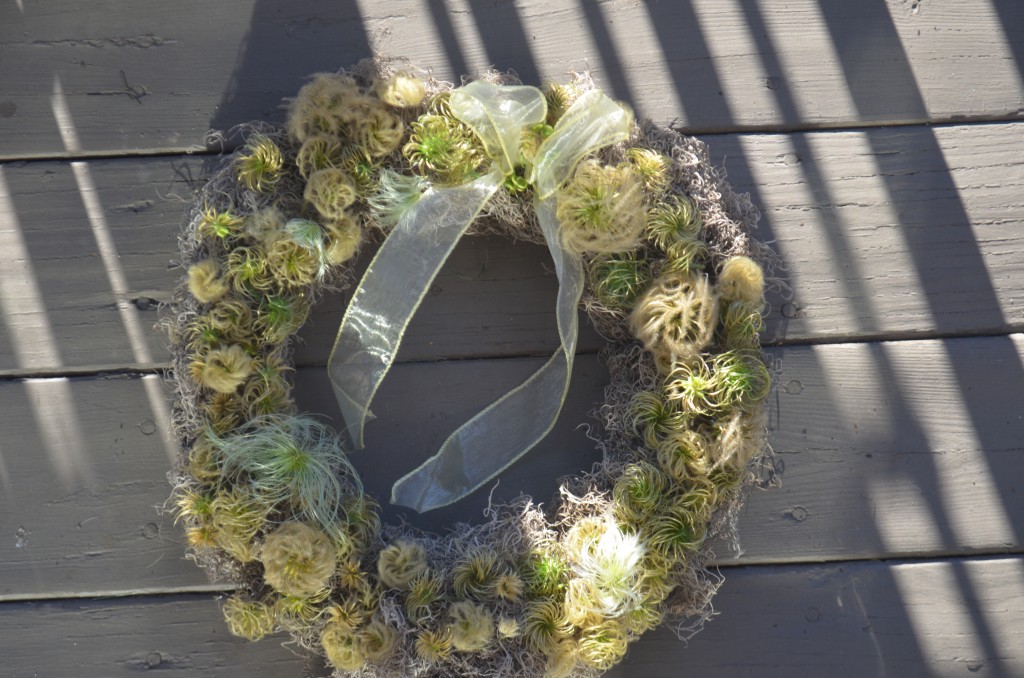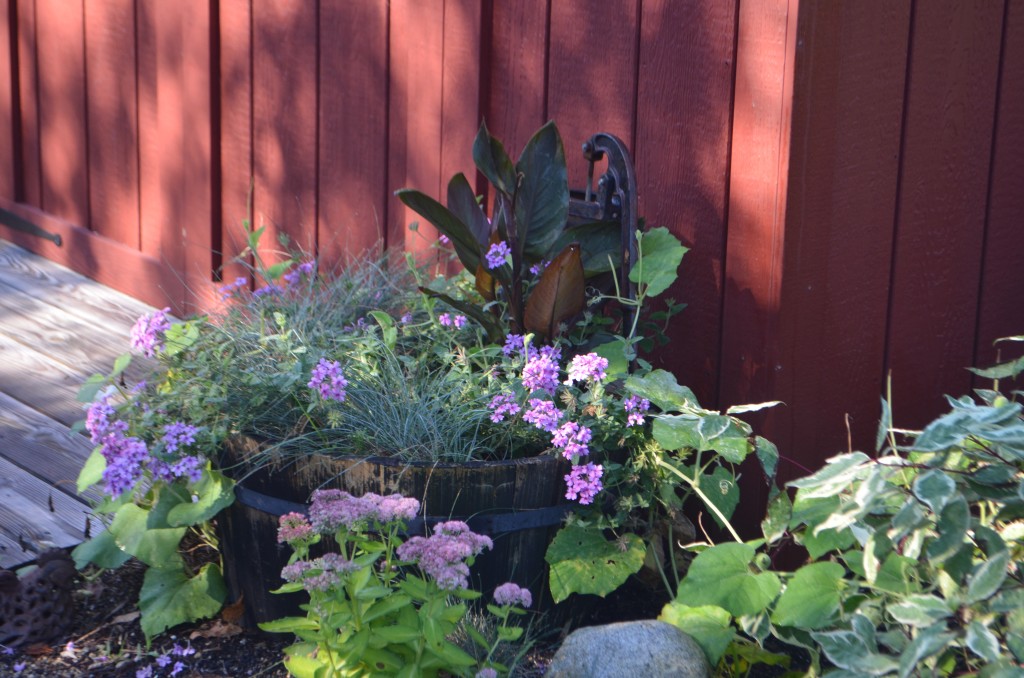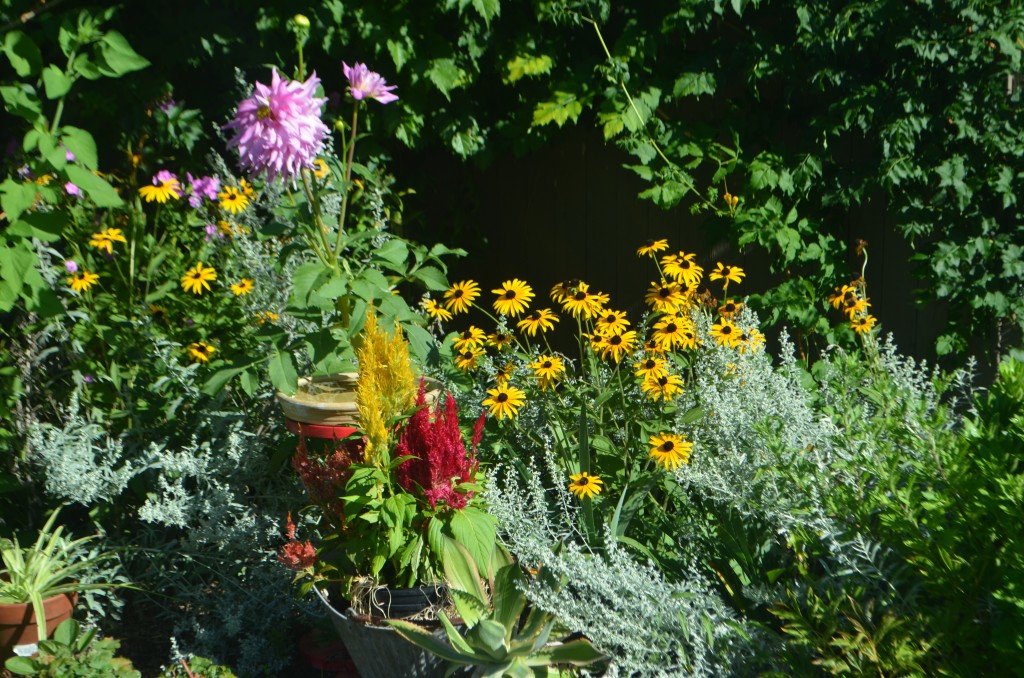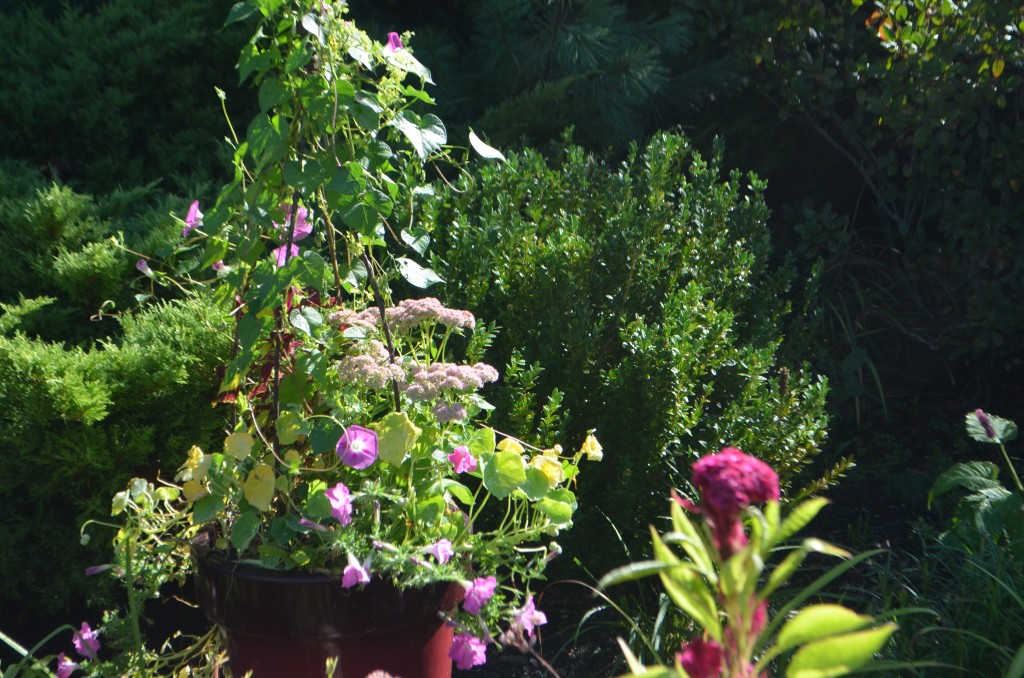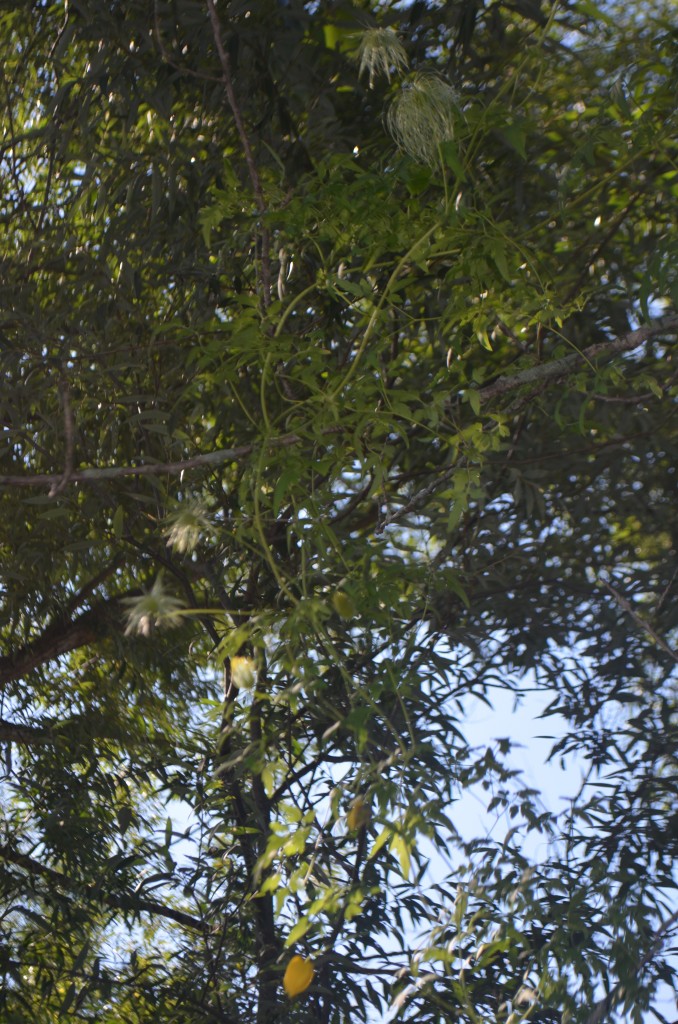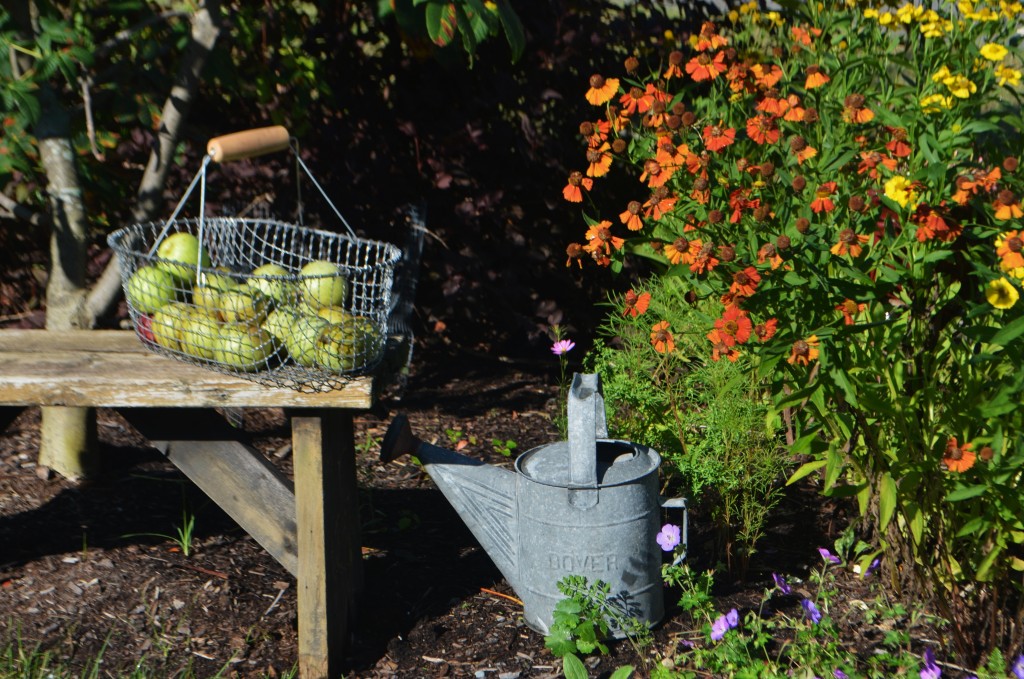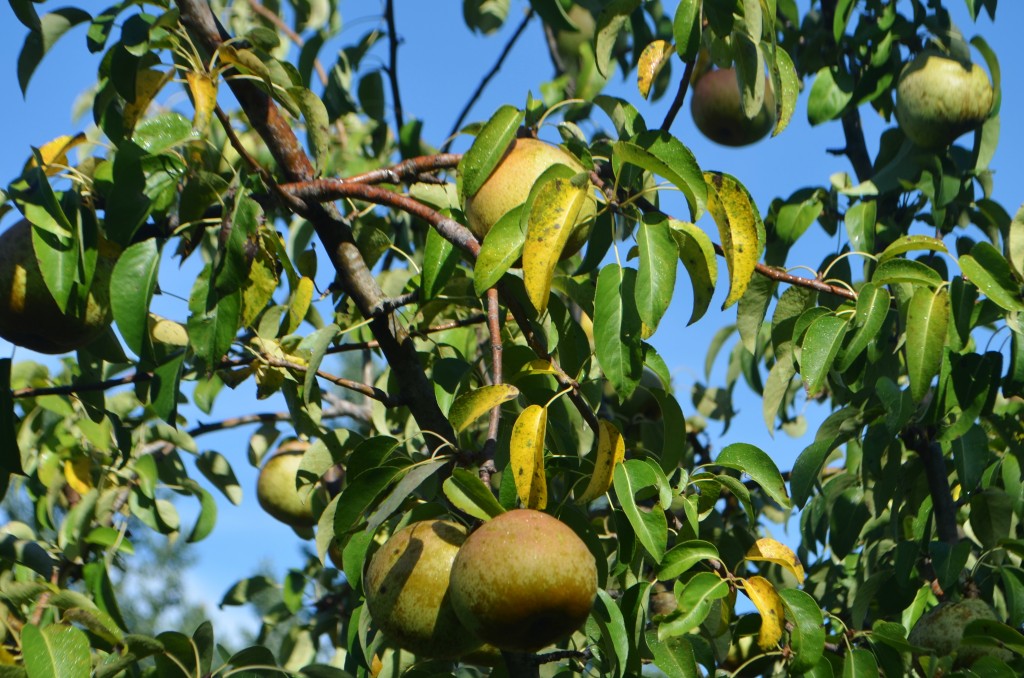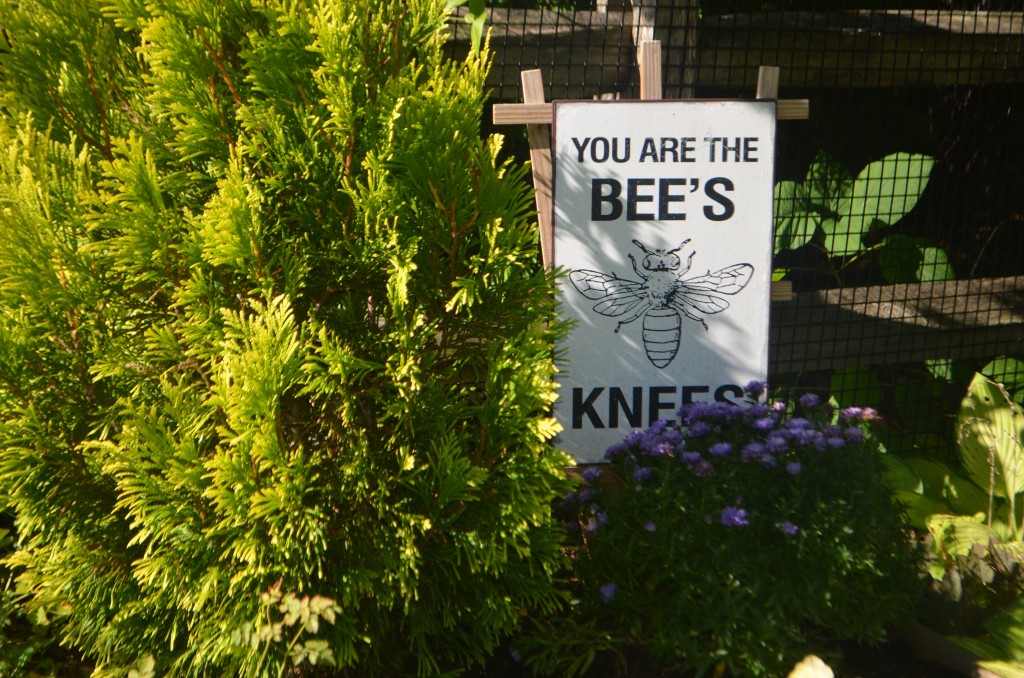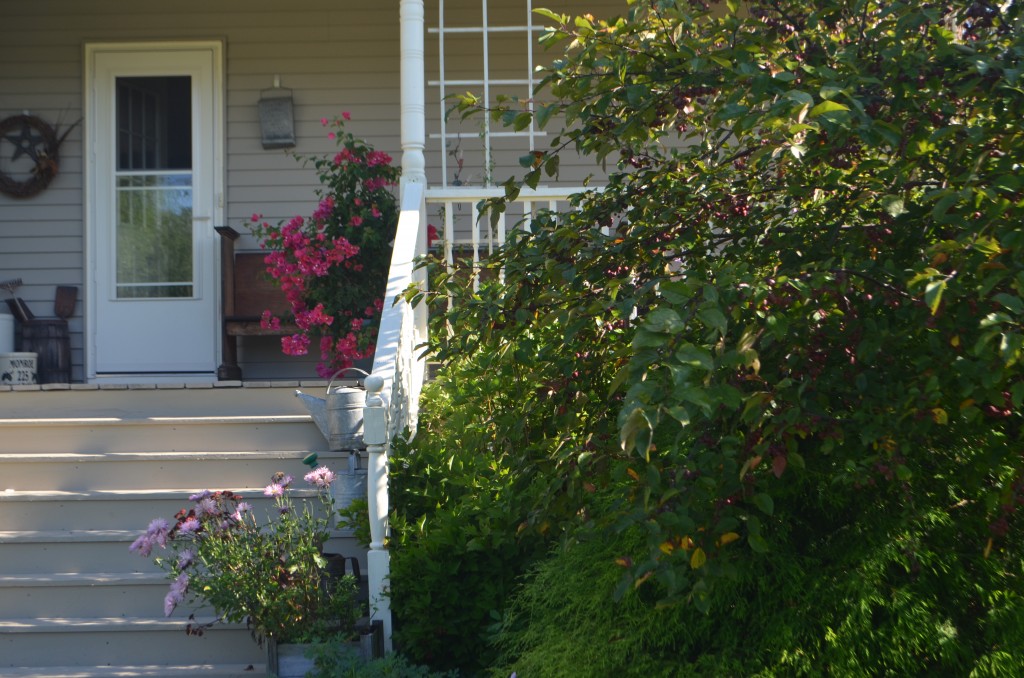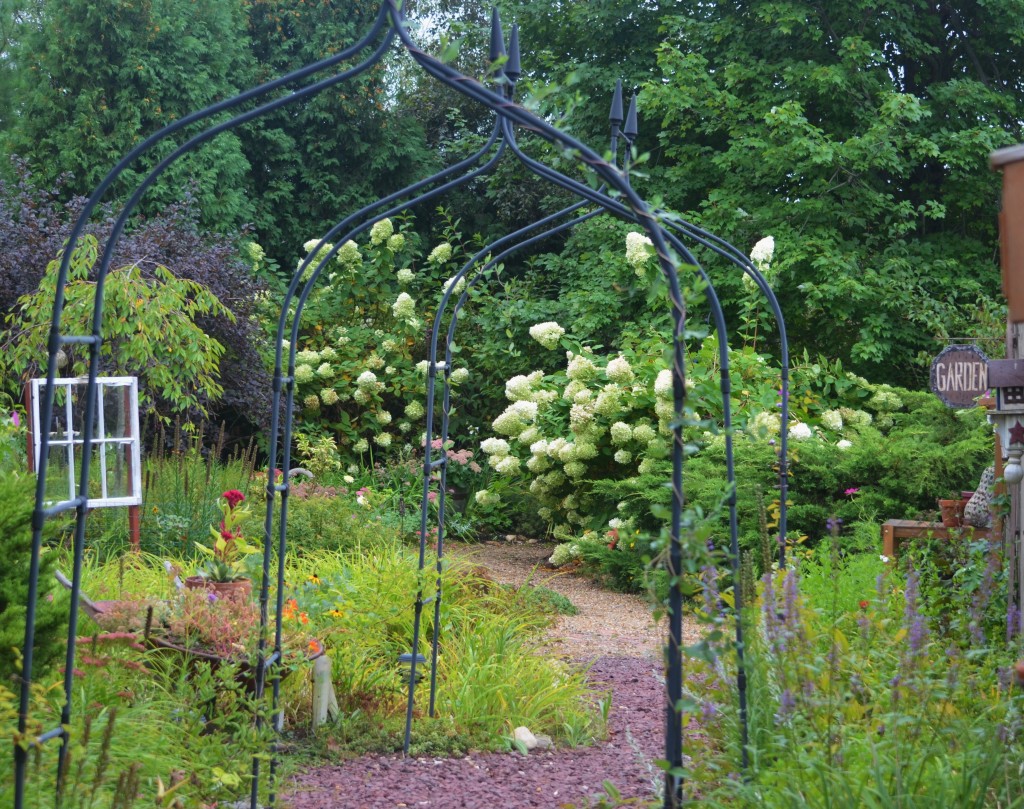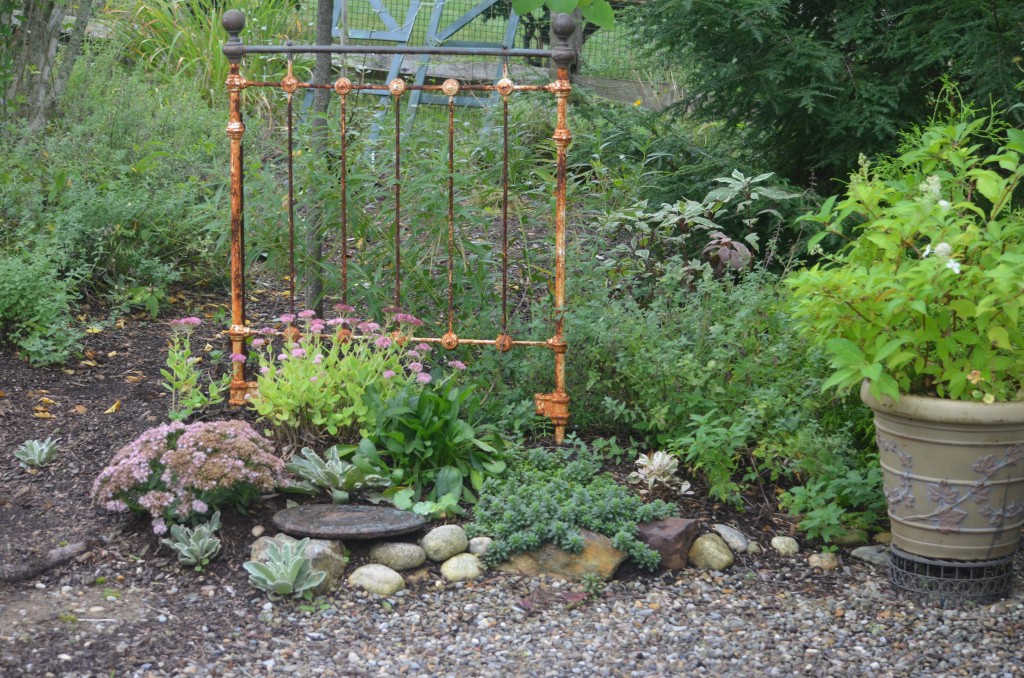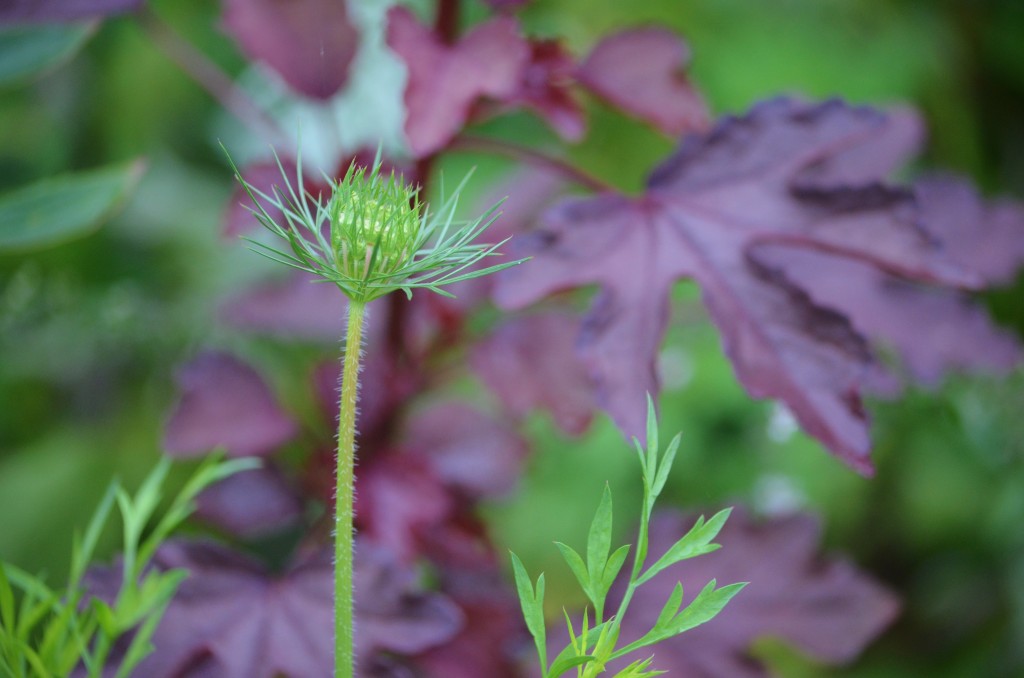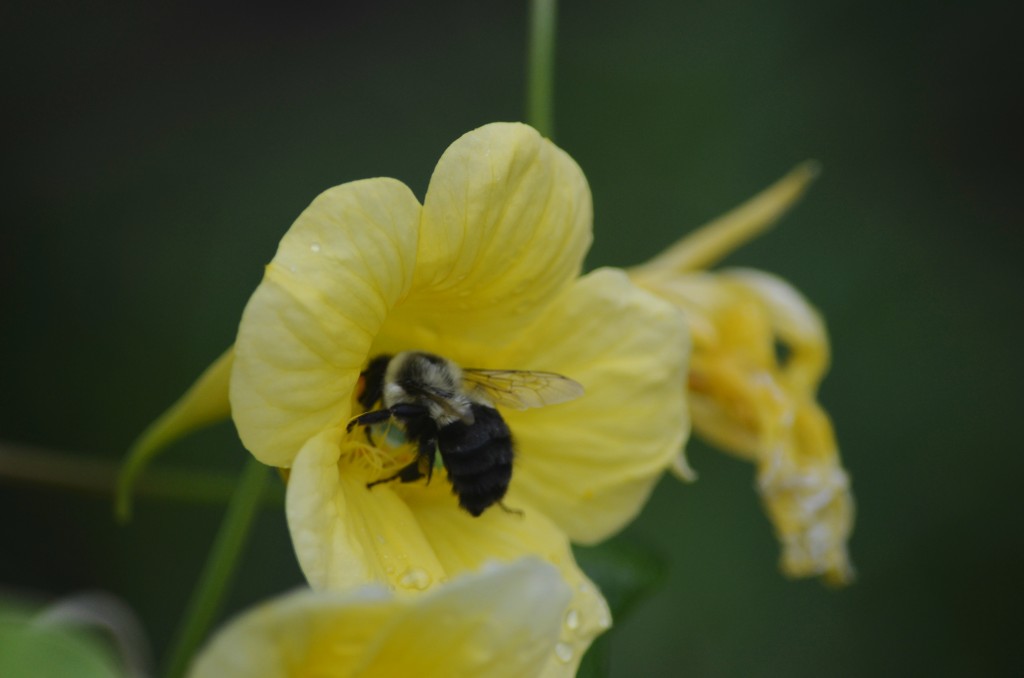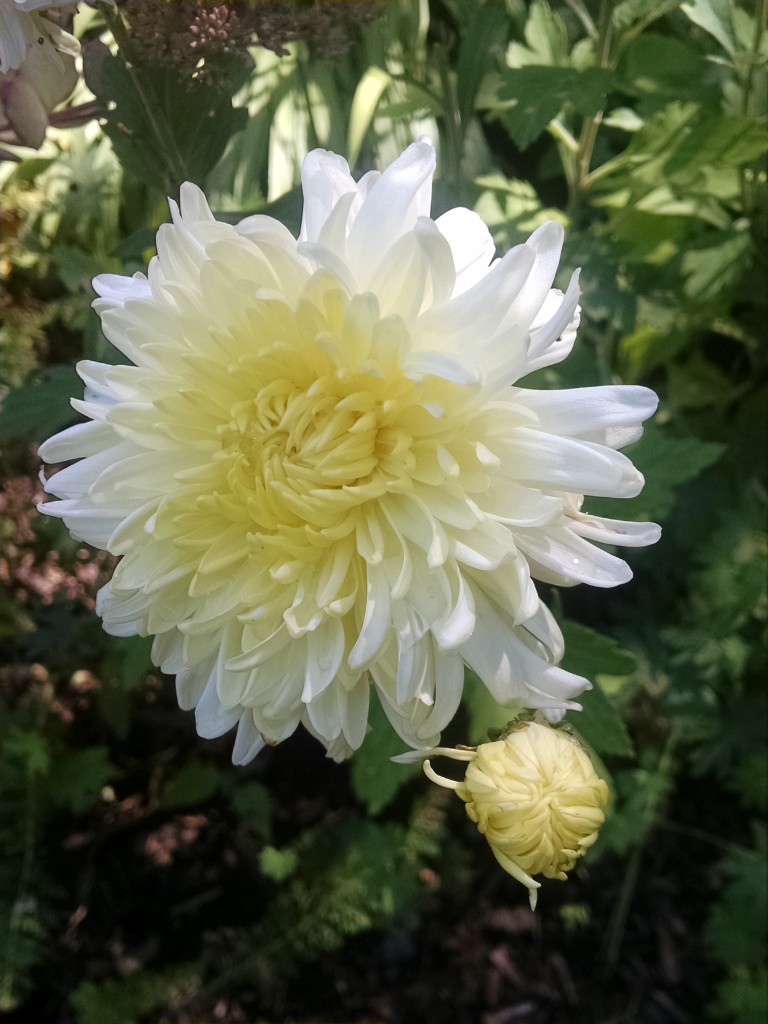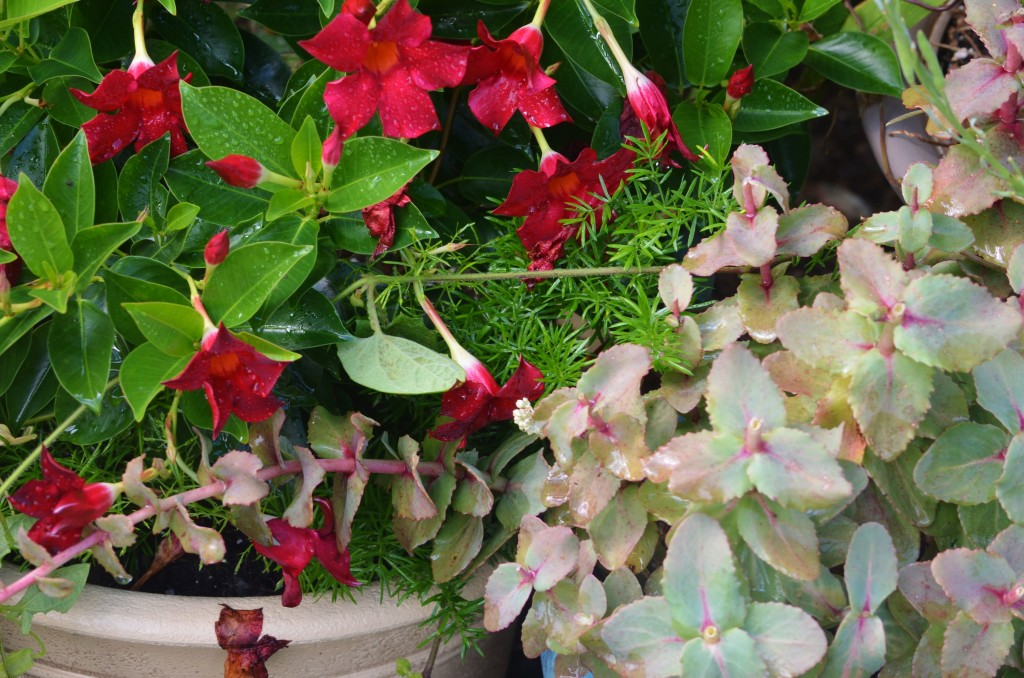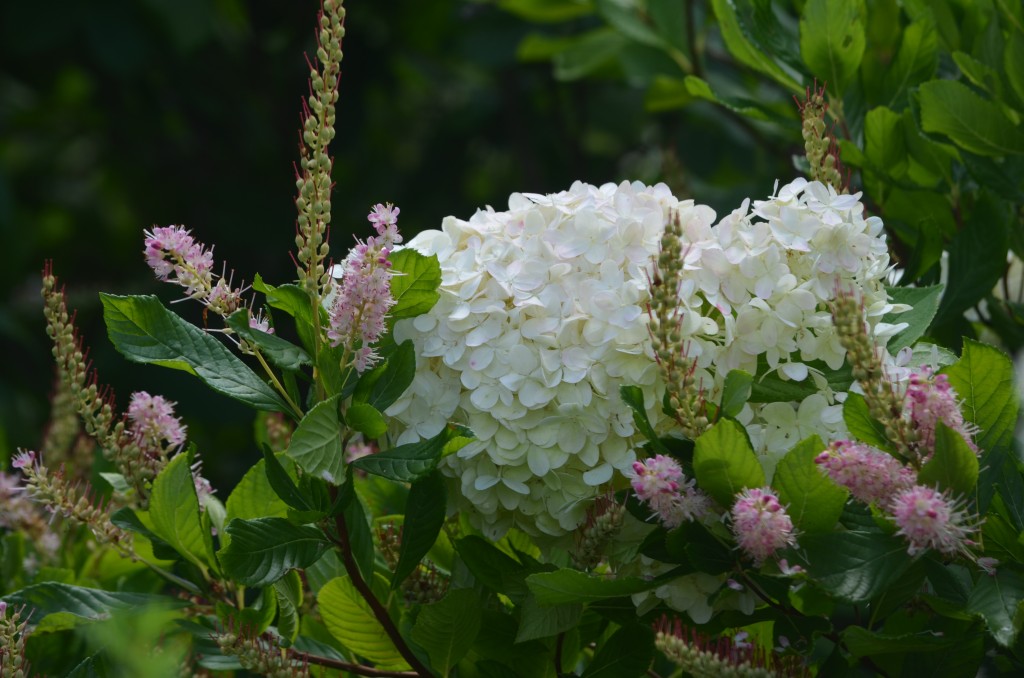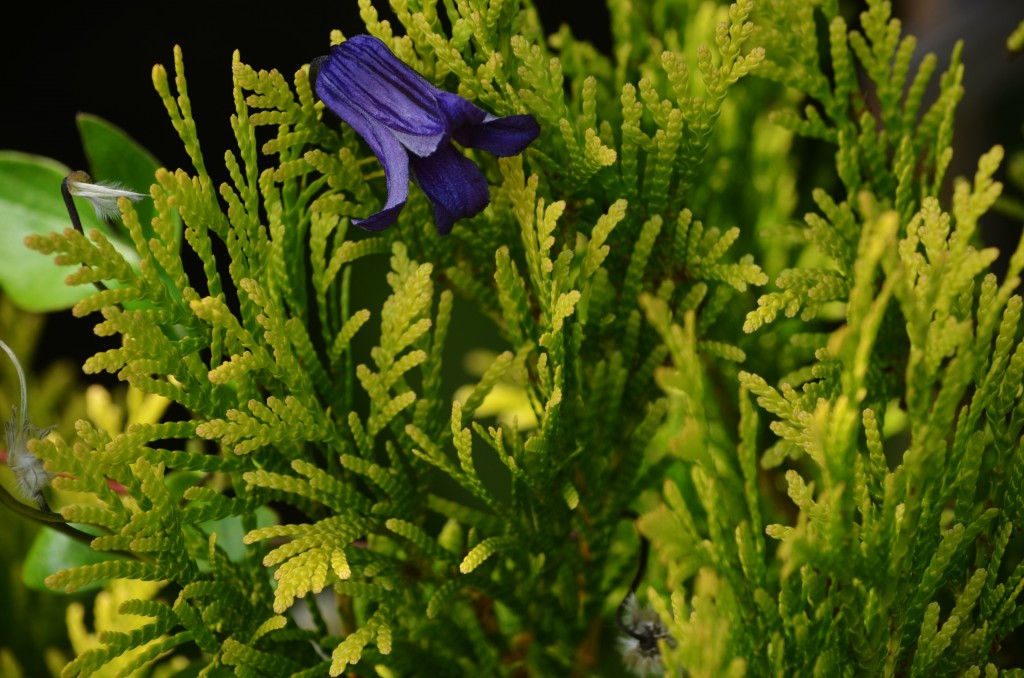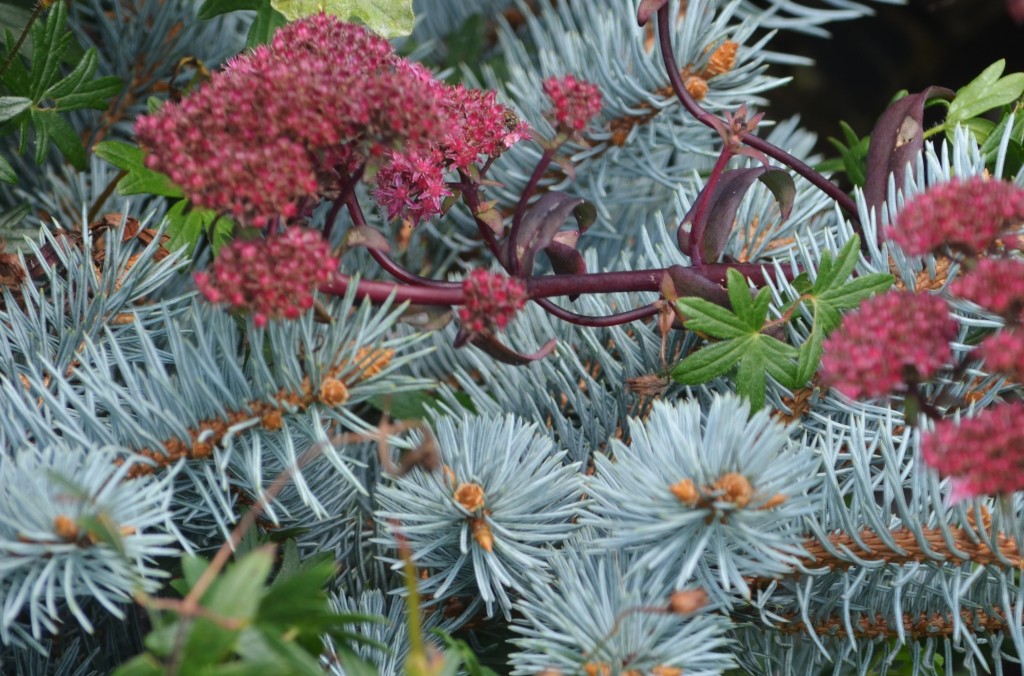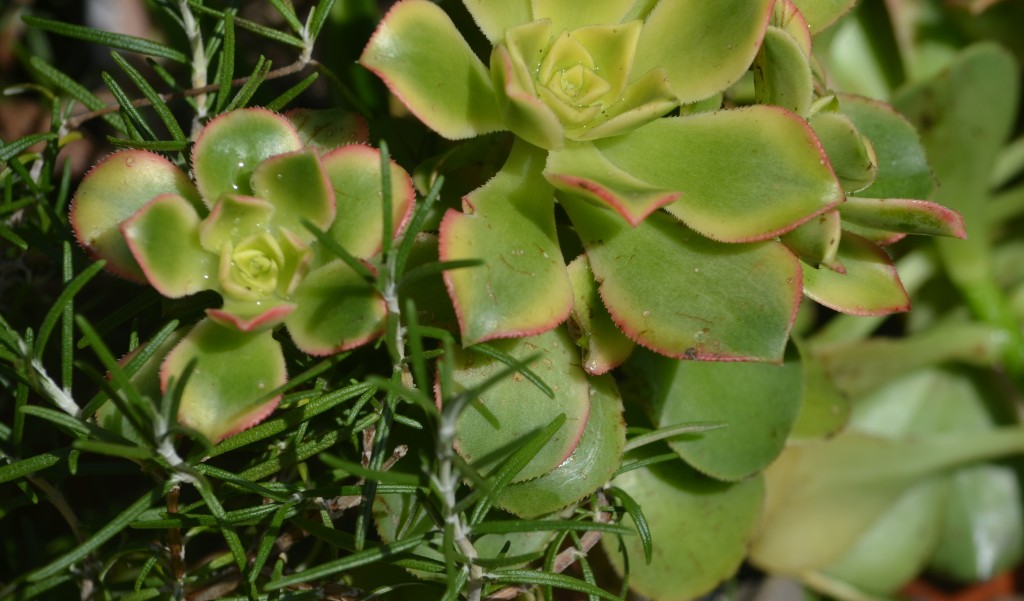as we stretch onto yet another October, I find it a good exercise to head out and see what is holding court in the garden and make note of it so I can tweak spaces if necessary for next year.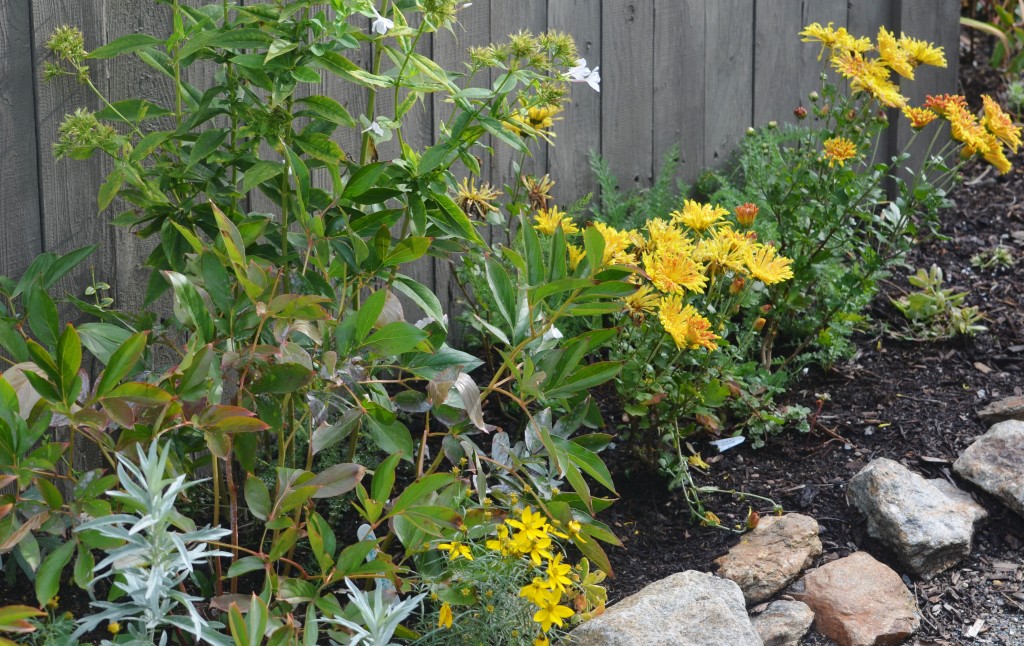
This year was a little unusual in that it was so dry for so long that some of my September stars are actually fashionably late to the party and will now, if the first hard frost holds off, take the stage this month.
Roses and clematis are two divas that held off, and now there are many in full bud and bloom, and curiously some stalwarts that never quit in most years are sleepy this one.
except the Sweet Autumn which is so loud with the buzzing of bees I steer pretty clear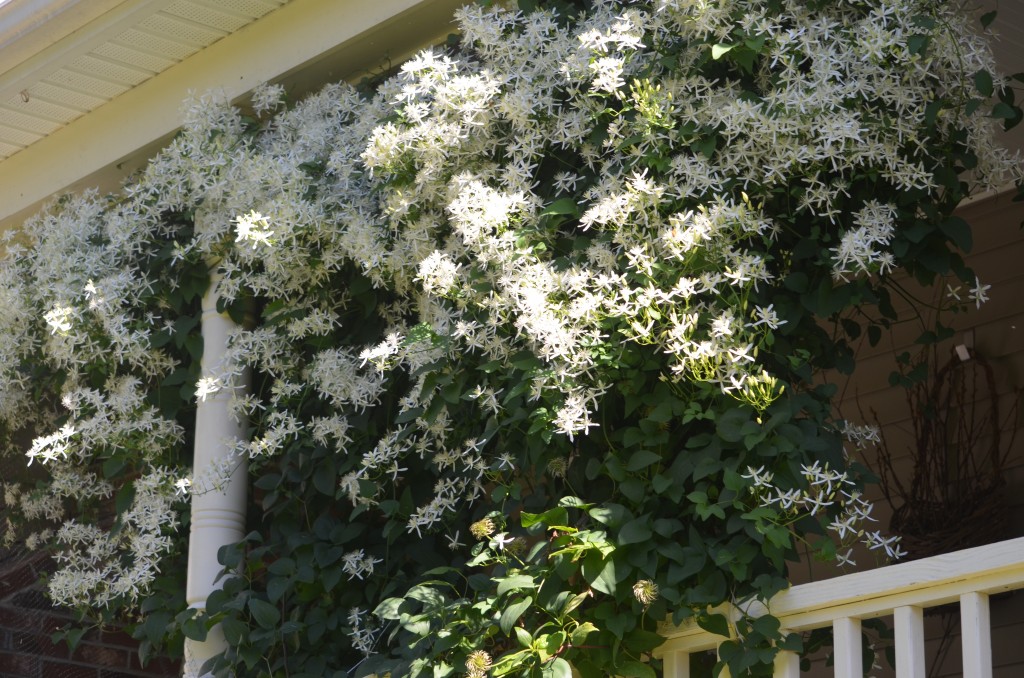
The Drift roses are all popping into flower as is ‘All the Rage’ . Seafoam has been carrying on since late August and the red Knockouts are sporadically showing off.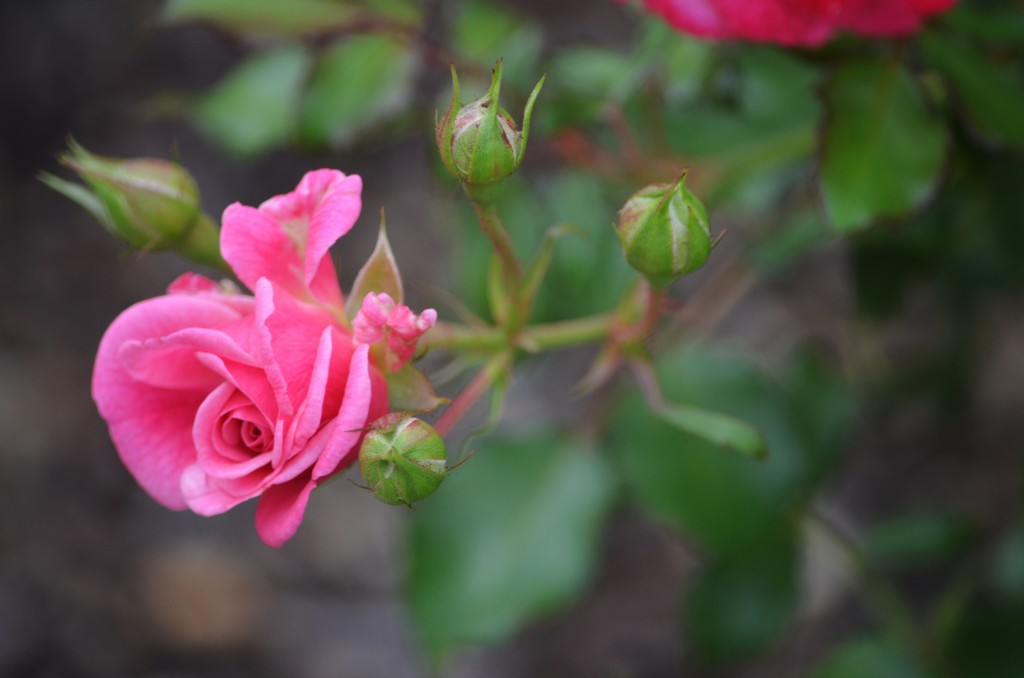
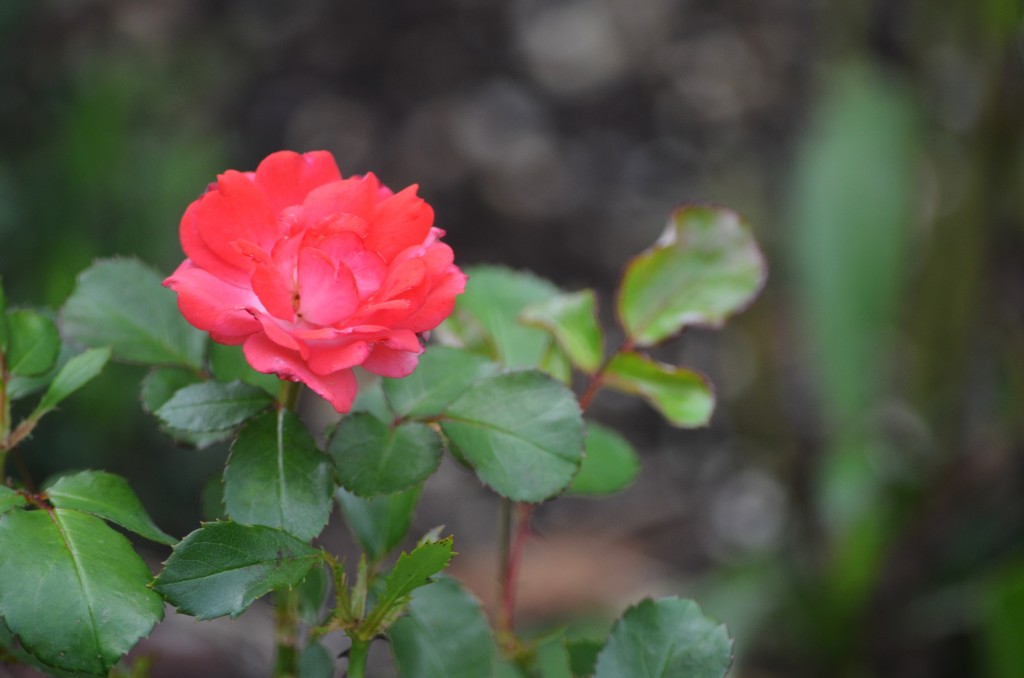
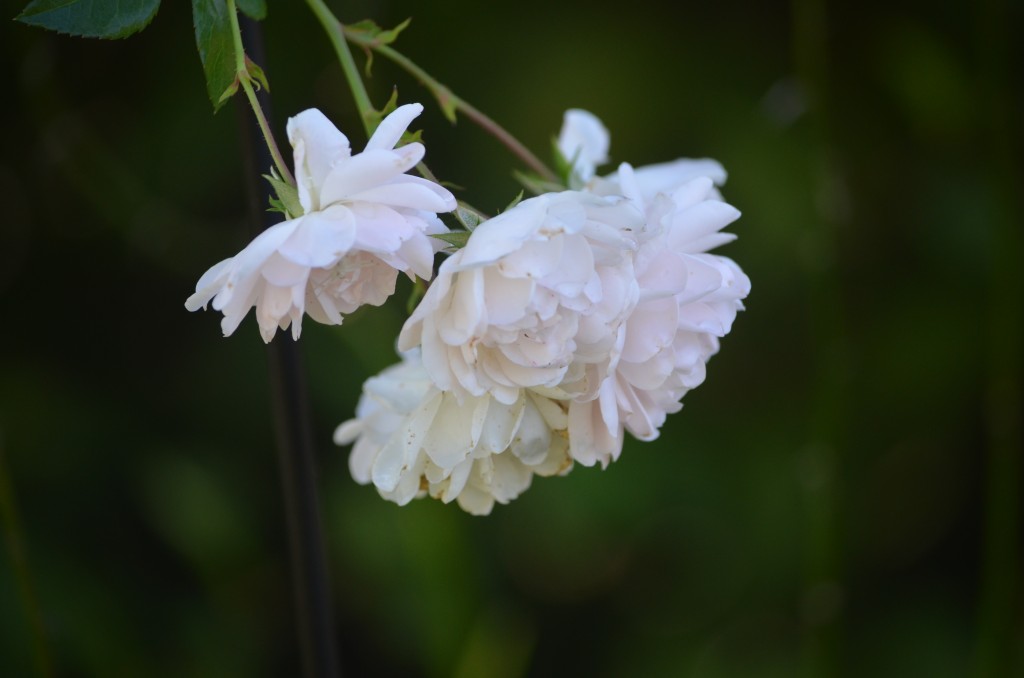
On the other hand, ‘The Fairy’ , a polyantha which almost always blooms without rest has been all leaves since July, as have the red un-named climber and the white ‘Magic Carpet’
Similarly, most of the September re-blooming clematis were no shows, and now Pope John Paul II is in full bud again.
Th annual vines can be counted on to brighten the place up until frost.
Black eyed susan vine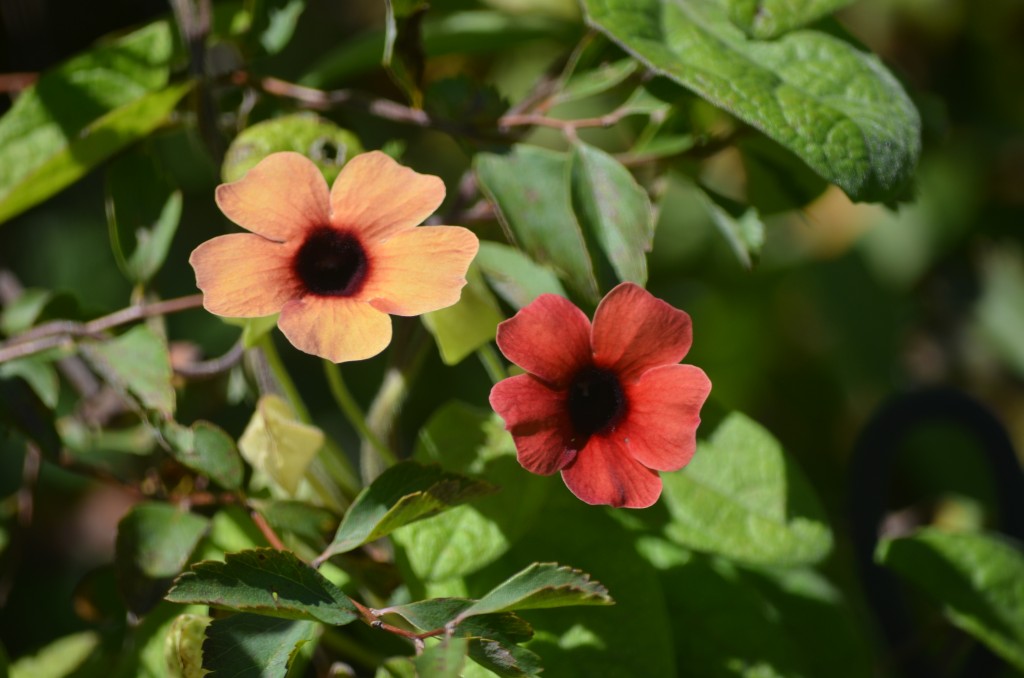
Morning glories and still in vigorous growth and flower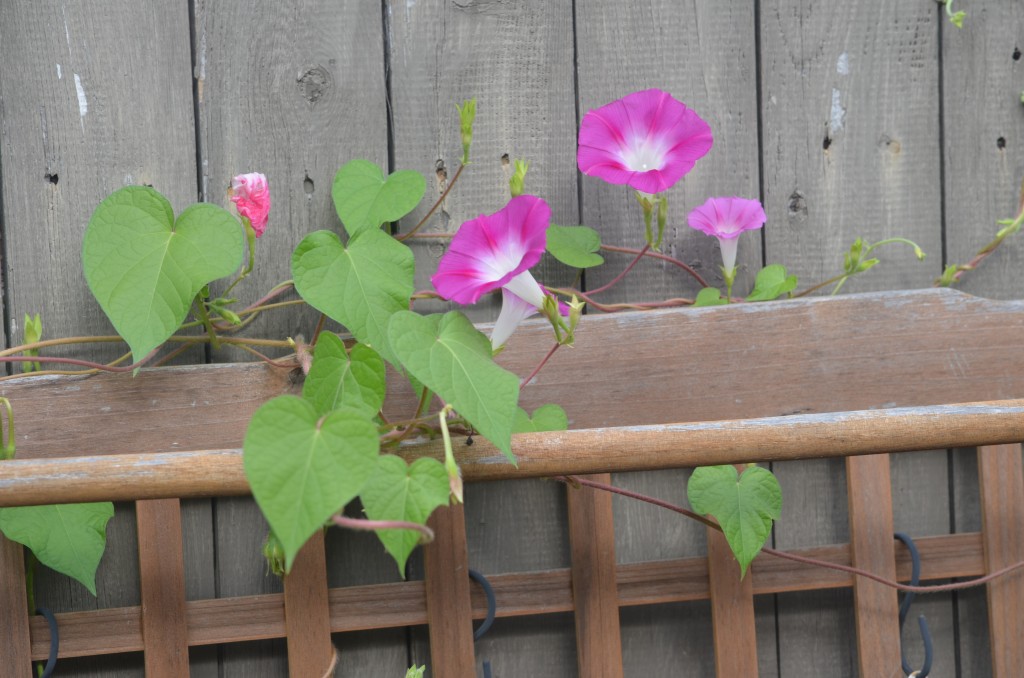
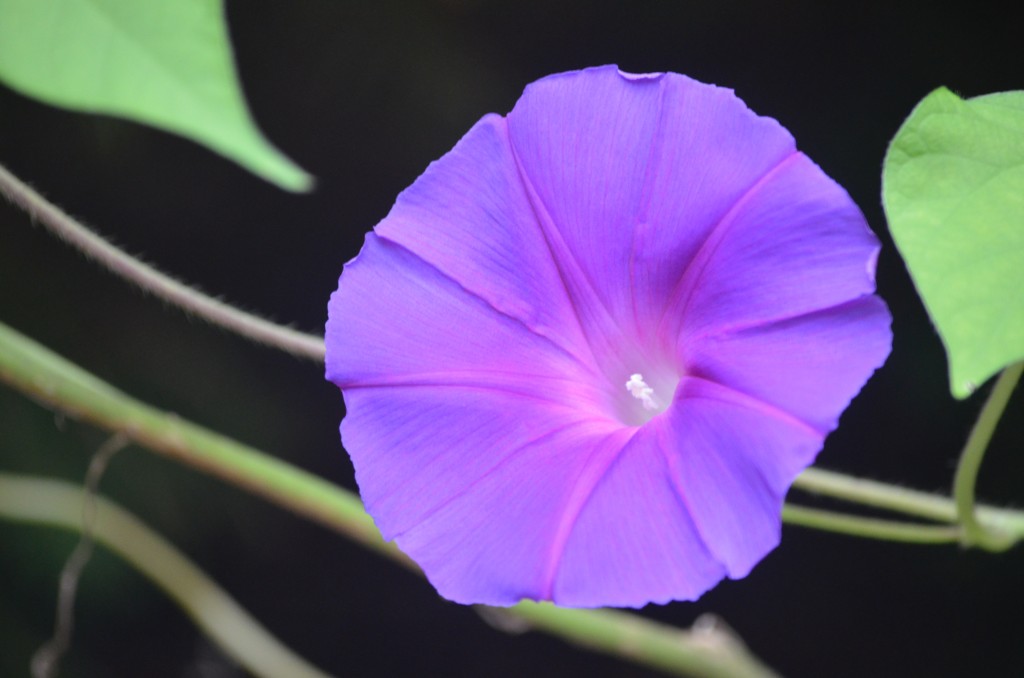
the delicate cypress vine looks so sweet growing into a birdcage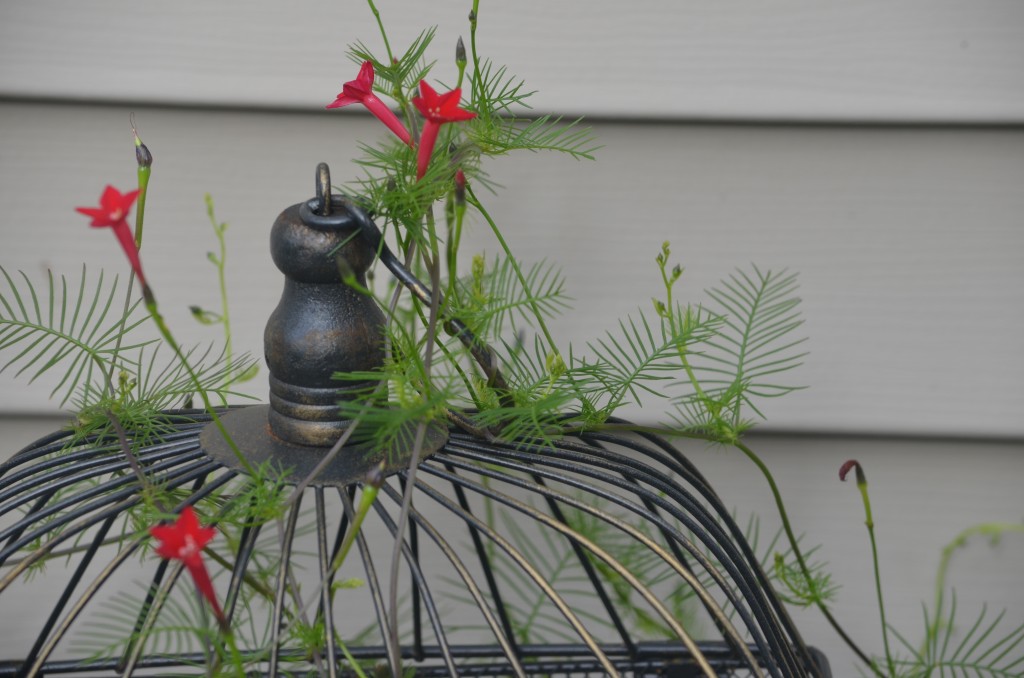
and the perennial Major Wheeler honeysuckle typically blooms until December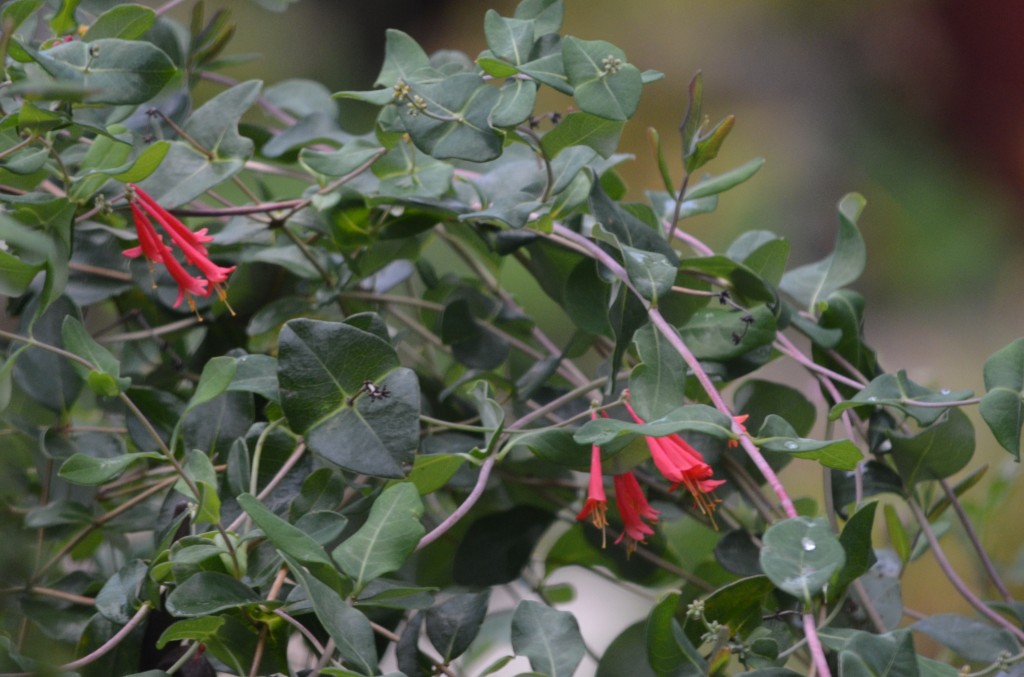
the moonflower/ cobea scandens/ sweet pea combination in front of the garage has been a favorite of mine all season long with the monnflowers being the dramatic scene stealers currently.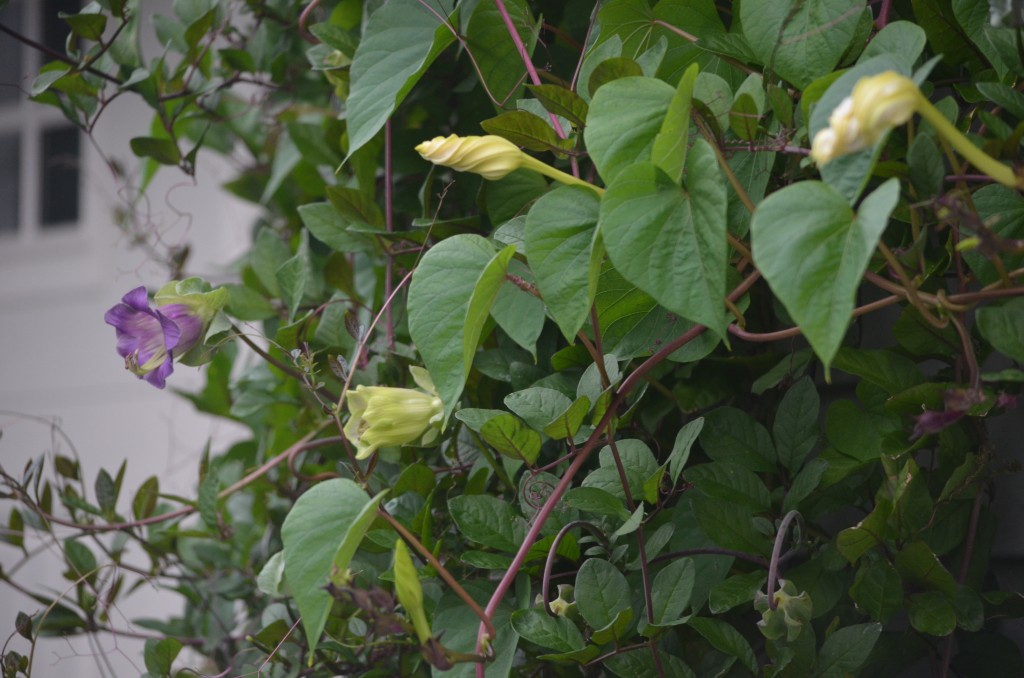
Of course it is time for the late chrysanthemums
Red Daisy will soon open 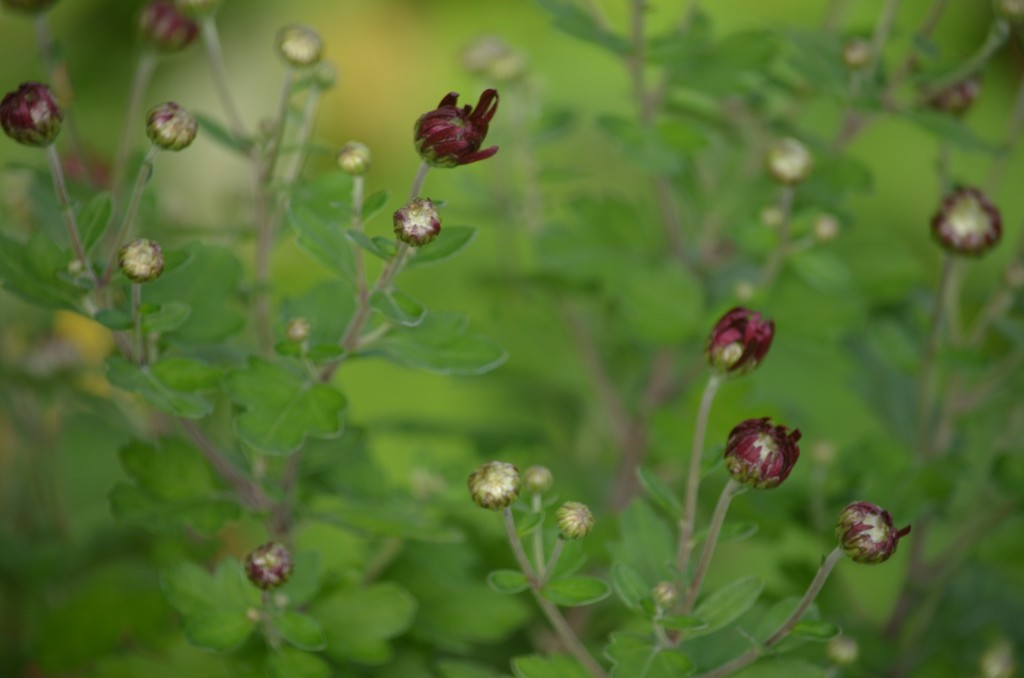
the montauk daisy or nipponanthemum nipponicum, has been here for years and never bloomed well at all, but this year it looks fantastic.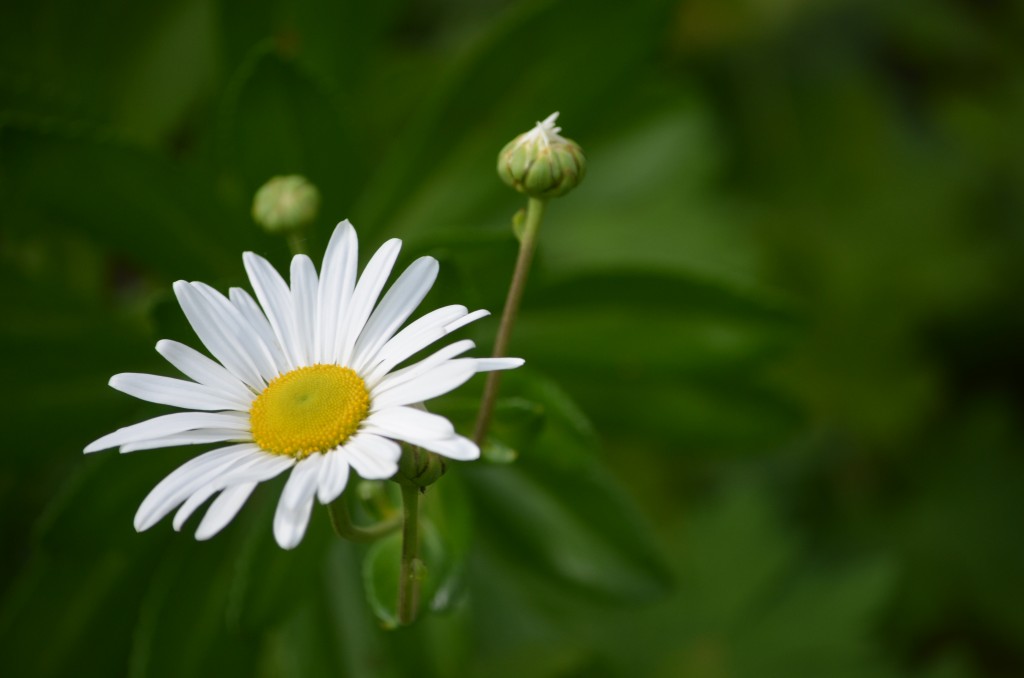
Matchstick is a very cool mum, called a spoon type because of the shape on the edge of the petals 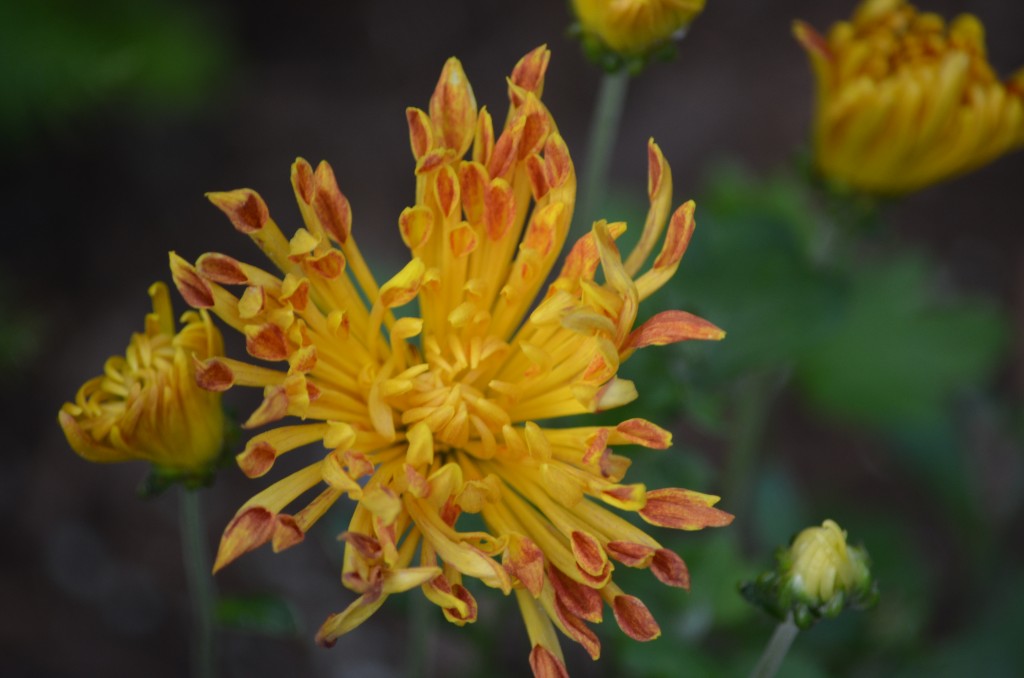
and Mellow Moon has been going on for some time now with no signs of stopping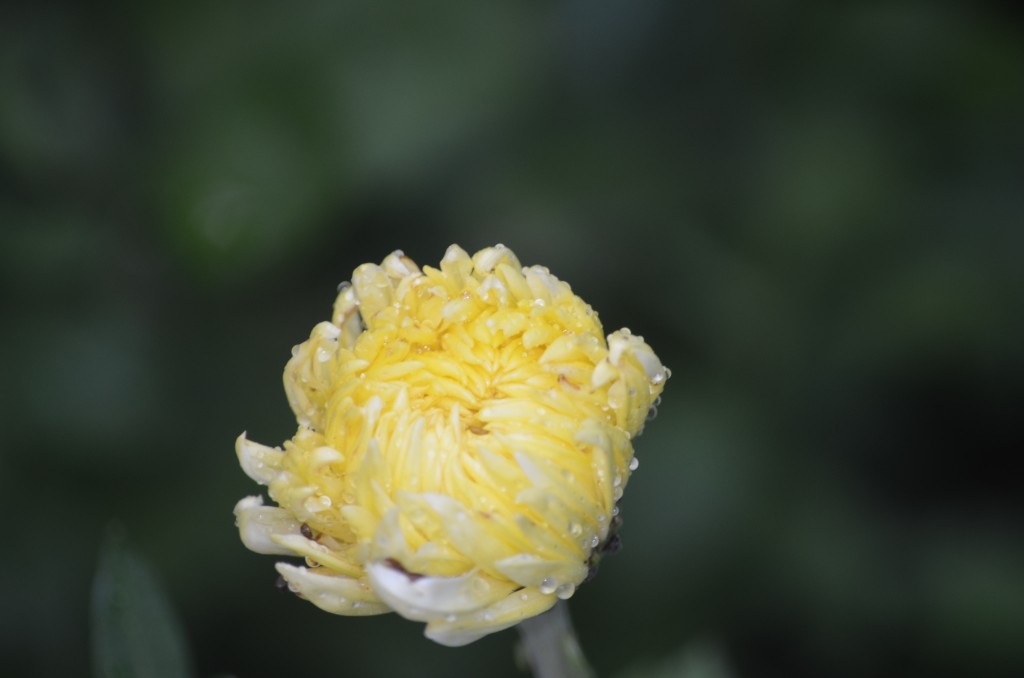
many more including the very late Sheffield and Copper Penny mums are in full bud waiting in the wings to carry the show late into the year.
Also bringing loads of color and interest to the stage are the berries and rose hips.
the beautyberry ,callicarpa dichotoma ‘Early Amethyst’ is a standout for late season interest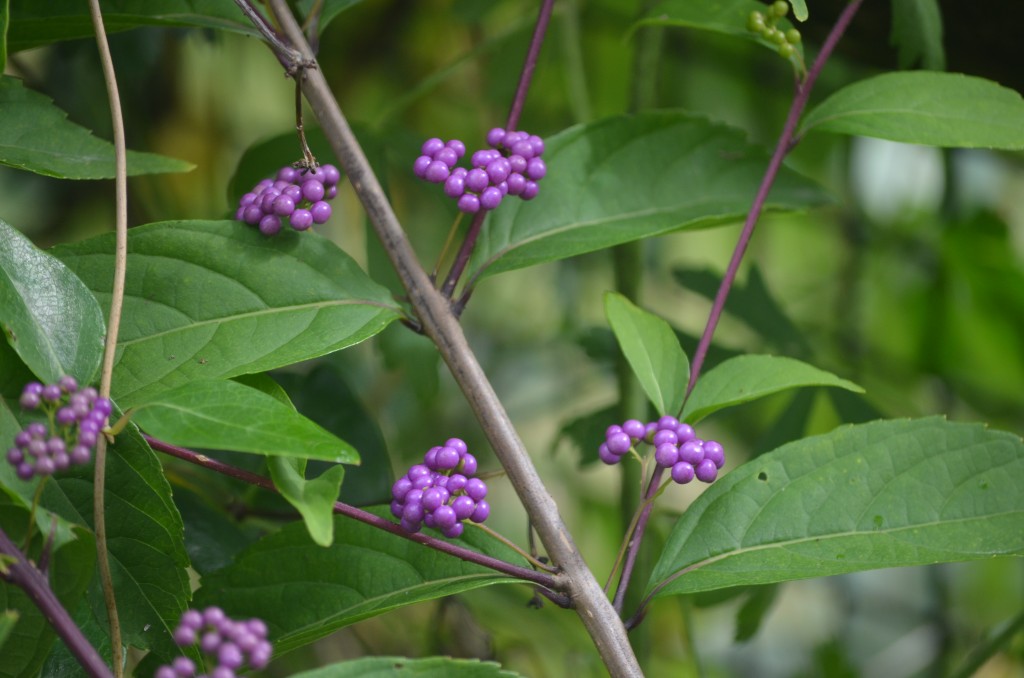
the two snowberries, symphoricarpos albus , and.s. doorenbosii ‘Amethyst’ get many inquiries , they should be planted more given their tough as nails constitution, bee friendly flowers and unusual berries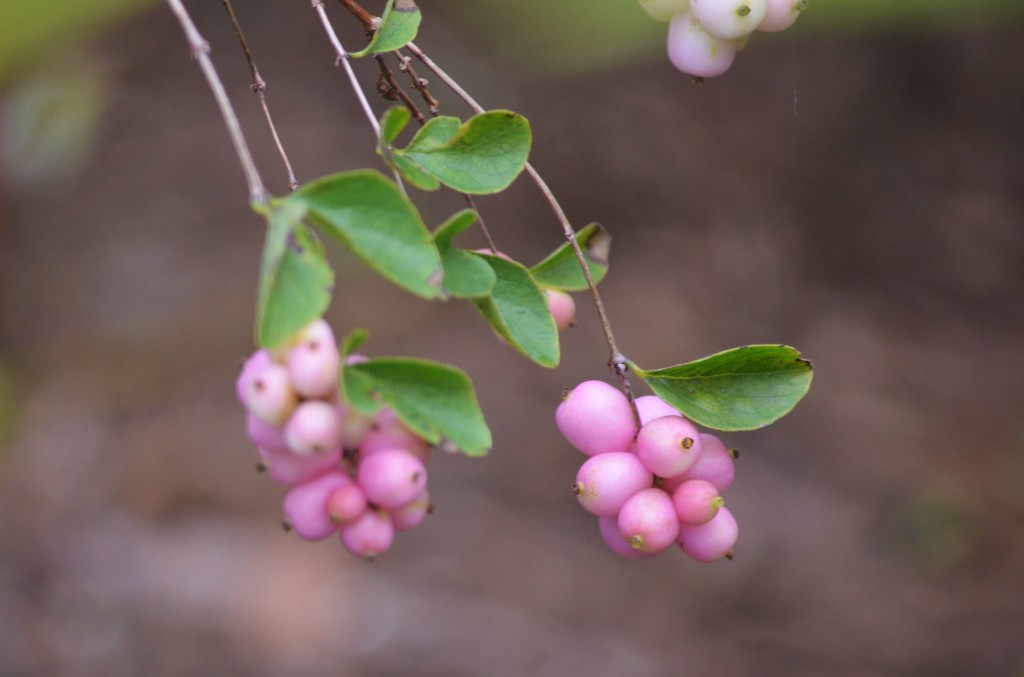
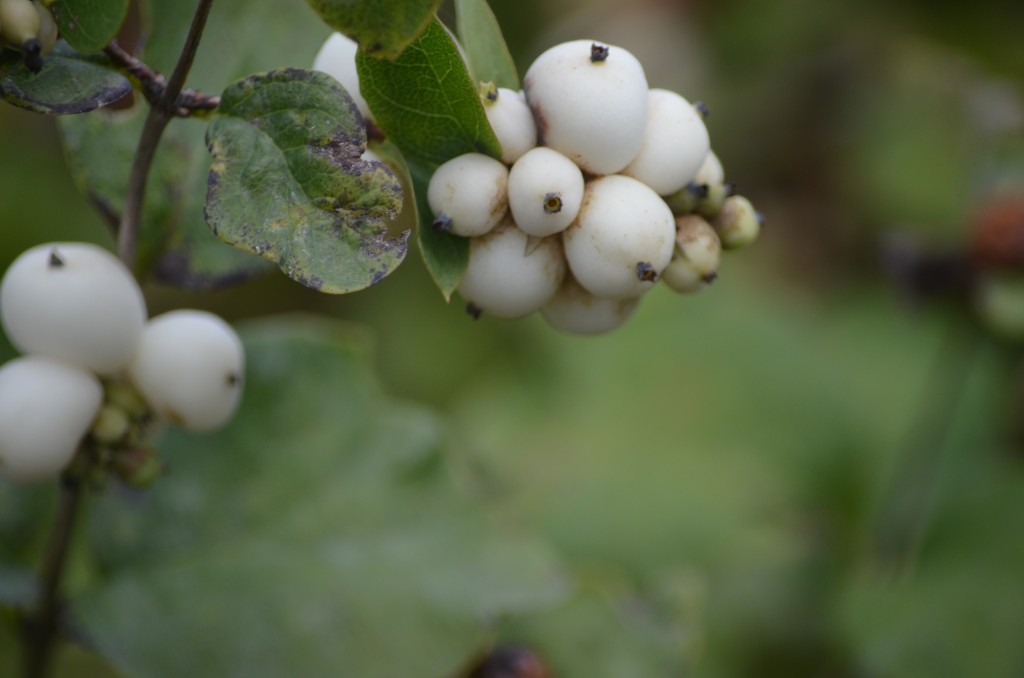
rarely do the berries on the cranberry bush viburnum hang around for too long, the birds scoop them right up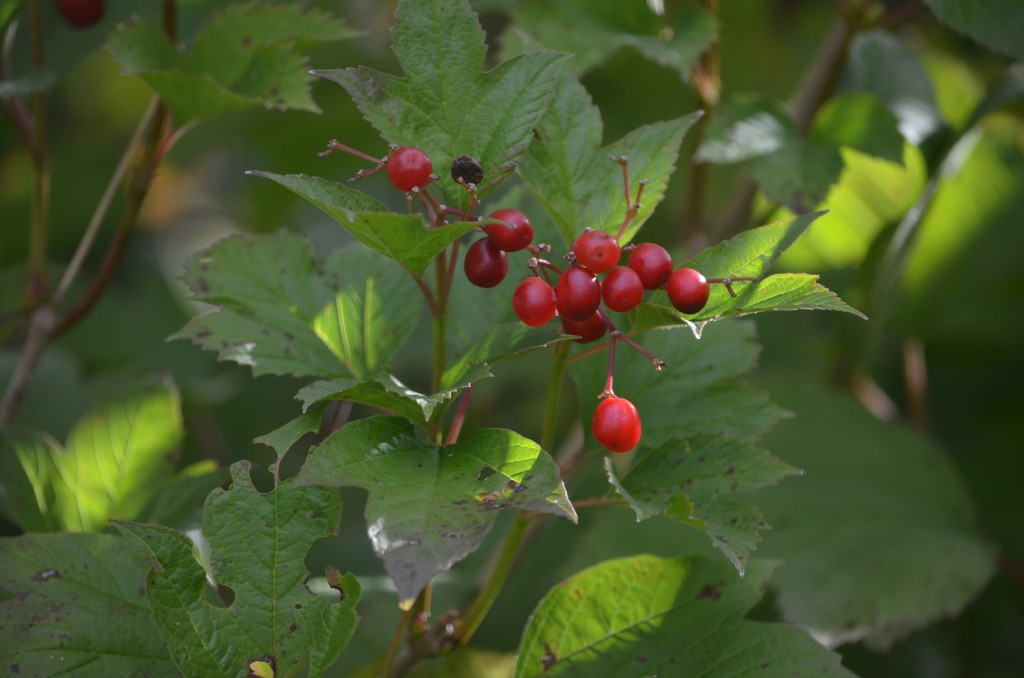
the deciduous hollies are all decked out
ilex verticillata ‘Winter Gold’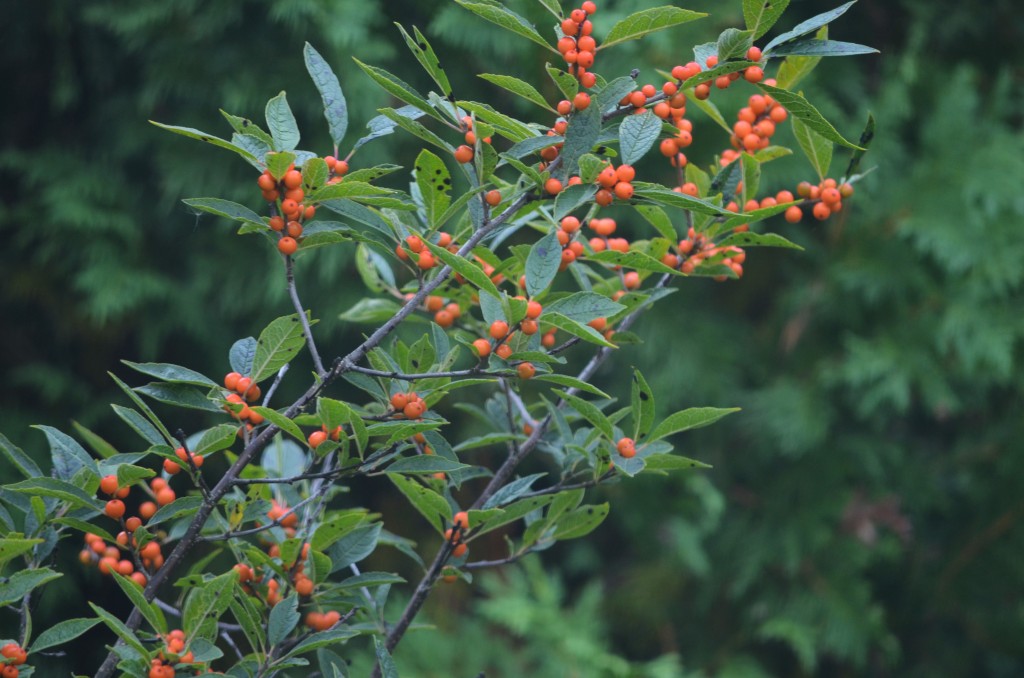
‘Berry Heavy’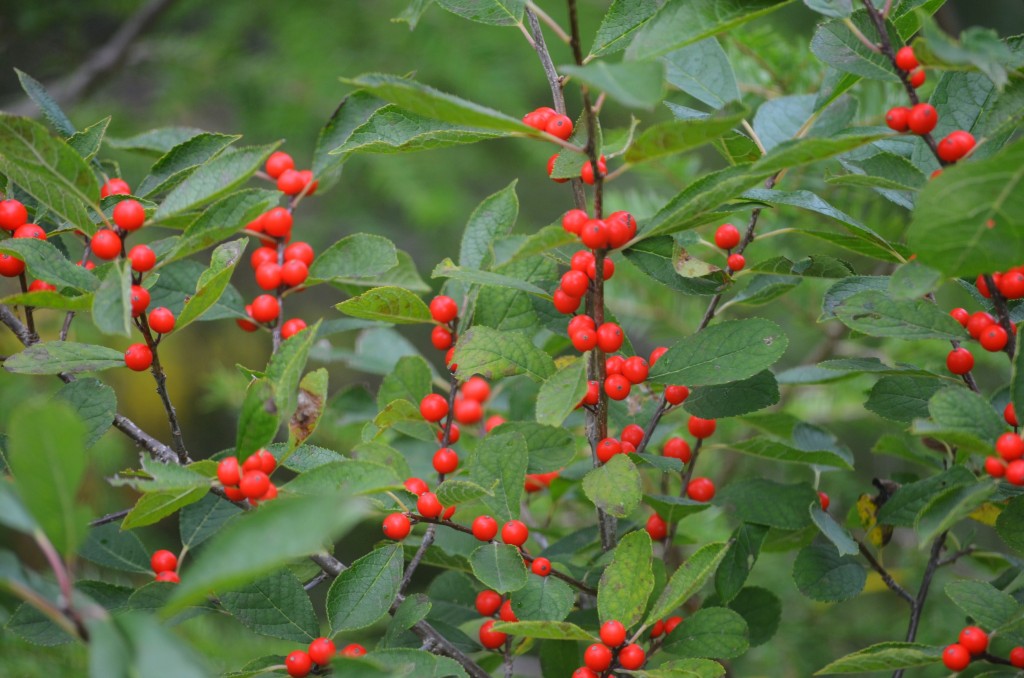
and I think this one is ‘Sparkleberry’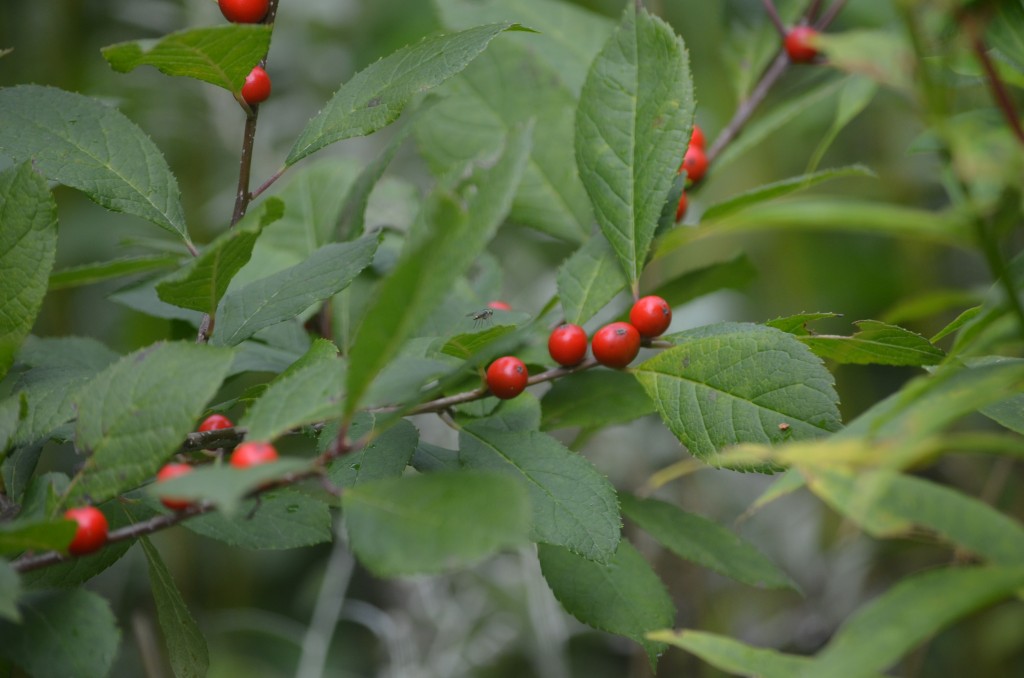
the rose hips of Rosa glauca never fail to disappoint . hard to believe they are the result of flowers that bloomed so long ago in early June
the hips on all the rosa rugosas tend to get taken by birds almost immediately so they don’t get to add much to the Fall show.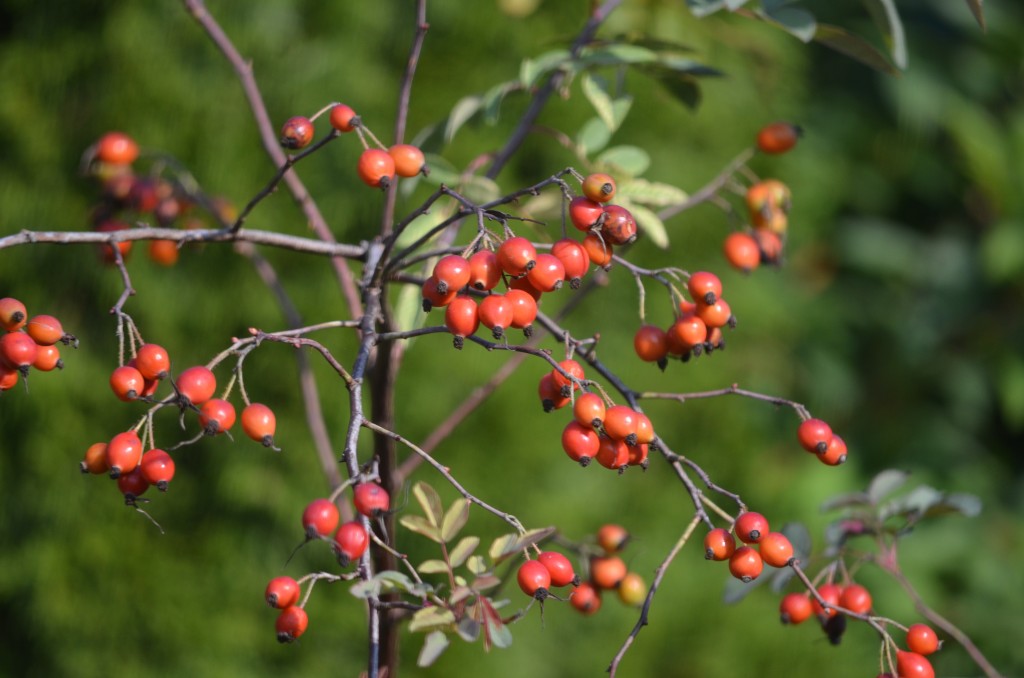
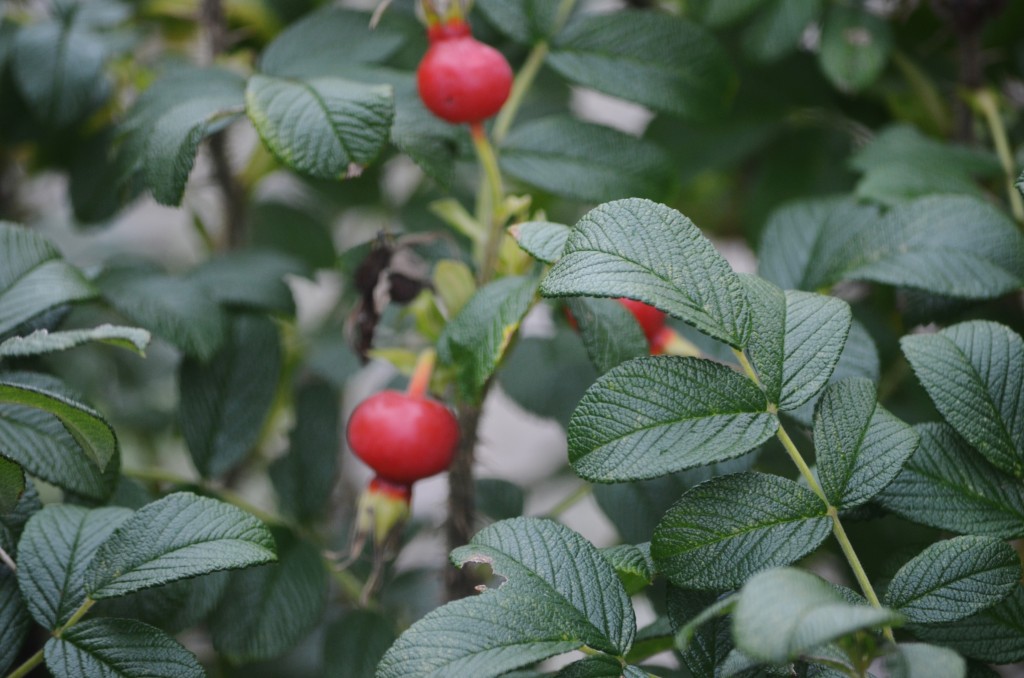
There are a few other perennials and shrubs rounding out the cast of characters keeping it real here……..
I add gallardia , or blanket flower into just about any bed I can fit a few in. It is exceptionally long blooming, easy to grow , and I love the bright color play off the late season purples and blues of the asters and gentians. I have had bad luck with some of the newer introductions like ‘Oranges and Lemons’ or ‘ Fanfare’, overwintering , and ‘Mesa Yellow is not a very vigorous grower here, although the dwarf ‘Goblin has performed well .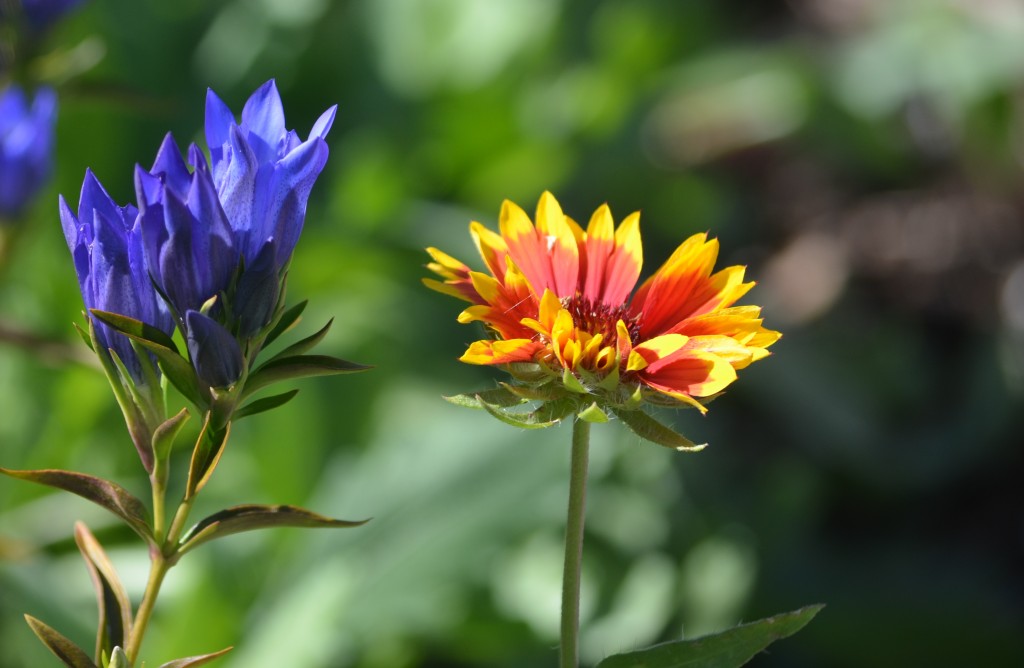
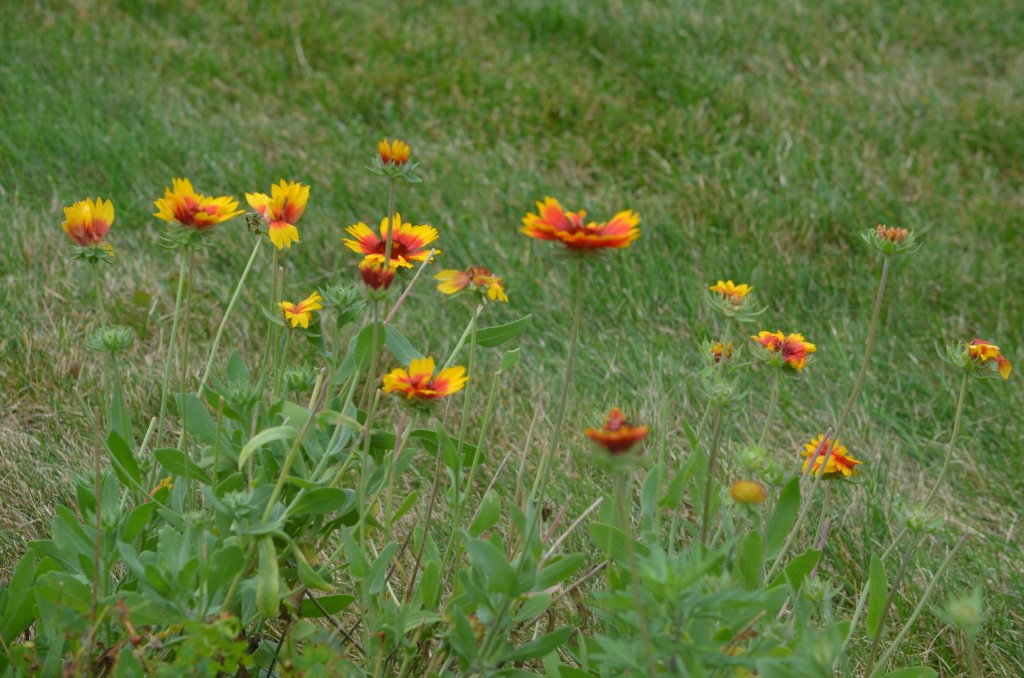
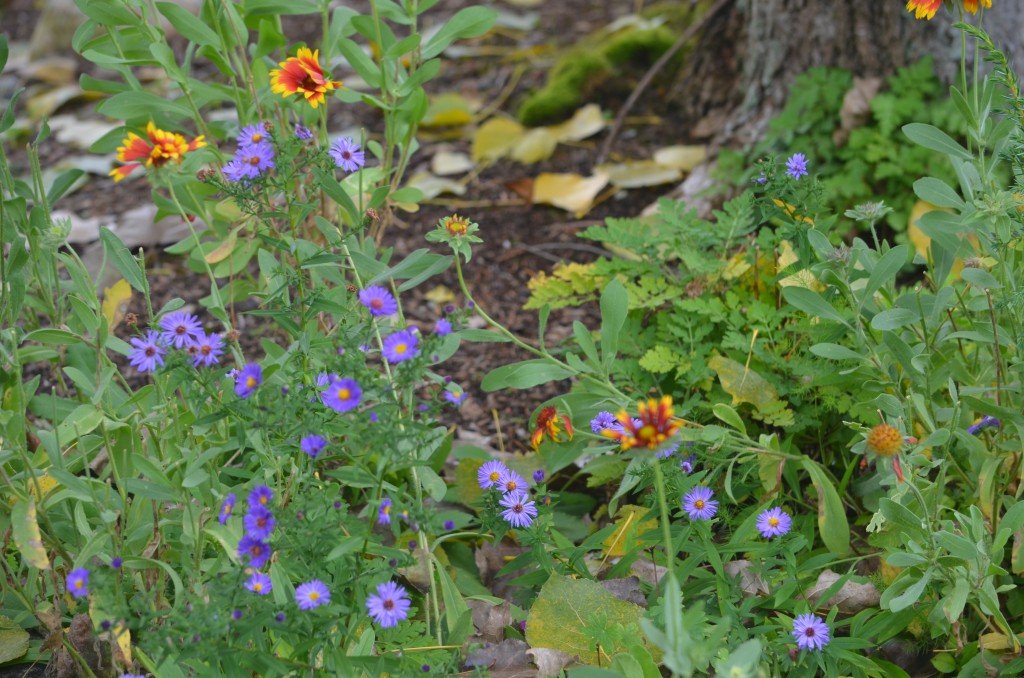
because I cut back my garden phlox randomly right up until the 4th of July they will continue to bloom until frost. ‘David’ is the white, ;Nora Leigh’ the bi-color .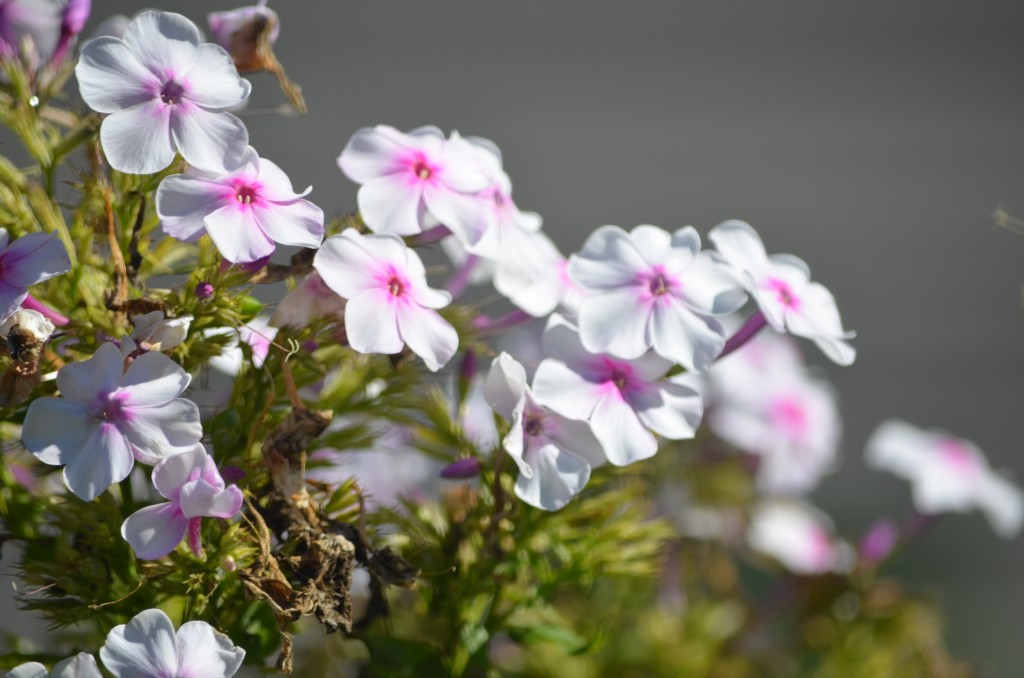
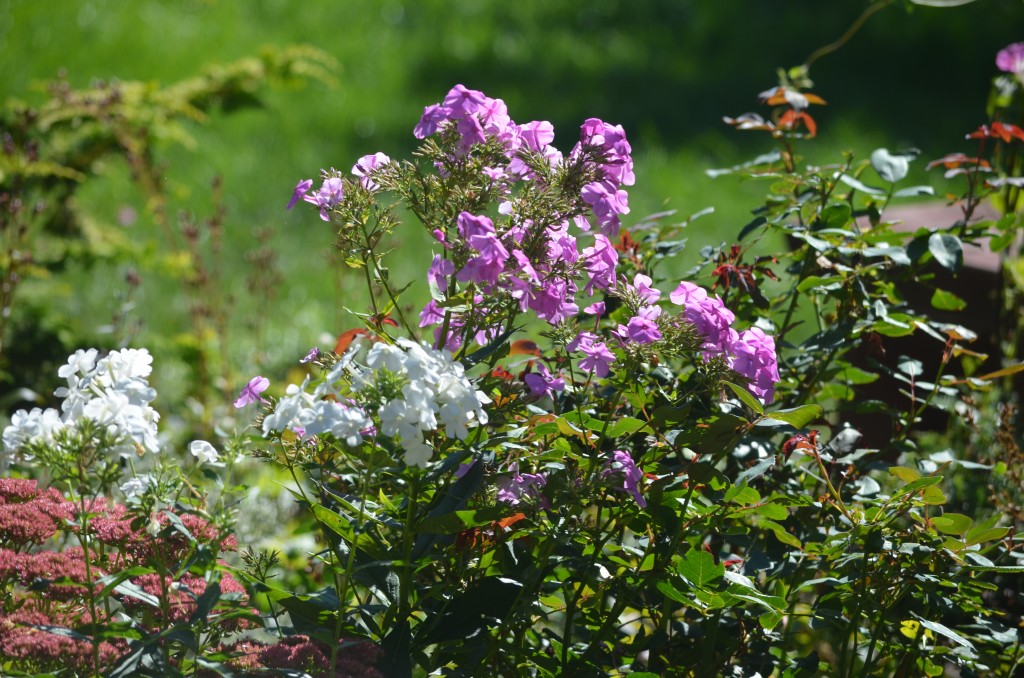
something about the weather has caused the hydrangea paniculatas to take on a very dark color as they fade and the various tall sedums , too , are turning deep russett red which looks fantastic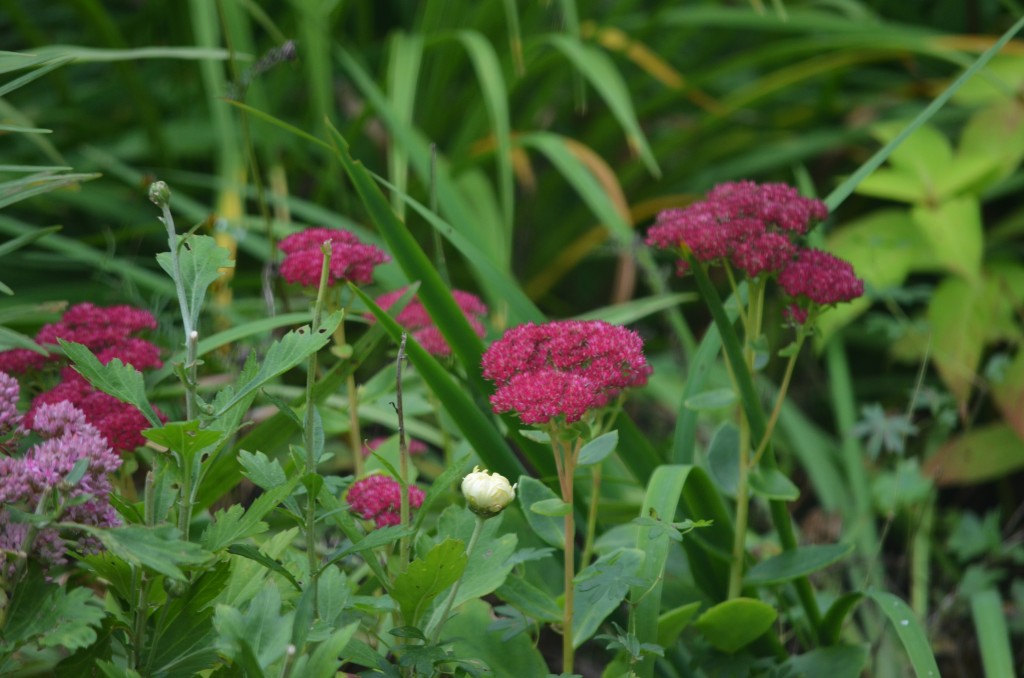
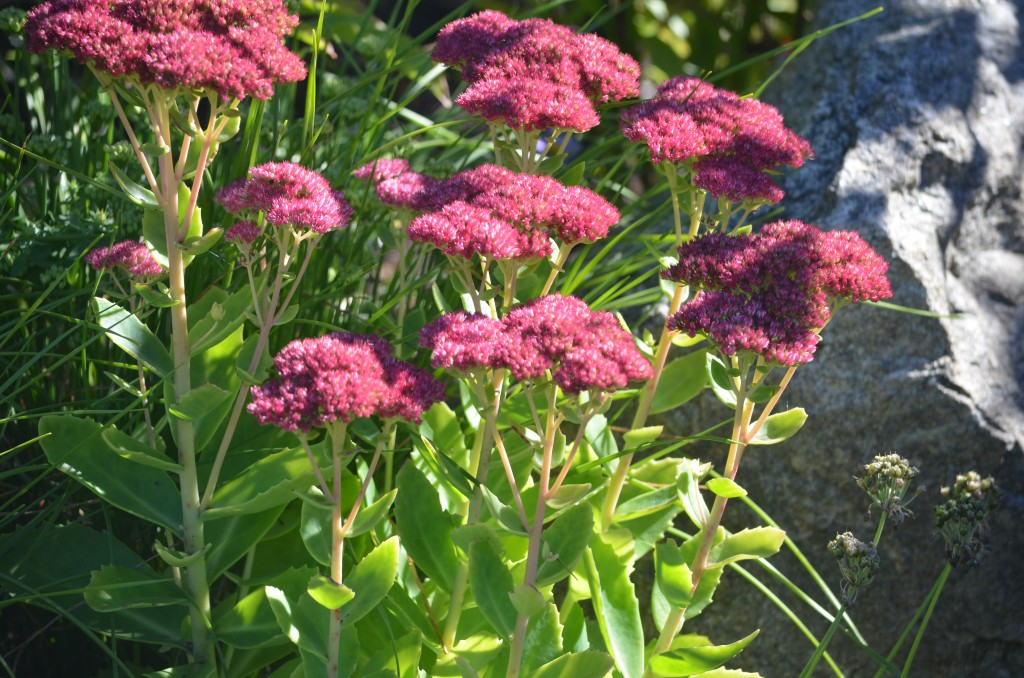
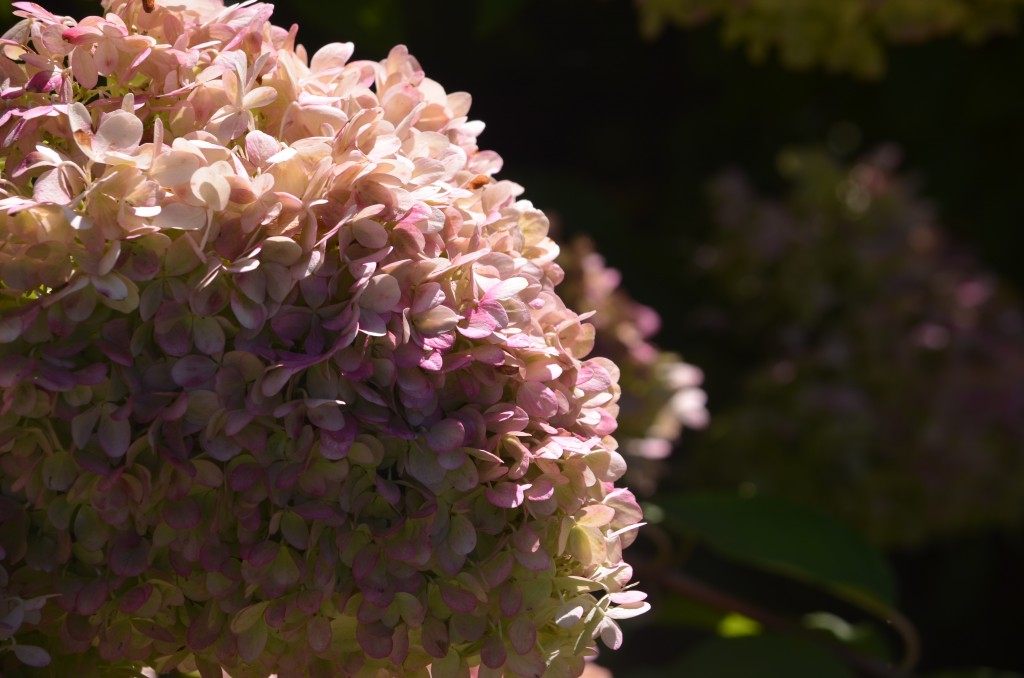
the peony foliage is turning into it’s dramatic fall colors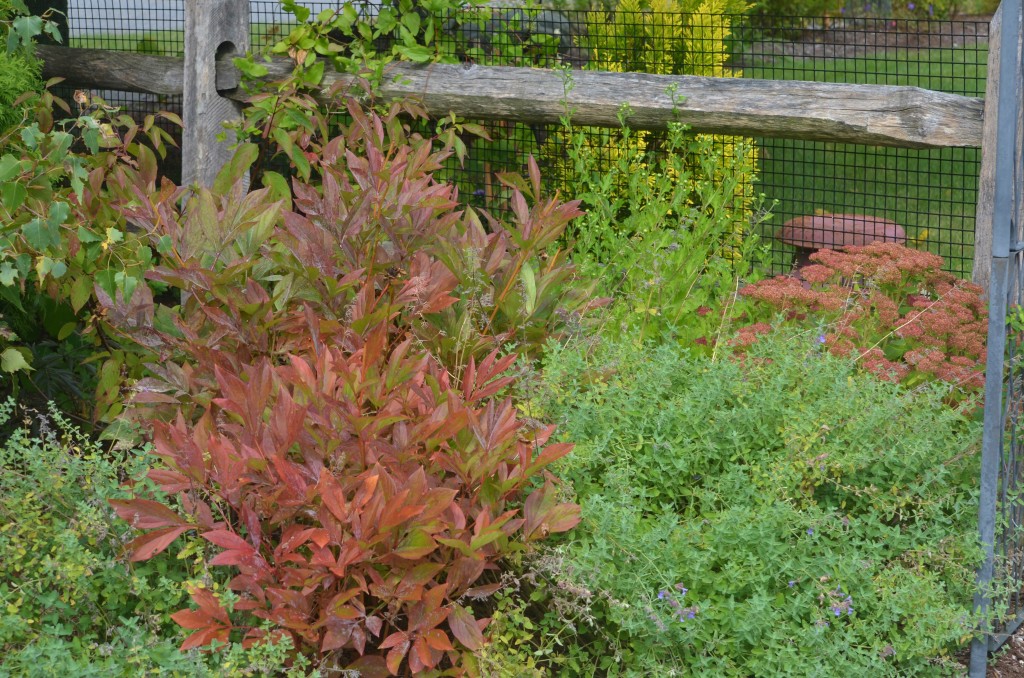
chocolate Joe Pye Weed fills in nicely in back of the annuals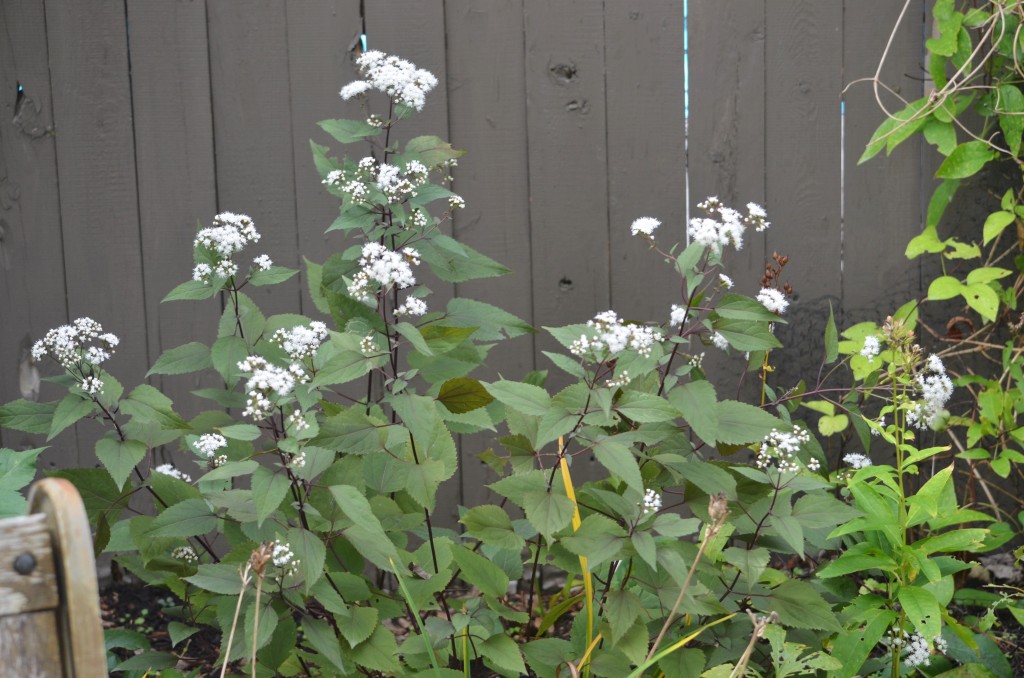
geranium ‘Rozanne’ , verbena ‘Annie” and hydrangea ‘Twist and Shout’ all just never seems to stop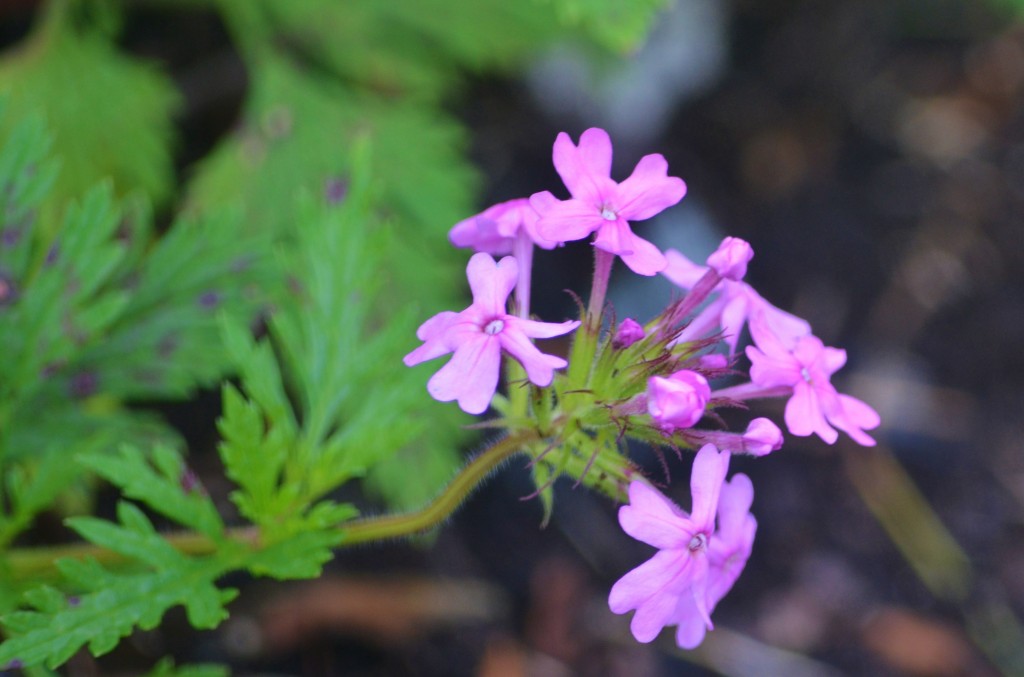
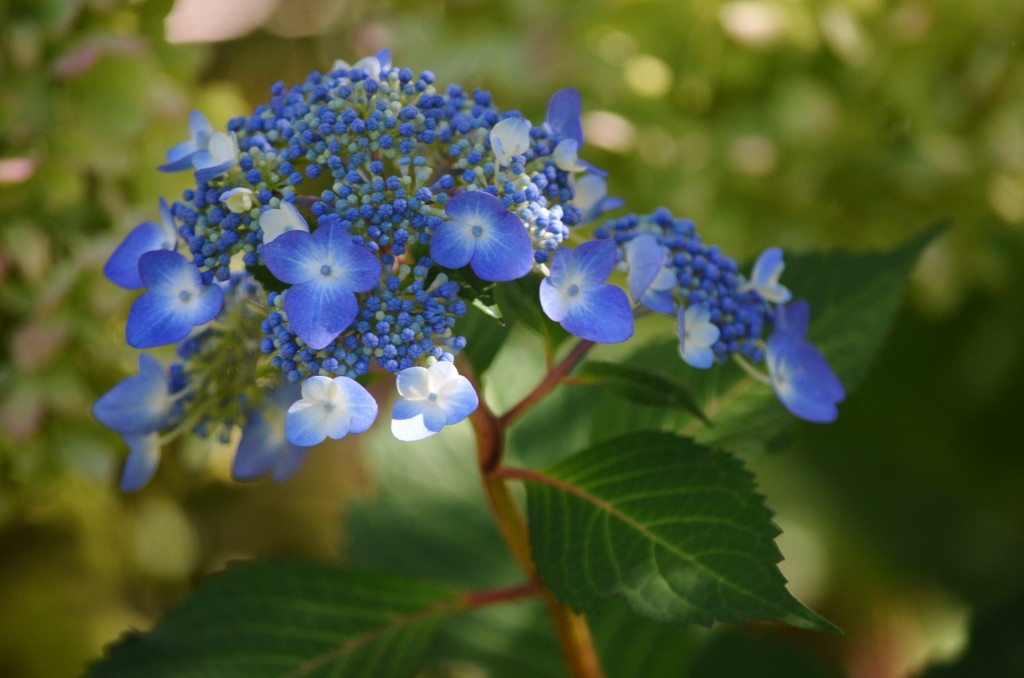
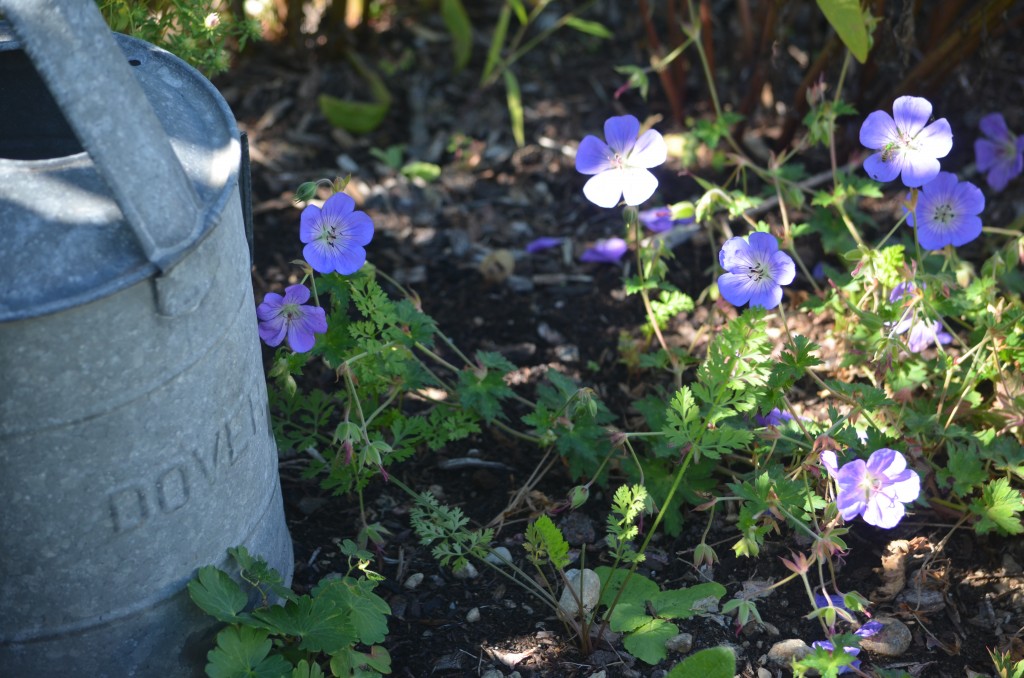
the foliage on the hydrangea serrata cultivars is always a show stopper..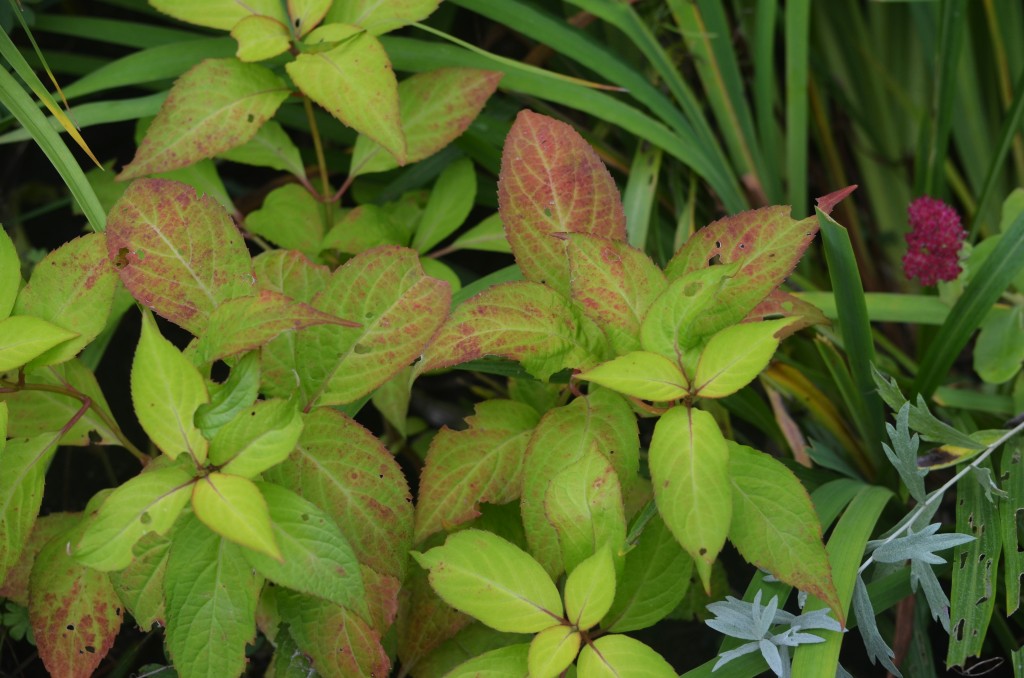
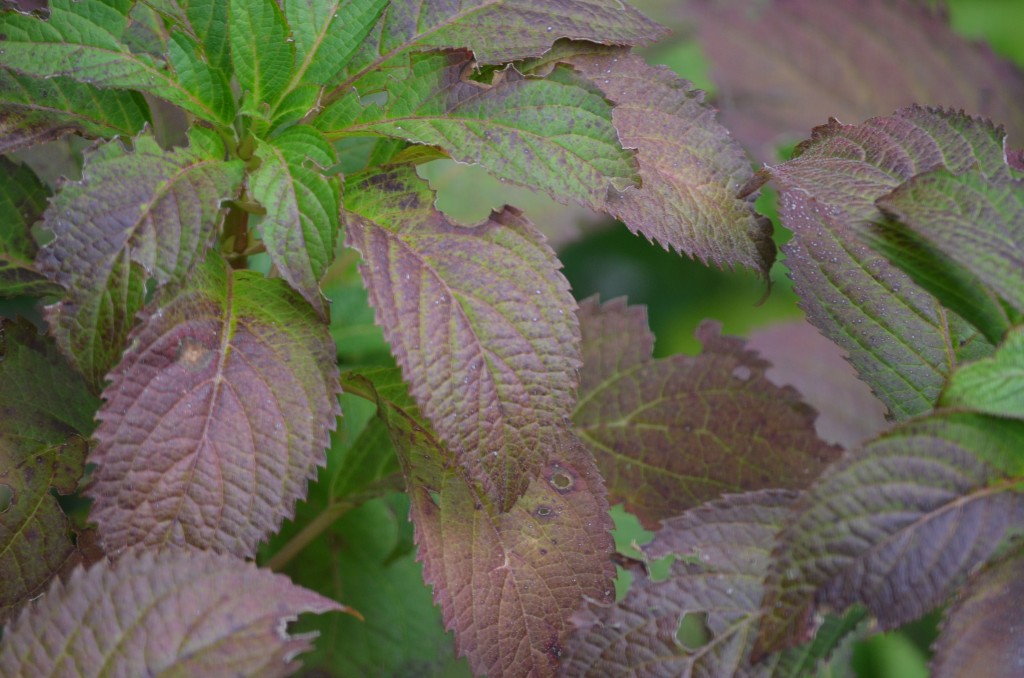
and the best part for me of this years late garden are the asters. As I have complained about before , rabbits think of asters as crack around here, Plant them and they WILL get eaten to the ground. The only exception thus far has been this very bushy light purple variety that was a gift division from a friend with no name attached . I have been trying to name it all summer, ( am currently reading the book “Asters” by Paul and Helen Picton) and have a few guesses. I started and will continue to divide it so I will have a few in each Fall border hopefullywith in a few years.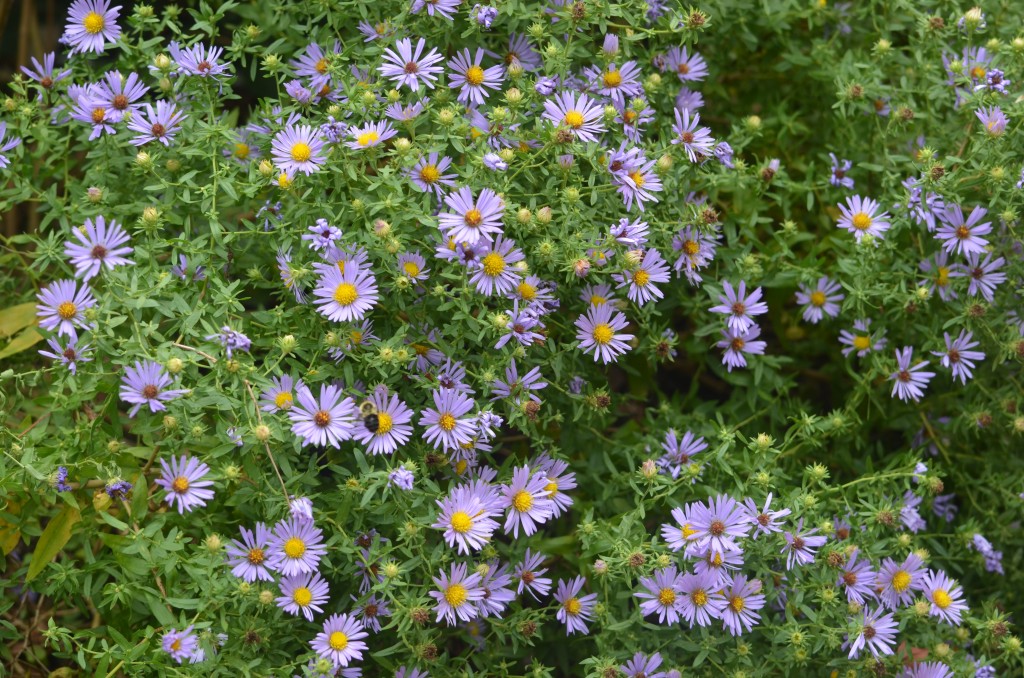
This teeny eeny sprig of bright pink Aster somehow got overlooked by the evil critters. I must go through the HUGE ziploc bag of plant labels from those who have gone to meet their maker and figure out it’s name.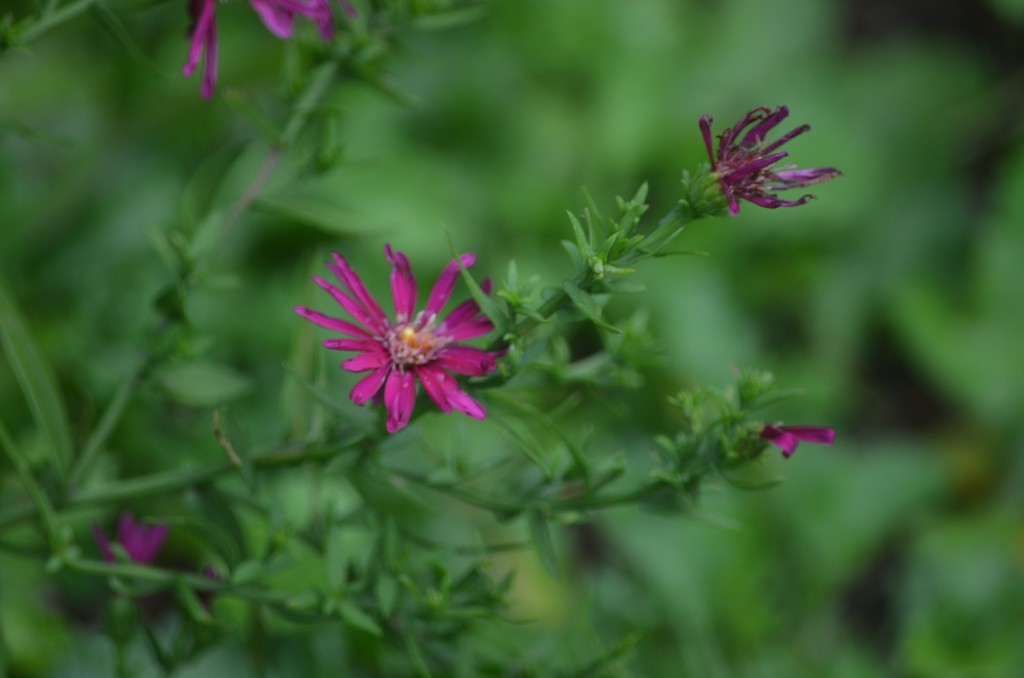
the blue woods aster is grown here in containers for safety , where it overwinters just fine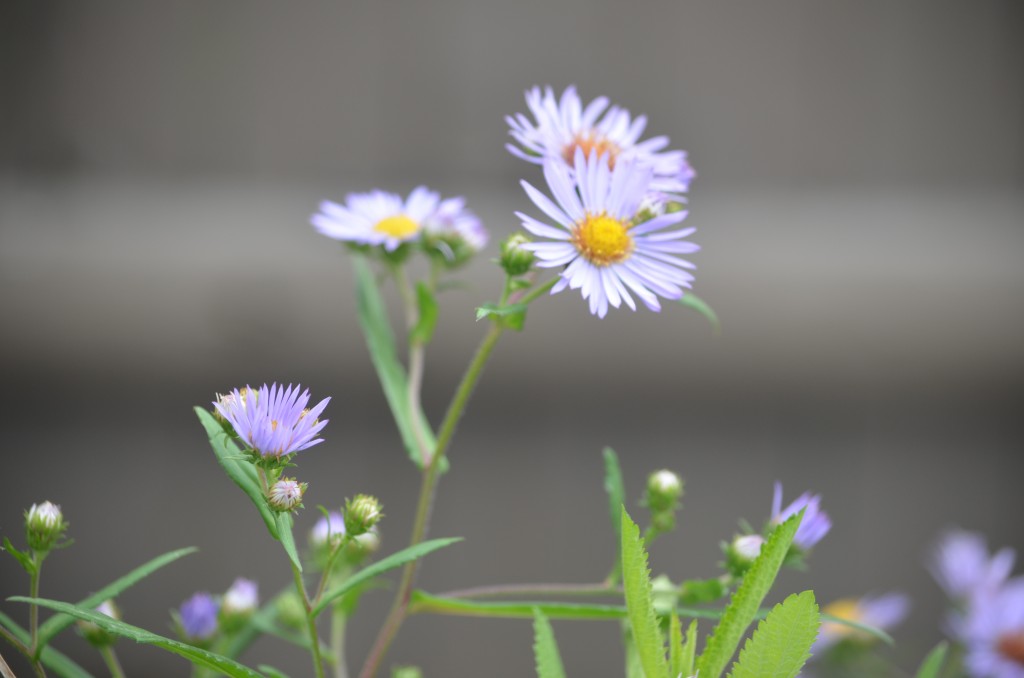
This year i added Aster lateriflorus ‘Lady in Black’ as an experiment. It has dark burgundy leaves, which usually get left alone by the bunnies, and so far, so good. It was planted in very early spring and is now a large, beautiful bee buzzing plant.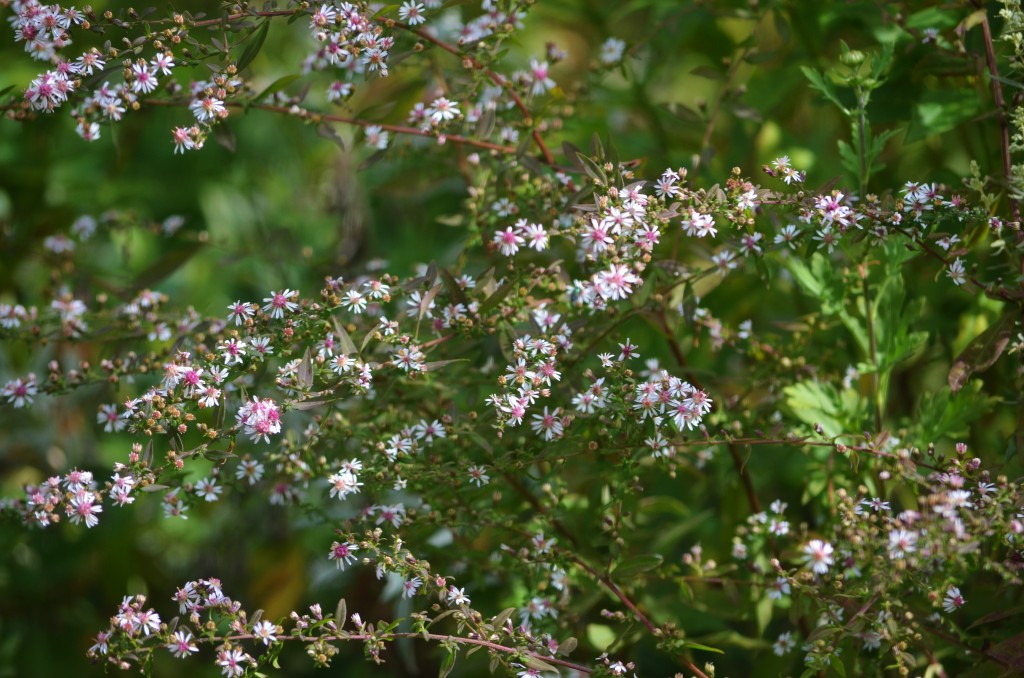
Of course many annuals are still part of the show. Cosmos ,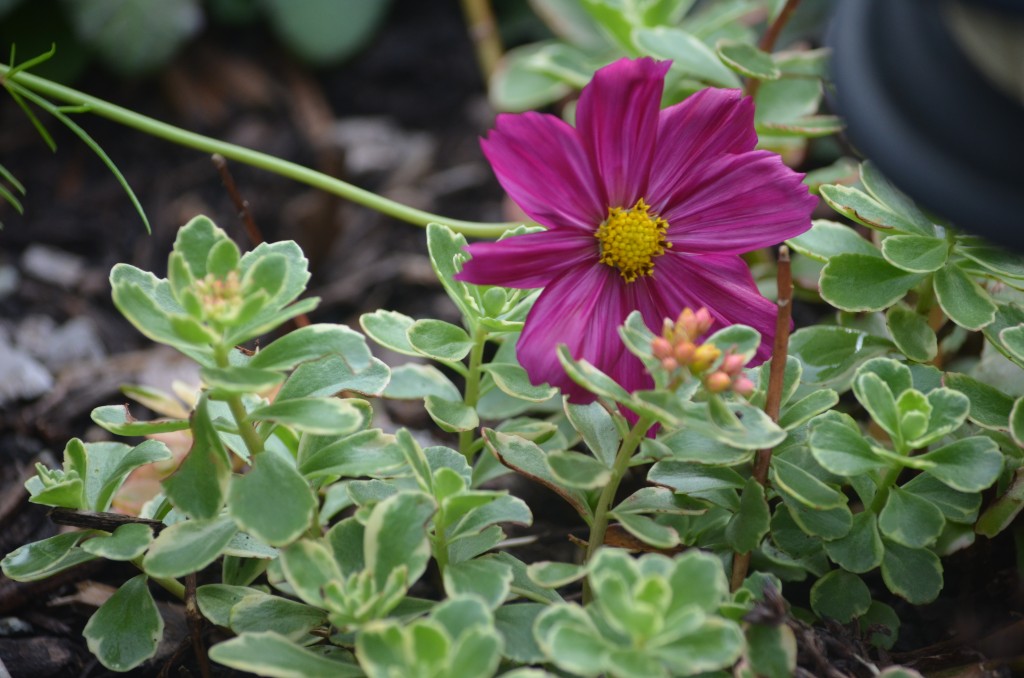
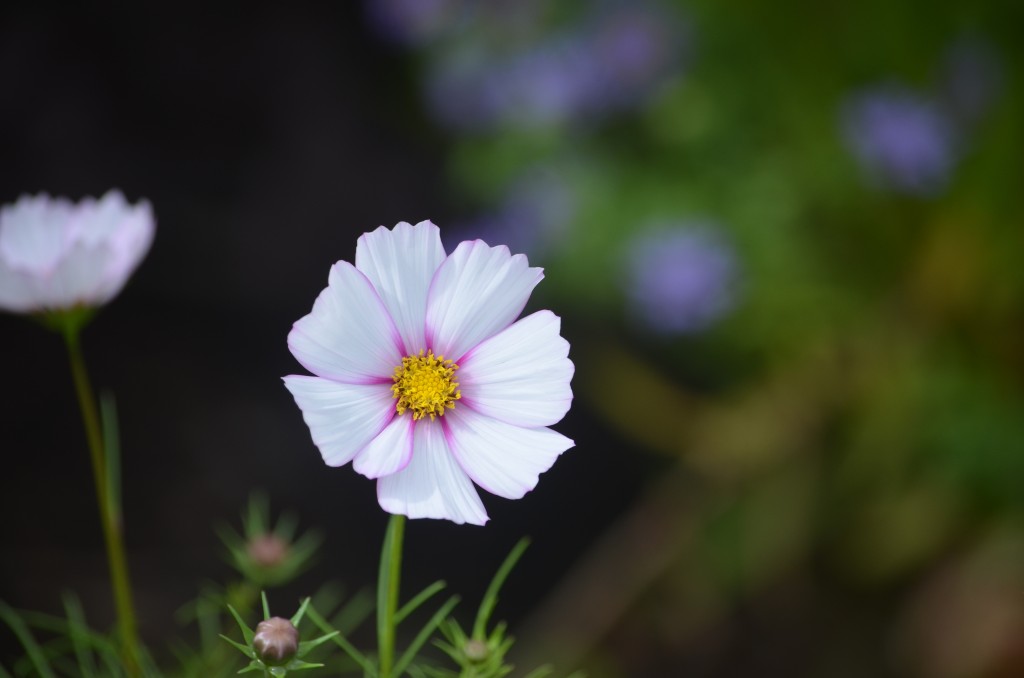
petunias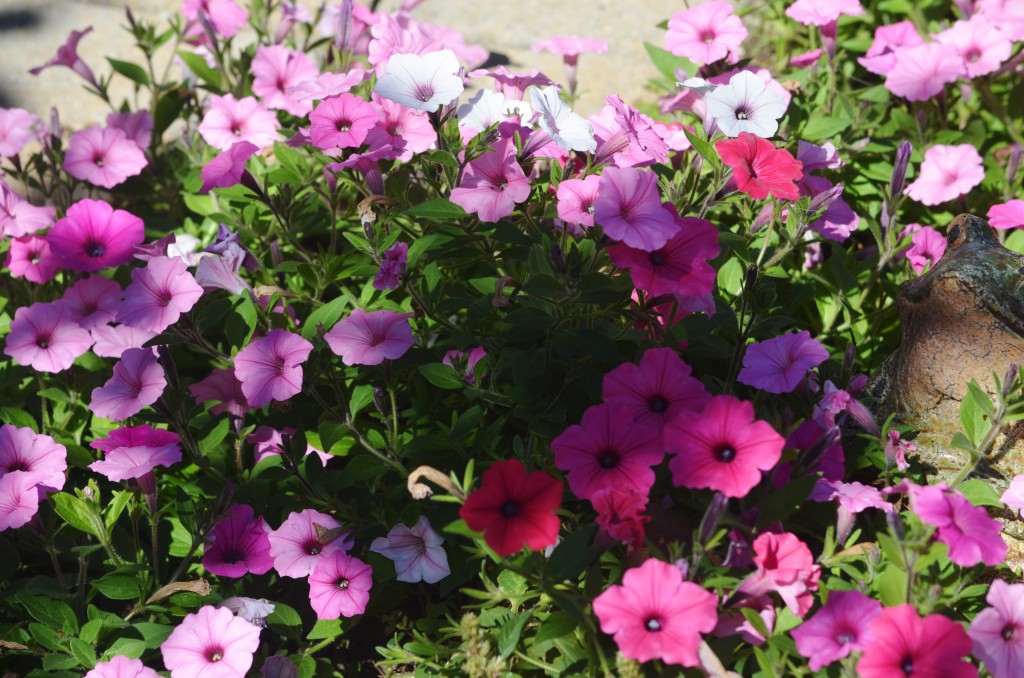
the new to me this year Daucus carrota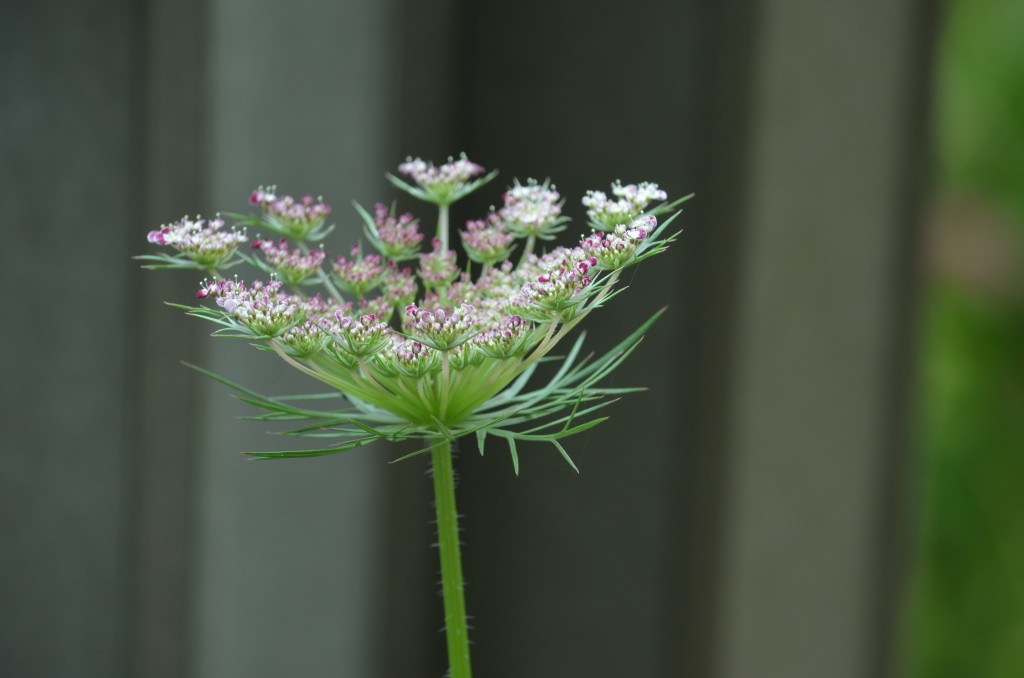
nasturtiums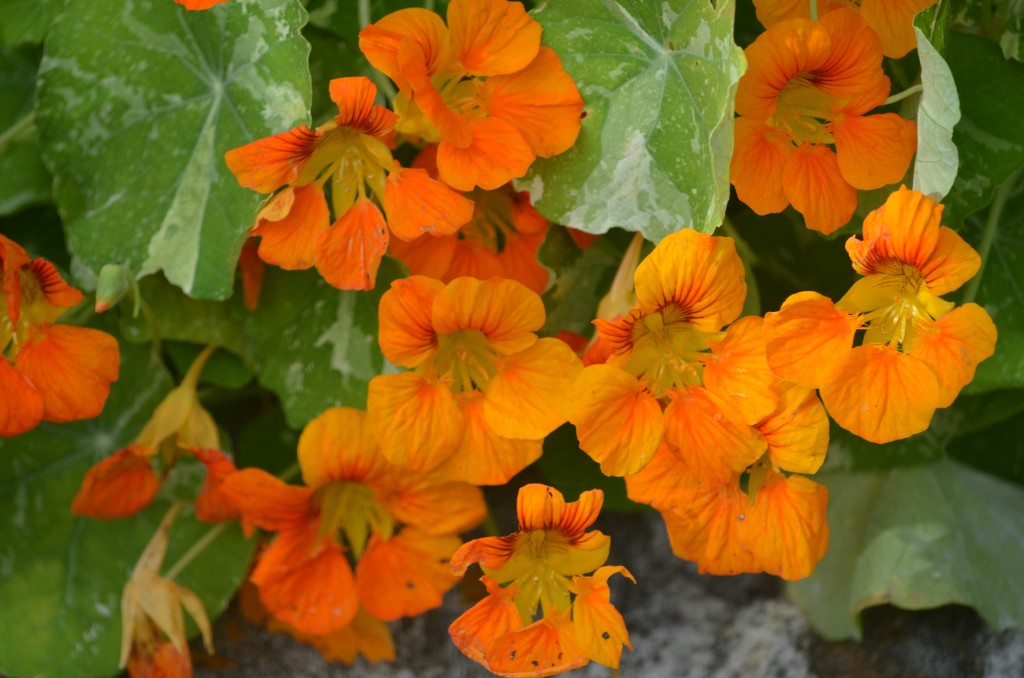
zinnias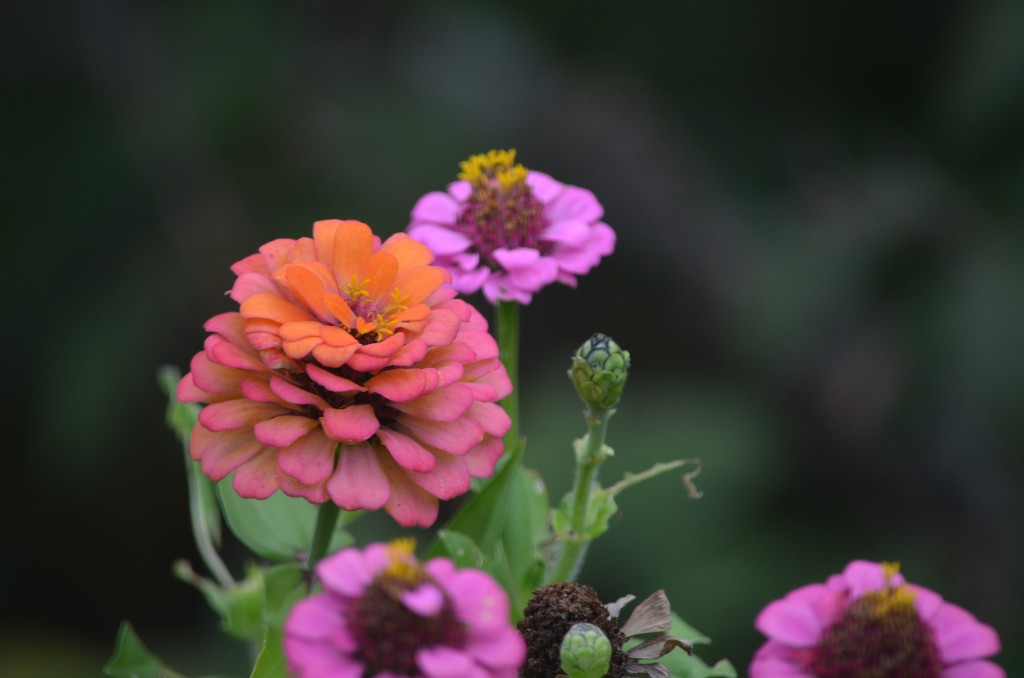
celosias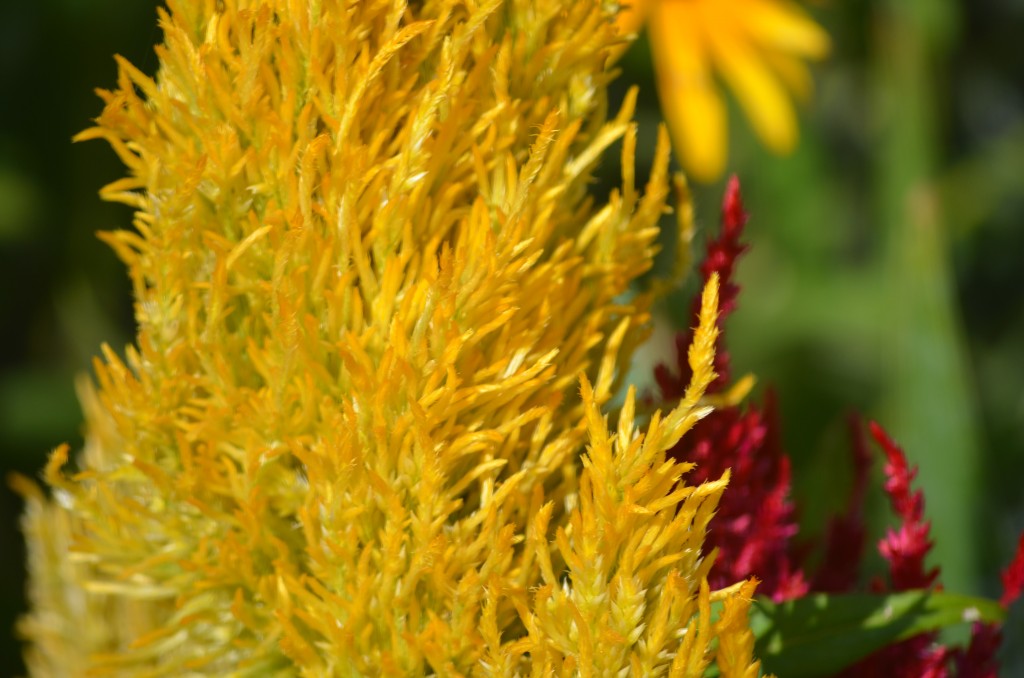
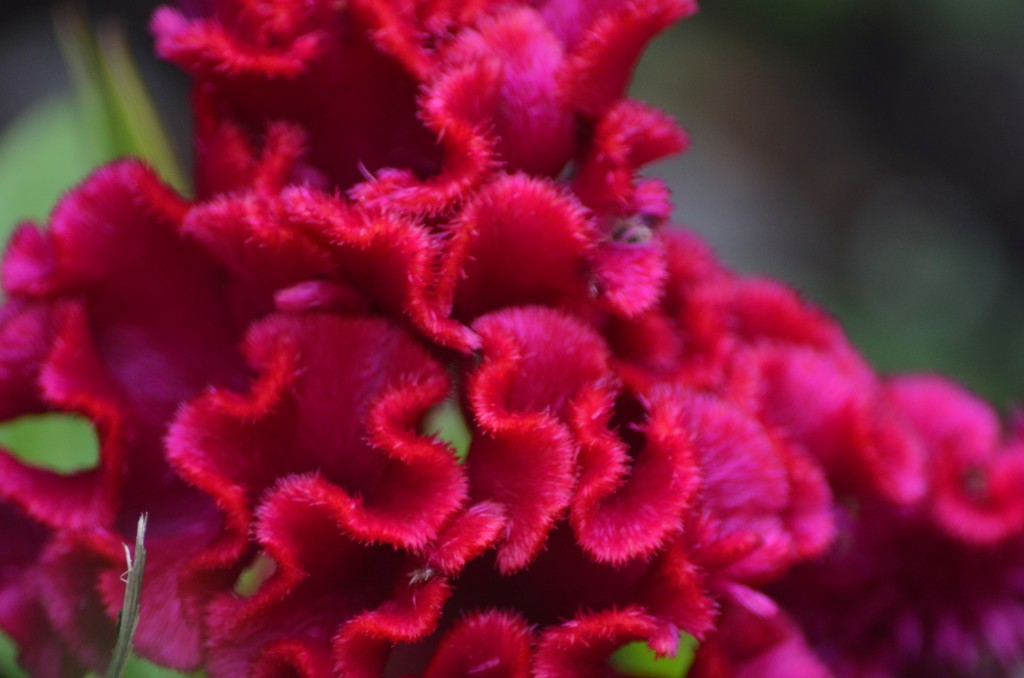 the amazingly tall and odd looking leonitis leonurus
the amazingly tall and odd looking leonitis leonurus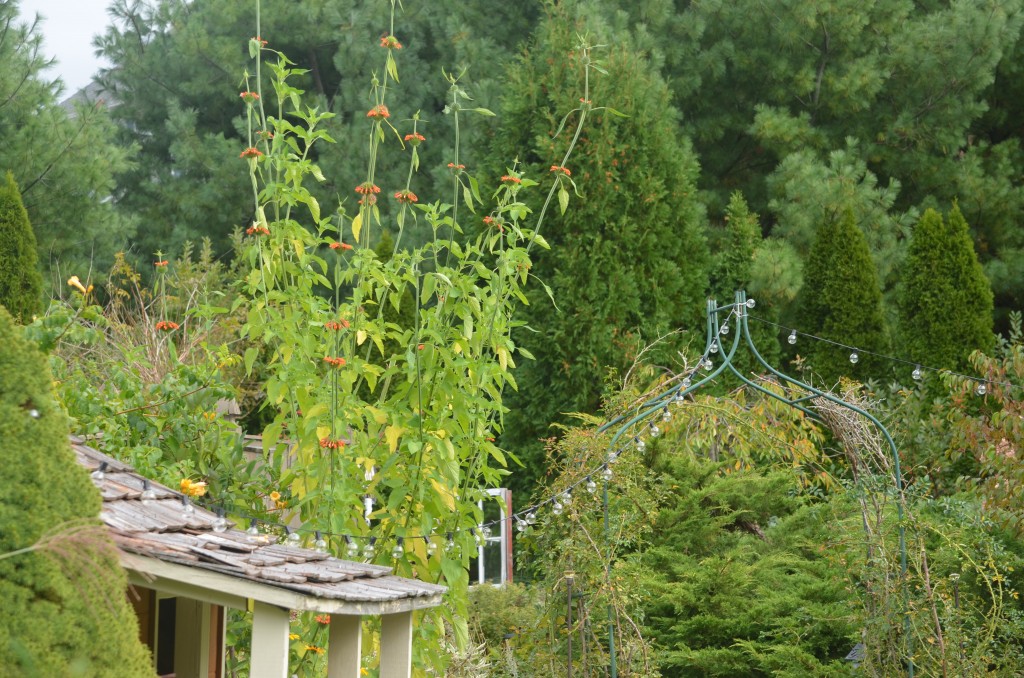
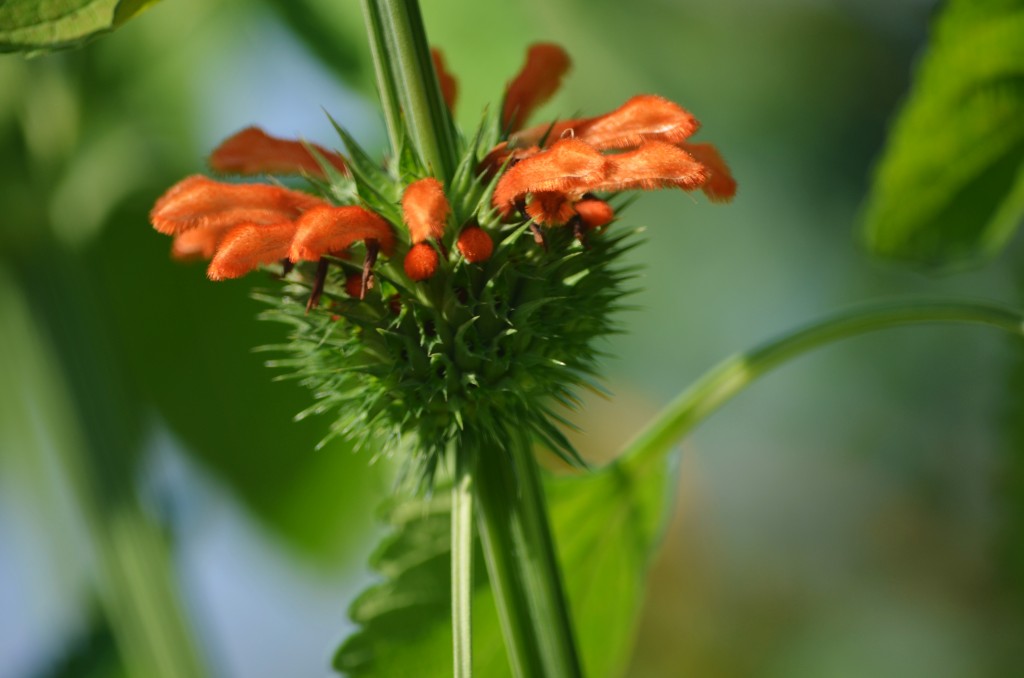
and it wouldn’t be me if there wasn’t whining so….here goes
WORST YEAR FOR DAHLIAS………EVER!
out of the 10 new varieties I added and the several I overwintered, I have ONE that has been blooming steadily called Ted’s Choice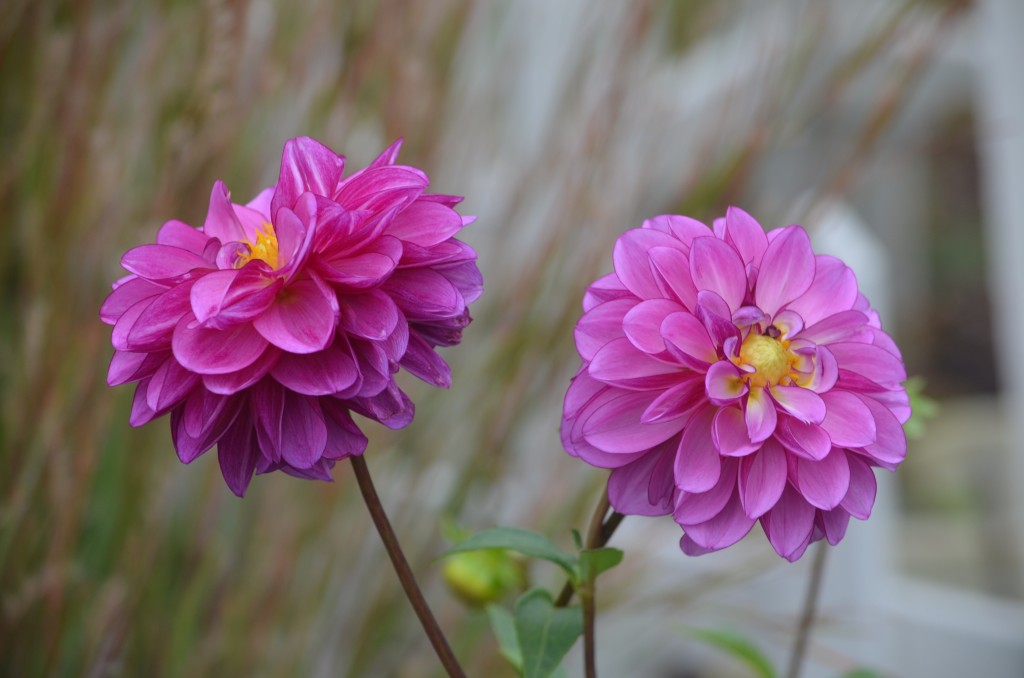 , three that bloomed sporadically like this one which is Enchantress ,
, three that bloomed sporadically like this one which is Enchantress ,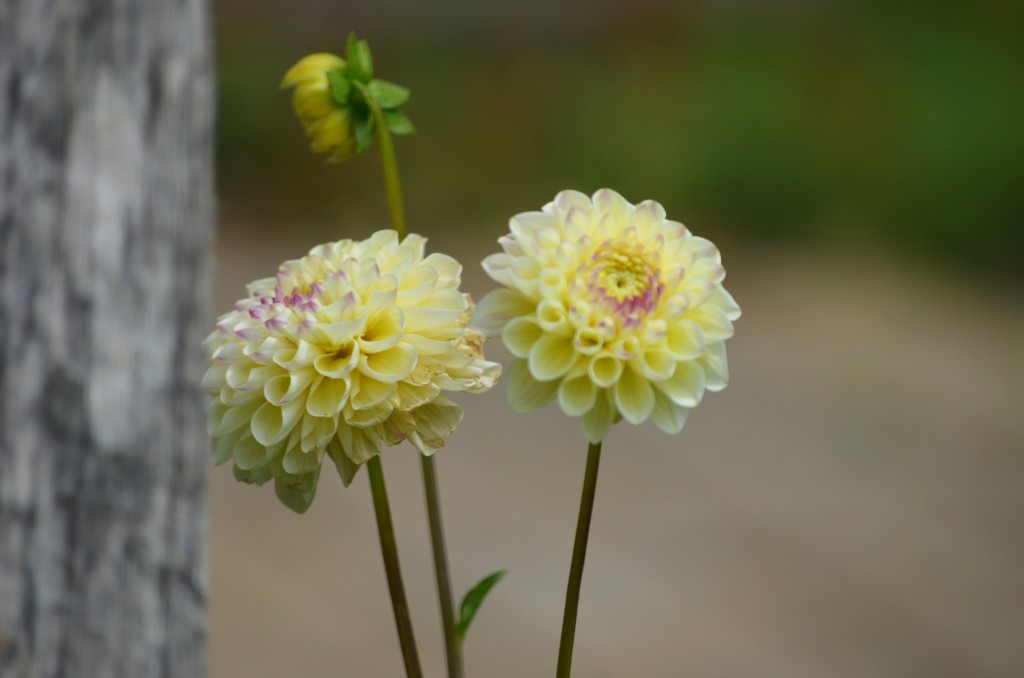 and the rest have yet t do a blessed thing.
and the rest have yet t do a blessed thing.
Good thing there are other things to look at!